No, it’s not just your nostalgia talking. While video games have, as millions of elders have articulated over the years, “come such a long way since Pac-Man,” so too has its music in the form of OSTs or Original Soundtrack albums. Composing music for a video game is an entirely different beast than creating a SoundCloud single or producing a studio album. It requires a certain level of thinking and in the earliest days had to be coded directly into the game’s level design, resulting in the powerfully kinetic tune that introduced the world to Super Mario Bros.’ theme in 1986. But in the near half-decade since that title, music in games, and the idea of music in games has evolved and flourished just as the overall gaming medium has. Now, not only do games fit equally onto cartridges and CDs, sometimes it’s designed through full orchestra, through collaboration with rock and roll artists, or even is fundamental to the flow of the game itself, and now the ancient downsampled 16-bit themes of the 1980s and 1990s have been homaged and superseded by some of the best indie games out there.
This is why The Young Folks’ Music section and Video Games section decided to collaborate on this massive list to amass our personal favorite 100 Best Video Game Soundtracks of All Time to celebrate the unique medium, to not only satisfy our nostalgia, but so I can make a new Spotify playlist for myself like a freak who needs 26-hour playlists to write to.
While this list of games is massive, we had so many others we loved that didn’t even make the cut, so if you don’t see your favorites, comment in the Disqus or hit us up on Twitter and Instagram to tell us your favorites on and off this list.
Happy listening,
Evan Griffin
PSA: this list excludes licensed music soundtracks, so unfortunately we had to skip iconic games with compilations like Tony Hawk Pro Skater, Guitar Hero, and Elite Beat Agents, but rest assured, we love those games too.
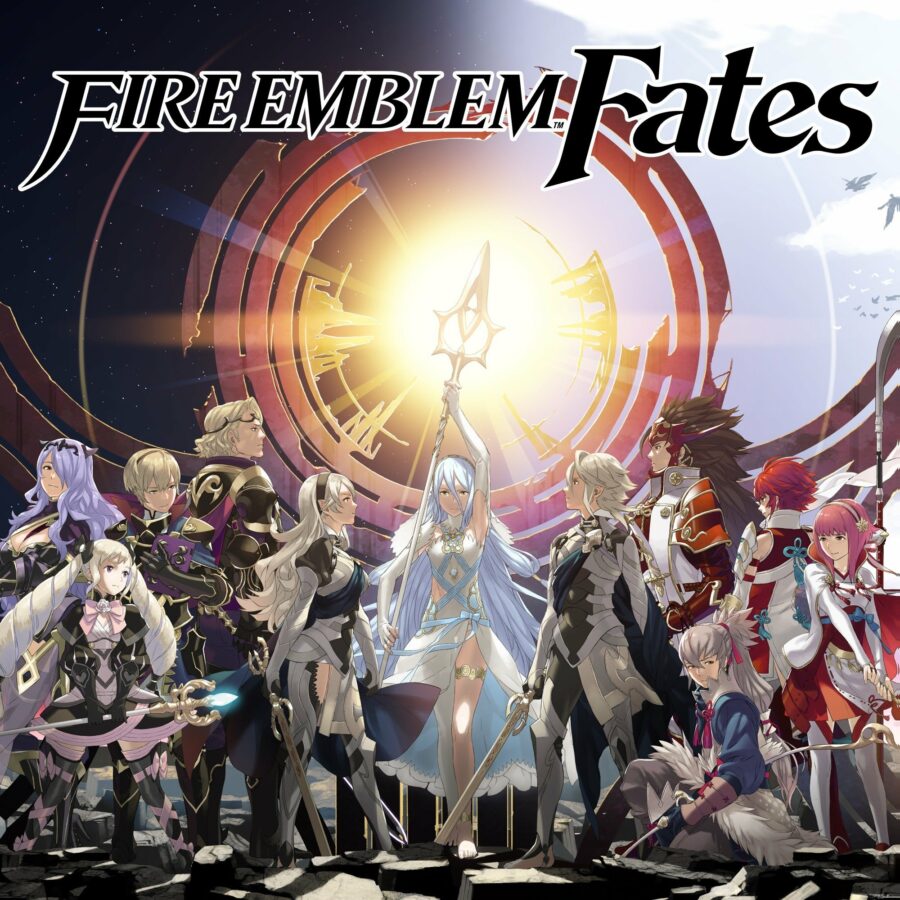
100. Fire Emblem Fates
Fates’ score has a really tough job compared to most Fire Emblem games – like the game itself, the music has to play a juggling act between multiple families of allies. While it’s debatable whether or not the games pulled off the three version feat, the score is much better off for it. Each side of the conflict has excellent representation through music, with Hoshido’s side reflecting its feudal Japanese inspiration and Nohr’s thirst for conflict permeating its own edge. What really ties it all together is the leaning on the instantly memorable “Lost In Thoughts All Alone” as a leitmotif across the entire game.
[Travis Hymas]
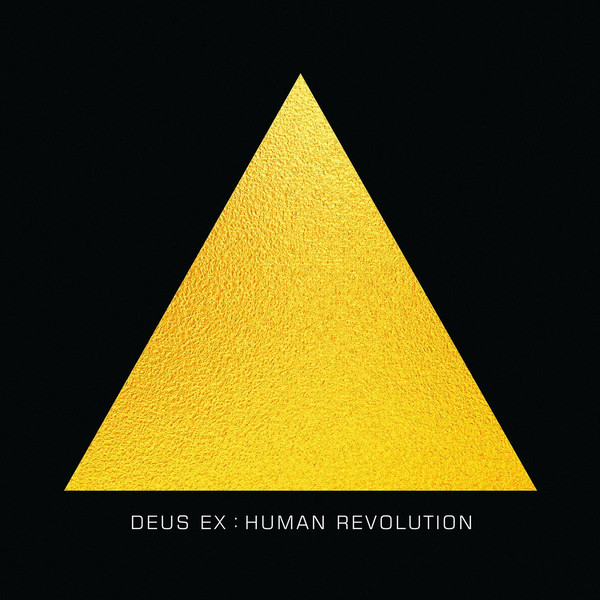
99. Deus Ex: Human Revolution
It’s not 2027 yet, but you can hear it from here. Michael McCann’s melodies don’t just provide extra color for Eidos Montréal’s sci-fi RPG—they also tell the story in their own way. You may think the union of ethereal vocals and punchy synths, or of Renaissance and cyberpunk, is jarring, but that’s the world Adam Jensen is in. The idea is to still be aware of the past, present, and future of the human-or-beyond conflict while standing still. Alternatively, it’s just nice knowing down the line someone will let Massive Attack-esque club beats joyfully jam with a Vietnamese folk song.
Advertisement
[Nguyen Le]
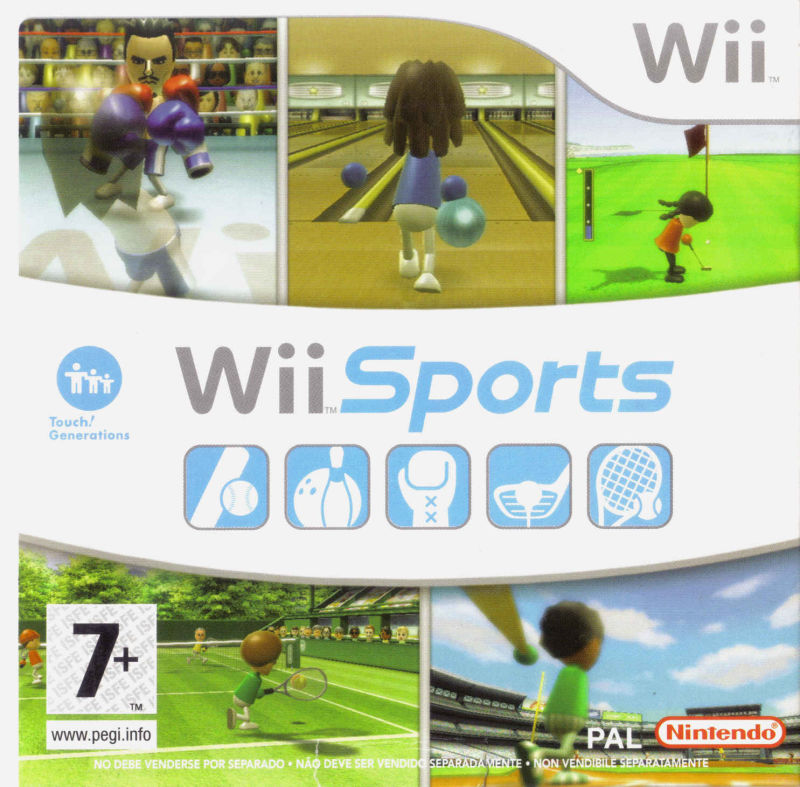
98. Wii Sports
The Wii Sports soundtrack is unique in the way that it elevates the experience of playing this game. Wii Sports is low stakes, depending on how competitive your friends and family are, but the calming soundtrack puts almost any player in a good mood, helping the tension and stress of competition and dealing with the Wii motion mechanics disappear into the air. Wii Sports is impossible to play in a bad mood, and it’s the catchy, whimsical music that elevates this game to legendary status, surviving long after the Wii’s relevance and permeates through memes and culture popular today.
[Amanda Remier]
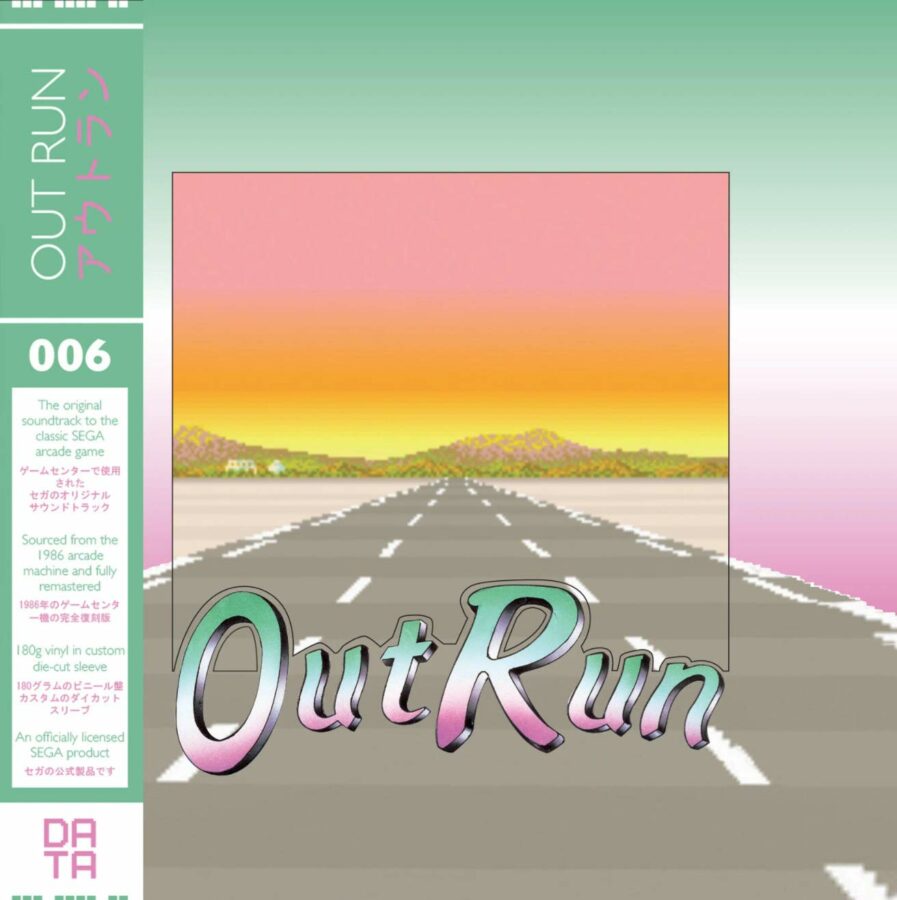
97. Outrun
You know an arcade game’s music is important to the experience of playing it when it lets you pick the song you’re going to play before you even start. Outrun features a selection of awesome instrumental synthpop from Sega’s own Hiroshi Kawaguchi, later a member of the company’s own in-house music group the SST Band. All the songs are memorable, from “Magical Sun Shower”‘s Latin stylings to “Splash Wave”‘s propulsive energy to “Passing Breeze”‘s light synth-jazz. Definitely a landmark soundtrack in every way, to the point where the later synthwave genre was once known simply as “Outrun” due to its overall similarity to this soundtrack [Ryan Gibbs]
Advertisement
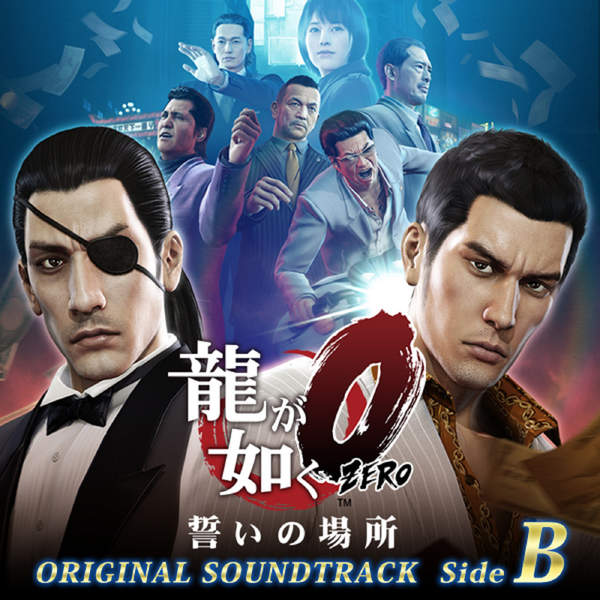
96. Yakuza 0
Sharing composer Hidenori Shoji with SEGA’s Super Monkey Ball, the Yakuza franchise has come around the other side from being one of the publisher’s more niche titles to among their most popular. The 2017 prequel, Yakuza 0, sees the origin of Kiryu Kazuma as he makes a name for himself in the gangs across japan, accompanied by hard metal, 80’s dance and synth music to absolutely wreck goons and collectors to the tune of throughout his quest. That, plus some of the game’s Karaoke tracks absolutely rip, one of which even became a meme in the form of “Baka Mitai” in 2020.
[Evan Griffin]
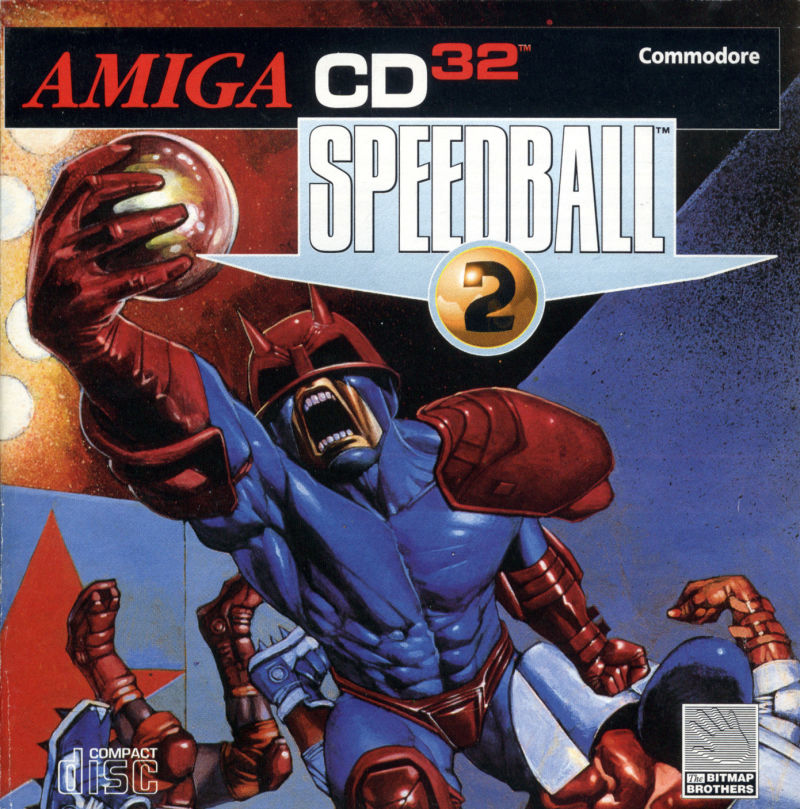
95. Speedball 2: Brutal Deluxe
One of the best games for the Commodore Amiga, Speedball 2 was a futuristic sports game thats something like handball turned into an intense arcade experience. It distilled all that was good about the first Speedball and seems like a distant ancestor of games like Rocket League. One of the best things about Speedball 2 is its music, a mix of dark techno, industrial and acid house that fit its dystopian futuristic setting. The music was created by Nation 12, a group led by John Foxx, the former singer of the synthpop group Ultravox who was one of the first mainstream music figures to ever work on a video game. Speedball 2 makes this list for not only that piece of music trivia, but also as a great soundtrack of then-contemporary music for one of the best gaming computers of its era. [Ryan Gibbs]
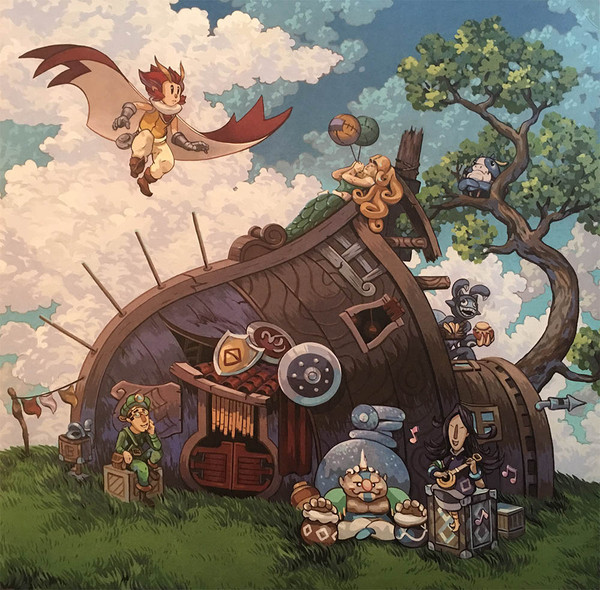
94. Owlboy
TV and Film composing veteran Jonathan Geer enters the beloved indie game with a score that boasts all the fundamentals of high fantasy animation. It emits the whimsical energy of the How to Train Your Dragon series and the works of Nobu Uematsu on the Final Fantasy and Chrono franchise. The unassuming pixelated indie adventure boasts a massive soundscape on par with Geer’s musical roots. Fan-favorite tracks include “Such Perfect Peace”, “Something Isn’t Right With the World”, and “The Final Ascent” to accompany some sweetly refined and wholesome platforming. [Evan Griffin]
Advertisement
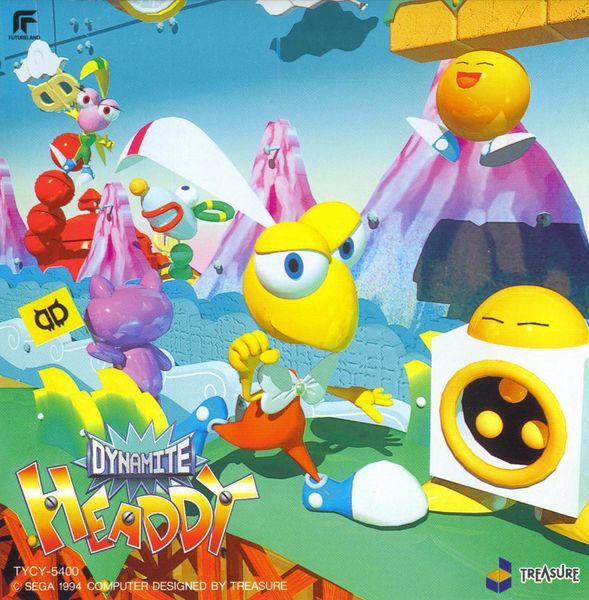
93. Dynamite Headdy
In Dynamite Headdy, an underrated Genesis platformer from culty admired developers Treasure, the songs are often multi-segmented and act as if they’re evolving as you go through the levels or the text. This is one of the best 16-bit soundtracks of that era, highlighting the charm of the FM sound chip found in the Genesis. It’s also a fairly long soundtrack too at over an hour, ensuring you’ll find something new to love every time you fire up the game.
[Ryan Gibbs]
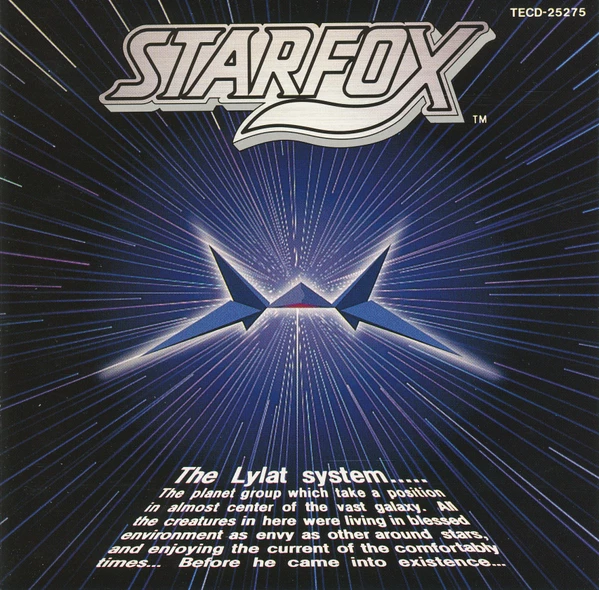
92. Starfox
The SNES game that revolutionized 3D graphical engines for Nintendo moving forward needed a soundtrack to propel players on the rail shooter title starring animals in fighter pilots. Hajime Hirasawa composed music on a small space allotment that had players blast enemies across the galaxy as the legendary first Fox McCloud, with planetary and earth-like terrane accompanied by jazz and funk influenced tracks, while going for more of an orchestral Star Wars scoring in the space dogfight segments.
[Evan Griffin]
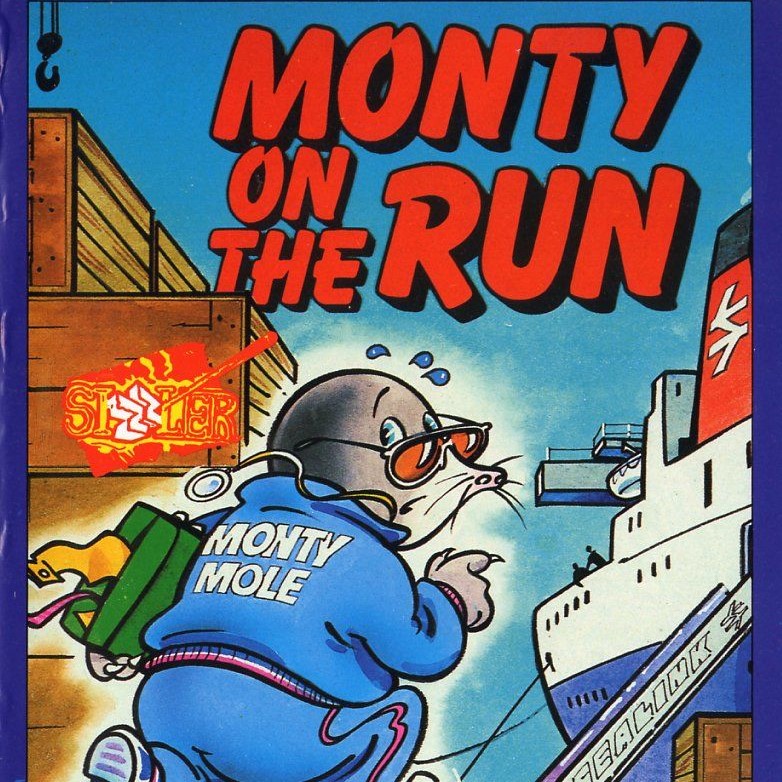
91. Monty on the Run
The best soundtrack by Commodore 64 music whiz Ron Hubbard, Monty on the Run has a soundtrack that is quite advanced for a computer game from 1985.
In an era and platform where most game music was around a minute long and highly repetitive as a result, Hubbard wrote a nearly six-minute track that has enough going on in it that it never gets old no matter how often you hear it.
[Ryan Gibbs]
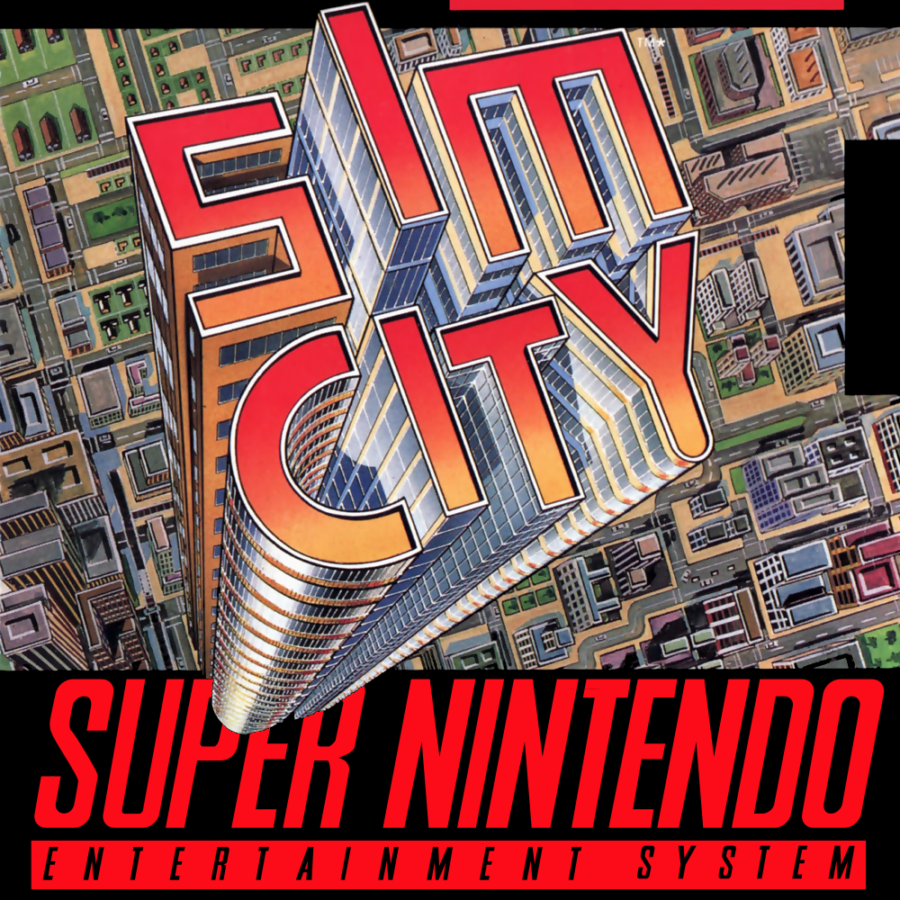
90. Sim City
A 1991 port of the original DOS version of the game, and following a never published NES version, Sim City was a launch title for the Super Nintendo. Considering this, it’s the only version featuring a soundtrack by Soyo Oka that emulates her pianist origins and her studies of Koji Kondo in a score that marries the state of the player’s growing towns. From “villages” to the “megalopolis,” Sim City’s score has a track that perfectly escalates in each scenario with complexity and tempo to emulate soundscapes of these bustling towns and cities, conveying to the player the expanding community they’ve built. [Evan Griffin]
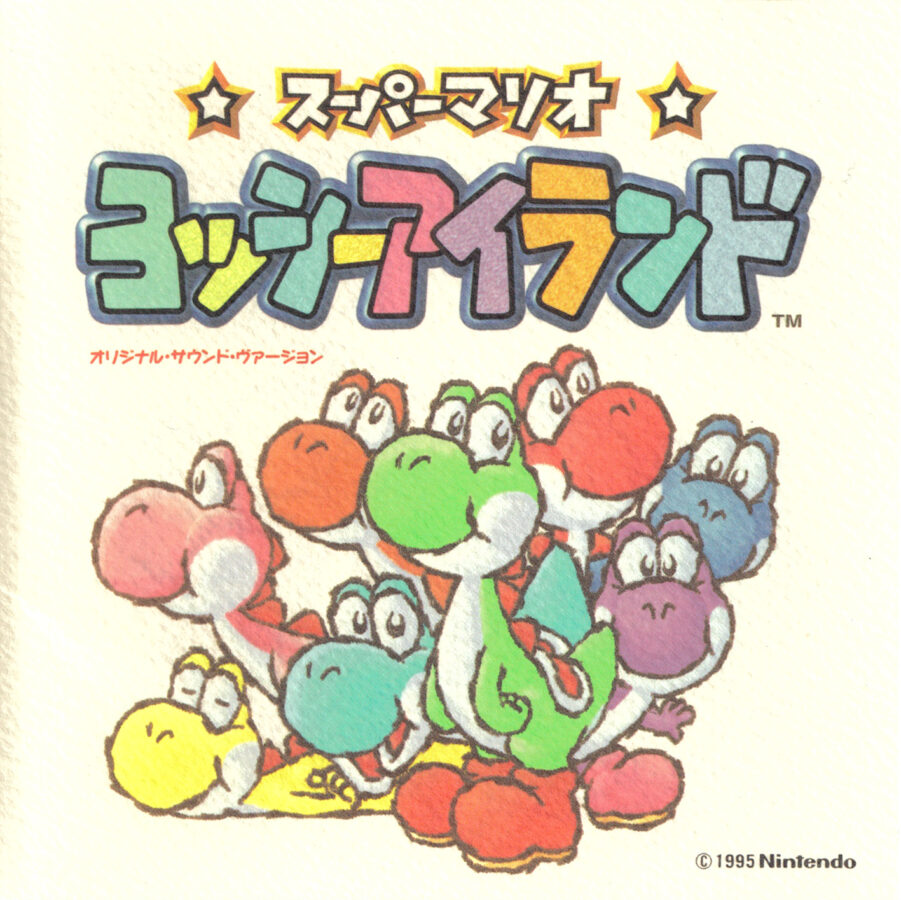
89. Super Mario World 2: Yoshi’s Island
Koji Kondo returned yet again to the Mario franchise for Yoshi’s first starring game. This title did as much to sonically define the green dinosaur as Donkey Kong Country did for the great ape. As Yoshi escorts a baby version of Mario across his home island, lullabies and music box tracks play a major part in this score to make it distinct, but the most iconic Yoshi tracks to this day come from the stages and battles which delve further into the jazz and swing infused composition in the Super Nintendo’s 8-Bit channels. Players have spent years perfecting their playstyle so as not to trigger Baby Mario’s brutal cry simply to continue enjoying this game’s chipper, motivational tunes. [Evan Griffin]
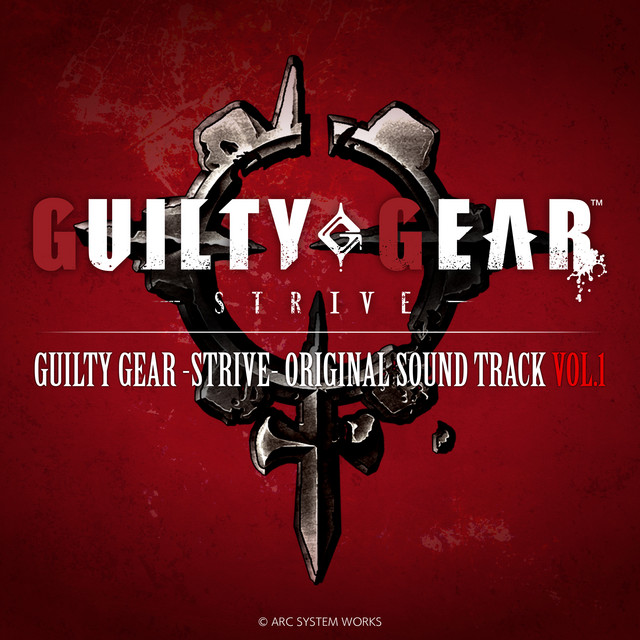
88. Guilty Gear Strive
The Guilty Gear franchise is one completely bursting with musical references, and every entry in the series has memorable, banging soundtracks, but I would have to say that the Strive soundtrack has completely drawn in a whole new wave of players by itself. The opening theme, “Smell of the Game,” only played for 40 seconds in the first trailer when it set the FGC ablaze with hype, for players new and old. As the soundtrack trickled out with character trailers, we received the blessing of an absolutely stellar OST on release. The mix of strong vocals and screams with heavy riffs on “Love the Subhuman Self” make it a fan favorite, while other songs like “Out of the Box” and “Disaster of Passion” are a whole different kind of vibe. There’s not a single track that falters, and it’s probably my favorite fighting game soundtrack, period. [Aaron Reyes]
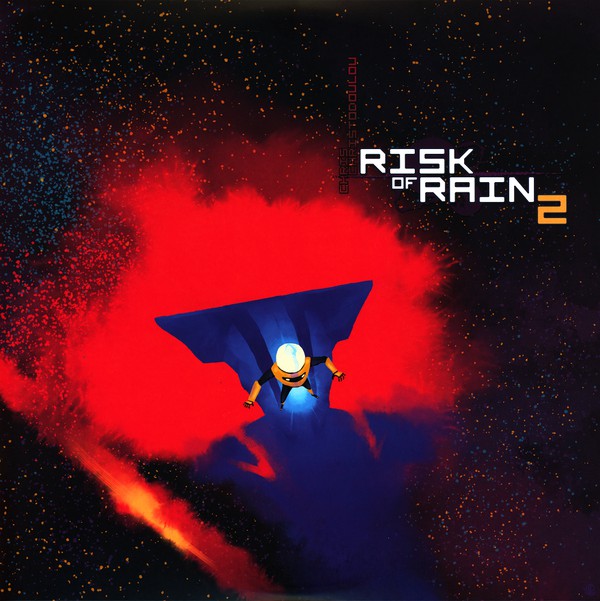
87. Risk of Rain 2
The original Risk of Rain is an overlooked gem, and it’s been a pleasure to see the overwhelmingly large positive reaction to its 3D sequel. The atmosphere of survival on a hostile planet that you REALLY shouldn’t have come to is what brings the whole game together, and Chris Christodoulou returned with another assortment of synth-heavy, oppressive tracks that bring the tension high. Themes of levels as you explore are slow, brooding, and make you feel the tension as you search desperately for the teleporter to get you the hell out of there, with tracks like Pluviam. There’s no respite to be had, though: when the bosses spawn, the soundtrack lets you know that this is a fight for your life with tracks like “Thermodynamic Equilibrium” or the charmingly named, pulse-pounding “Gonna Need a Bigger Ukulele.” You’re not welcome here: prepare for a downpour. [Arron Reyes]
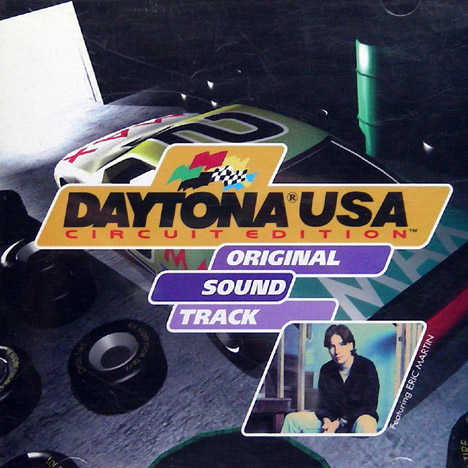
86. Daytona USA
“Daytonnaaaa! (Let’s Go Away)”
Daytona USA only has couple tracks on its OST, but both, along with an additional secret song and shorter music segments, are inspired jazzy funk-rock tunes that are perfect for racing. SEGA composer Takenobu Mitsuyoshi wrote, composed and sang all the music, which was then sampled onto a soundchip to be incorporated into the then-brand new Sega Model 2 arcade board. Daytona USA paved the way for many other 3D racers with awesome soundtracks, but it also still stands the test of time as cool sounding music for driving a polygonal car around a track. [Ryan Gibbs]
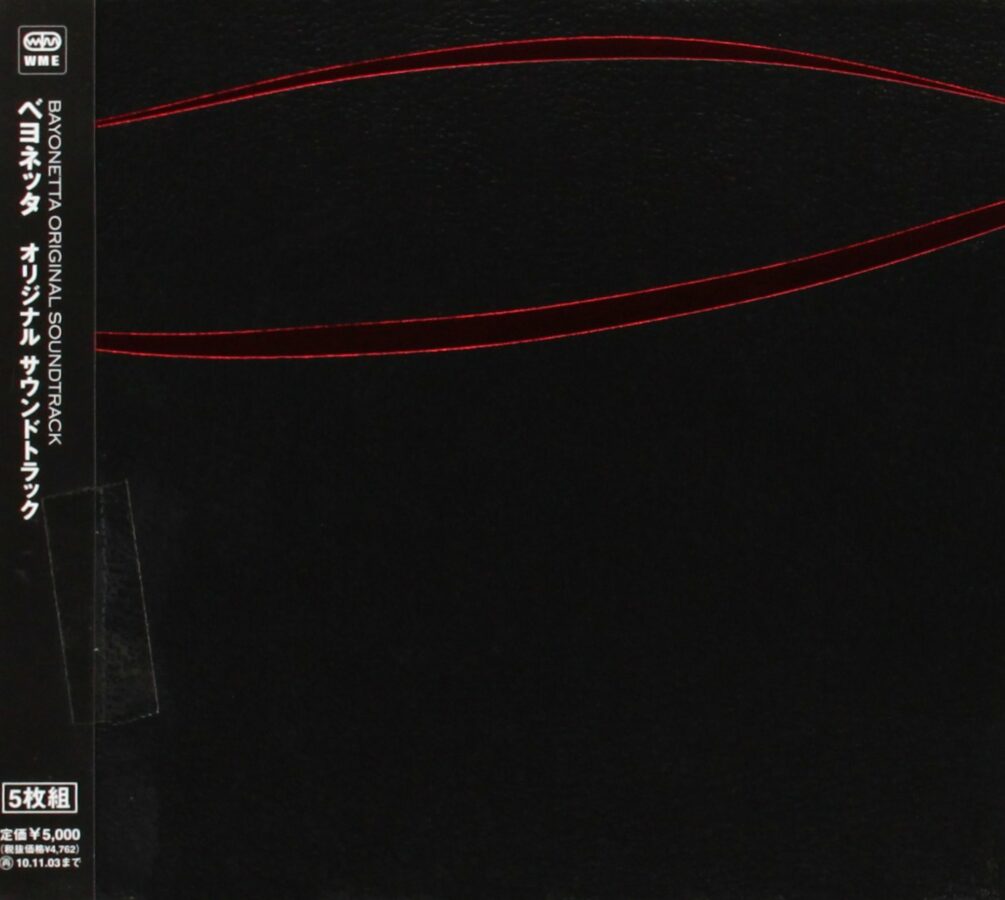
85. Bayonetta
Sometimes, everything in a game serves a single purpose – be cool as hell. Bayonetta’s soundtrack is diverse to suit its mission to make the titular witch look badass. The soundtrack switches between angelic chanting and jazzy renditions of “Fly Me To The Moon” so fast, anything less committed to the bit would fall flat. For the surprisingly rich lore and style of Bayonetta, though, it’s an excellent build to the climax. Those climaxes, in which all the aspects of the soundtrack are rolled into mind-blowing action set pieces, are pulled off with the same kind of perfection Bayonetta herself demands. [Travis Hymas]
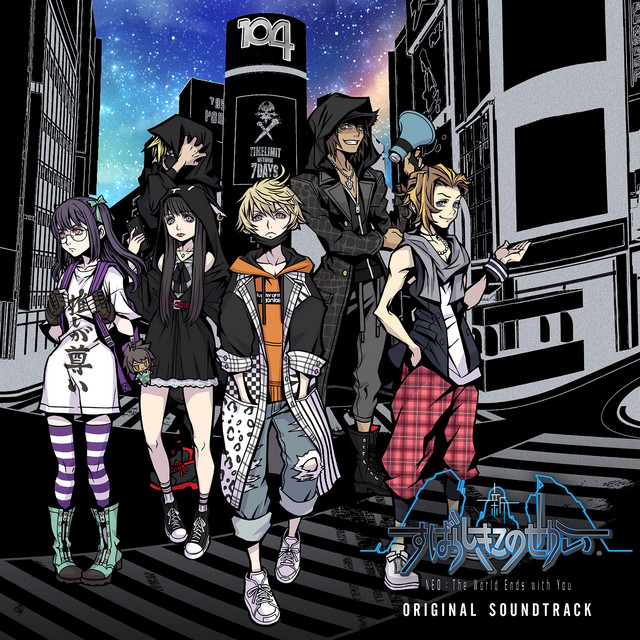
84. The World Ends With You
The music of Tetsuya Nomura’s other wild ride is protagonist Neku’s mismatched playlist of high energy street music, and that’s not a complaint. Blending 2000’s loop scene with Japanese Idols and a little dash of 90’s alt-rock creates a real killer tracklist. No track on TWEWY’s list is filler and is a great alignment for the dual-screen frantic nature of its combat. When not fighting directly for their lives, the same music creates a lively atmosphere around the completely static image and text driven storyline.
[Travis Hymas]
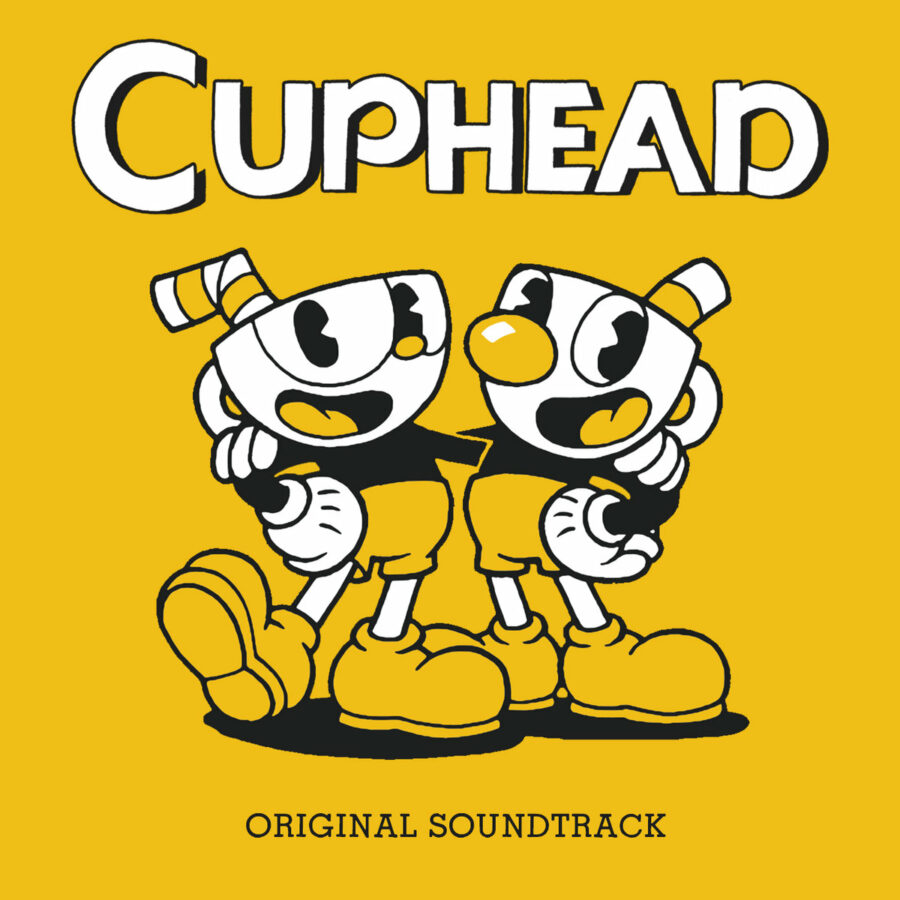
83. Cuphead
Most video game music falls into two categories: discount Hans Zimmer grandiosity or chipper electro-pop. With Cuphead being modeled after the elastic madness of Looney Tunes and Tom & Jerry, the music had to be as zany as the bosses trying to squash the titular craps player. Not only do the jazz and swing numbers composed by Kristofer Maddigan fit the mood of nearly every level, but they’re performed with such energy and accuracy (even with the grainy filter layered over each track). The backing track for “The King’s Court” has the exhausting drum work that Mr. Fletcher from Whiplash would smile at, while the horn sections in “Floral Fury” add as much pressure to the player as the scary flower boss itself. [Jon Winkler]
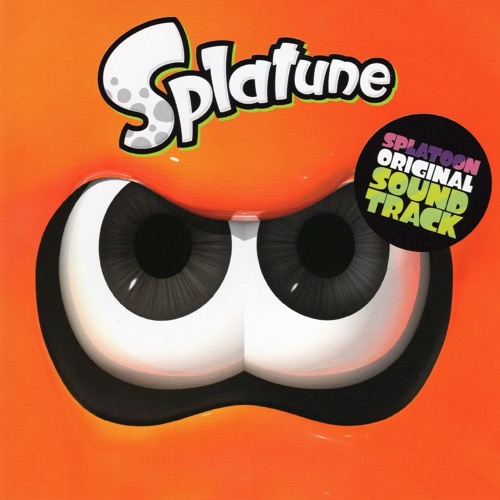
82. Splatoon
How many games on this list have hologram concerts centered around its in-game idol characters? Splatoon puts a lot of weight on its music and lets the high energy riffs and ska-inspired Inkling lyrics pump through every stage and ties directly into its very lore to make sure you’re always listening to it. That’s never a bad thing, Splatoon’s music is exactly the kind of fist pumping anthems you’d want for the chaotic arena matches. Even in the most tilted of rounds, it’s really hard to not bob your head and even sing along to the game’s nonsense language.
[Travis Hymas]
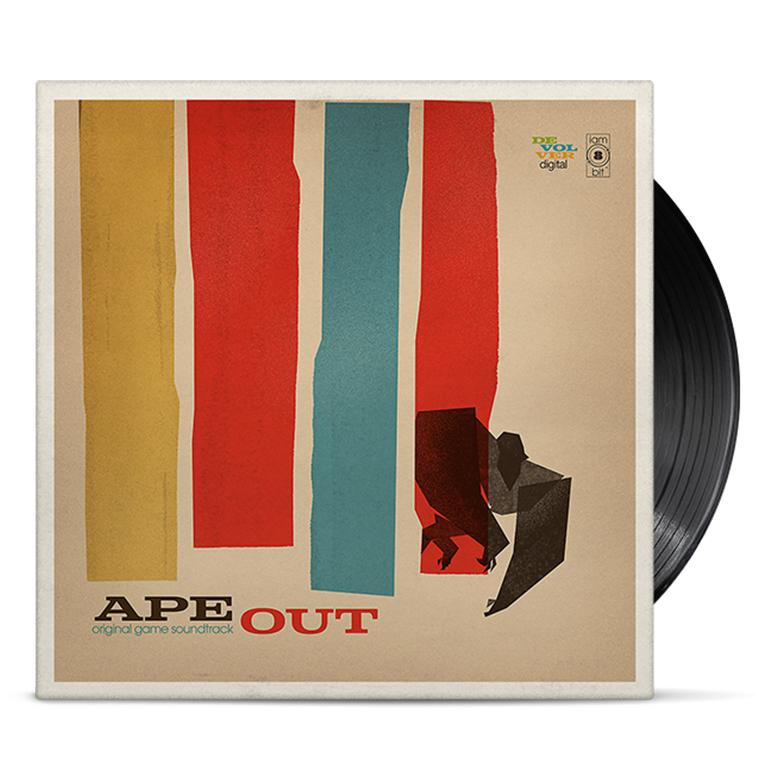
81. Ape Out
An indie title that looks and moves like a Saul Bass film poster, Ape Out is a game where players control an Ape breaking Out of a lab. True to the same era it is visually inspired by, composer Matt Boch assembled the soundtrack of minimalist percussive jazz to keep player momentum through each level.
The score blossoms in an adaptive construction technique, as the ape’s movement, is signified by the pace of a drum, throwing enemies across the room with crashing symbols, and shotguns from guards blasting across hallways to boot.
[Evan Griffin]
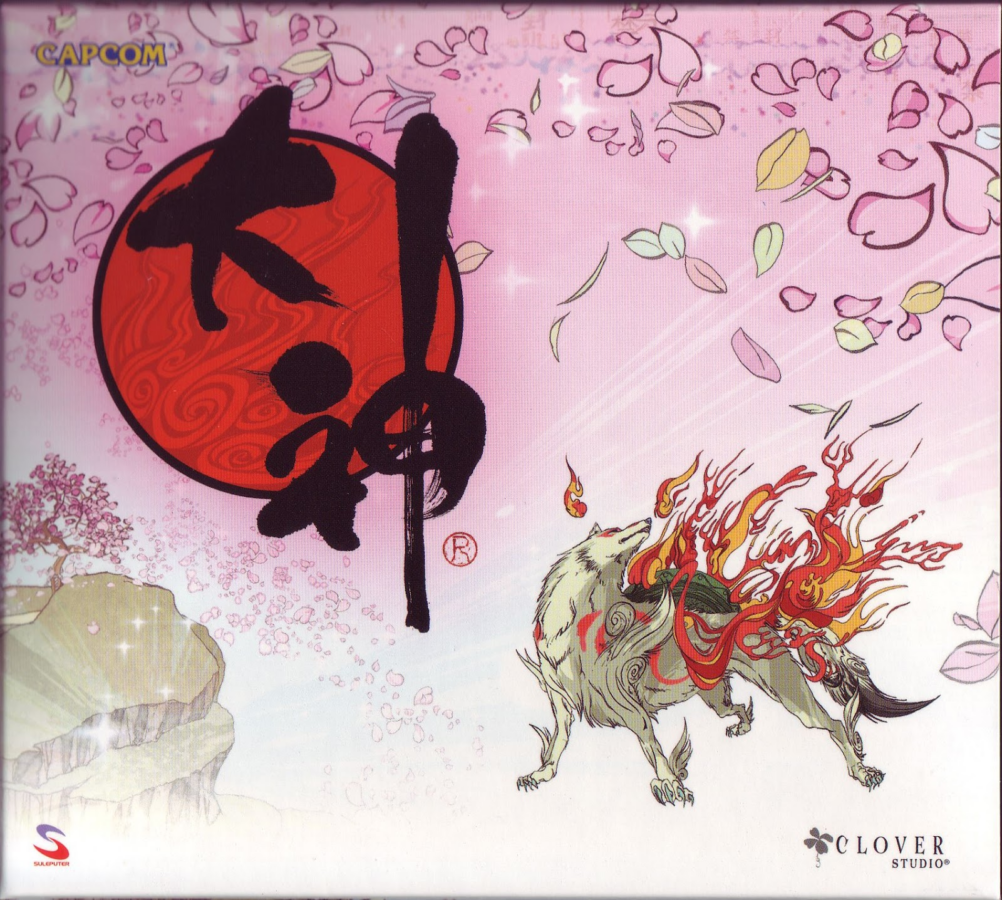
80. Okami
As striking as it is elegant while maintaining a perfect balance between the two, the music of Okami heavily employs traditional Japanese instruments to match the sumi-e inspired art style for a breathtaking display of Japan’s artistic heritage. With a roster of composers who’ve worked on titles like the Resident Evil series, Mega Man, Bayonetta, and some more recent Fire Emblem games in their portfolio, it should come as no surprise that this soundtrack exemplifies the very idea of video games as an art form. From front to back, even without the context of the game, a truly transcendent experience. [Jordan Lee]
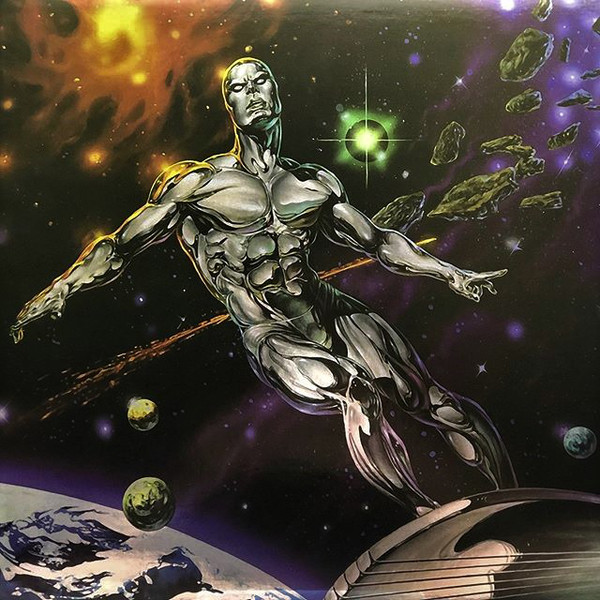
79. Silver Surfer
Tim and Geoff Follin are among the most beloved composers of the 8 and 16-bit era, able to conjure music that pushed the boundaries of the systems they were made for. Most of the time, their services were used on pretty crummy games. For instance, here we have their soundtrack to 1990’s Silver Surfer, an unfair and unfun Marvel-themed shmup for which they wrote a set of synthpop space funk bangers that are far and away the best part of the game. Written entirely in assembly code and not even using the console’s DPCM sample channel, what you get is some of the best-sounding music ever made for the NES and something that even stands up to the arcade music of the time. One of the most groundbreaking soundtracks of its time, all in service of a bad licensed game. That’s the Follins’ in a nutshell for you. [Ryan Gibbs]
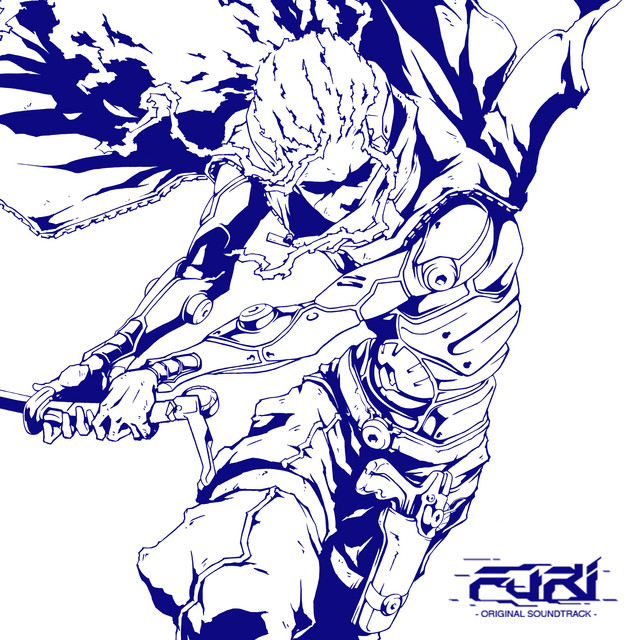
78. Furi
With tracks contributed by Carpenter Brut, Danger and The Toxic Avenger, The Game Baker’s indie release Furi is one of many electronic and synthwave infused scores in video game history, and it certainly isn’t the only one on this list, but the way these tracks captures the energy of it’s boss fight only structure is masterful. Stand out tracks include “You’re Mine” and “My Only Chance” not only are well composed pieces that could fit into the genre on their own merit, but they drive player adrenaline to keep up the pace in some of the game’s most challenging battles.
[Evan Griffin]
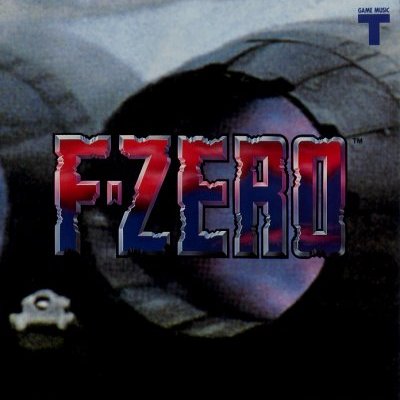
77. F-ZERO
It can be easy to forget that video game soundtracks had to be created with equipment that pales in comparison to today. Nintendo managed to create a wide range of music with a 16-bit sound processor on the SNES, and F-ZERO is definitely one of the most impressive. While everyone knows “Big Blue” and “Mute City” as tracks that absolutely slap from the Super Smash Bros. series, this is where they got their start. The sci-fi powered super speed implied by the gameplay is complemented by a fast electronic rock sound that sounds like guitar solos without any instruments. F-ZERO proves that not every sci-fi franchise needs to sound the same – especially important for Nintendo’s sci-fi heavy first party slate on the SNES. Also, legendary SEGA composers did an ultimate remix for the GameCube title, F-Zero GX which you absolutely should play even though you can’t. [Travis Hymas]
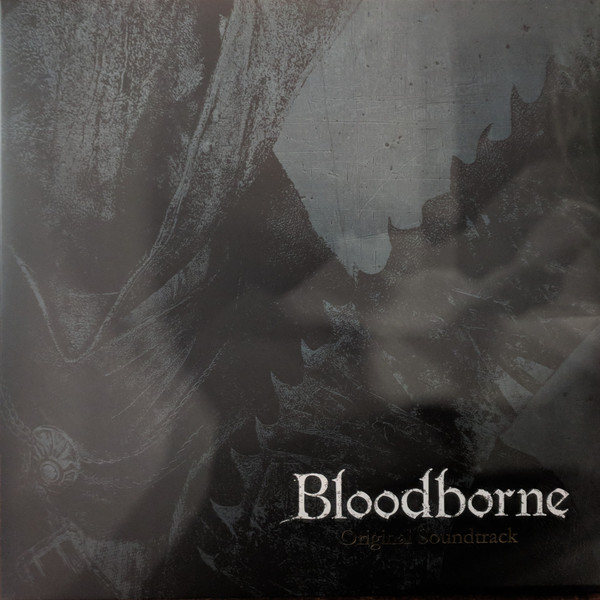
76. Bloodborne
A Victorian Gothic fever dream packed with beasts that stand toe to toe with the best Lovecraft has to offer, the music of Bloodborne is appropriately spookier in both atmosphere and composition than the rest of its sibling series of Souls games. A global collaboration of that relies less on bombastic explosions in favor of somber choirs and melancholic orchestration inspired by classic monster films like Dracula, the score slowly morphs into something more out of this world as the moon rises higher throughout the night of the hunt, following the narrative’s descent deep into the increasingly horrific nightmare that plagues the cursed town of Yharnam.
[Quinton Parulis, Guest Contributor]
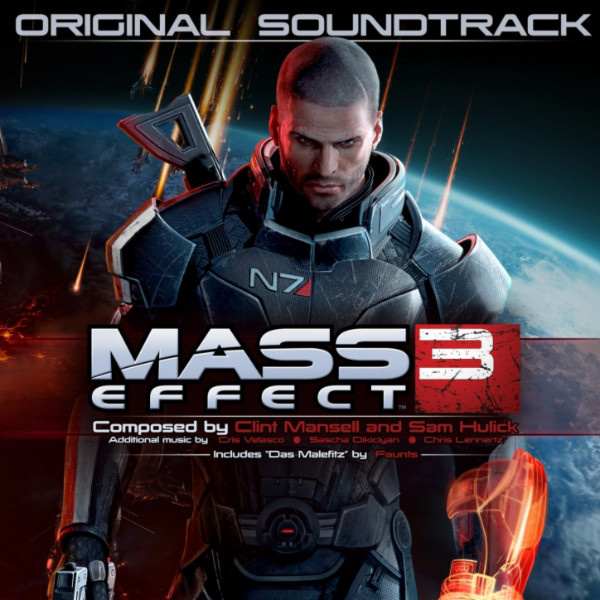
75. Mass Effect 3
Over the series of the Mass Effect games, things go from not great to the end of the world for all sentient civilizations. That’s quite a drastic change. By the beginning of Mass Effect 3, Earth is under attack. This game’s soundtrack has quite an undertaking to explore this through the music, not only containing a soundtrack that reminds you of the world before, but also takes the player to this new universe on the brink of extermination. Not only does the soundtrack convey the chaos of battle, but also the grief of all that has been lost, making it particularly effective for this popular franchise. The track “Leaving Earth” alone is so impactful that it feels representative of the tone of any and all melancholic sci-fi epics nearly ten years later.
[Amanda Remier]
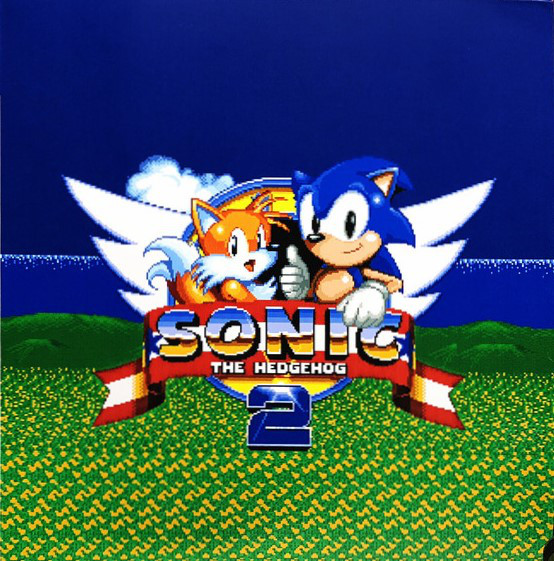
74. Sonic the Hedgehog 2
With the sequel to SEGA’s iconic mascot, Sonic the Hedgehog 2 does for his franchise what Mario 3 did for the famous plumber: refined. Masato Nakamura utilizes his roots in J-pop performance to upgrade Sonic’s high-speed stages to push what the Sega Mega Drive could do to the limits. Fans have just as much affinity for “Emerald Hill Zone” as they do the original game’s “Green Hill Zone,” as well as tracks like “Casino Night”, “Chemical Plant” and “Metropolis.”
[Evan Griffin]
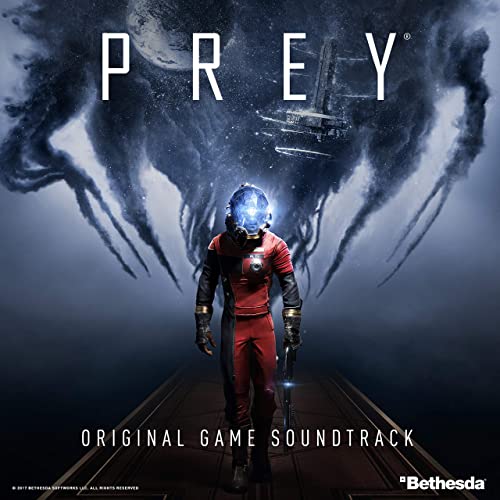
73. Prey
Prey is the little space-horror game that you may have never heard of. Released in 2017, this game features creatures that feel like alien-ghosts as you try to survive the space station. This soundtrack is part of what helps the player not jump out of their seats – it acts as a somewhat of a warning system for creatures to come, which is also helpful when you’re tuned into a horror game, but it also completely set the atmosphere of the space station, while also implementing frightening effects that also lead to the final twist of the game. This soundtrack will run shivers down your spine.
[Amanda Remier]
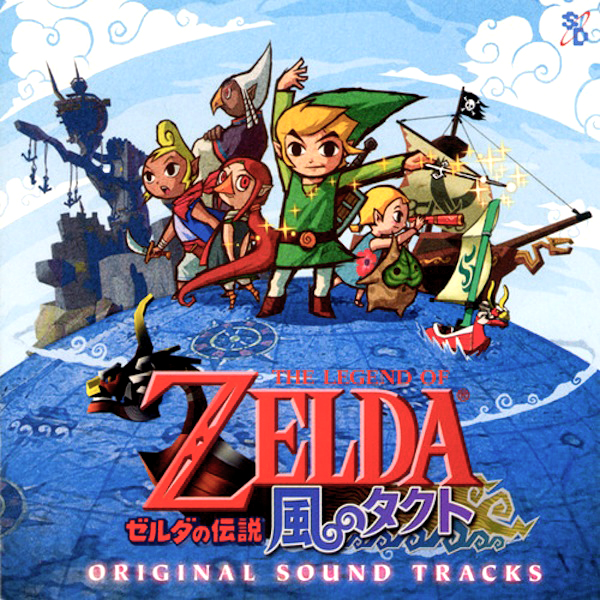
72. The Legend of Zelda: The Wind Waker
A deviation from its revolutionary predecessors, The Legend of Zelda: The Wind Waker marks the first 3D Zelda beyond the Nintendo 64 on a seafaring adventure with a Link of the future, where Hyrule has been drowned and the inhabitants of Hyrule live on far off islands. While Wind Waker’s score utilizes faint melodic recollection of A Link to the Past and Ocarina before, Wind Waker, much as it does visually, finds its own identity through a unique soundtrack. Players compose ballads with a magical baton, songs are made of wind instrument samples throughout, but so do their companions in the new sages Medli and Makar, piecing together a hymn to seal away the Evil Ganon once more. Not only that but the game’s combat music is the first in the series to introduce adaptive score, where each of Link’s sword strikes become a tense percussive hit in the soundtrack to bolster the impact of player action. It is a pure soundtrack for a swashbuckling adventure that feels unique from the rest of the series before and after it. [Evan Griffin]
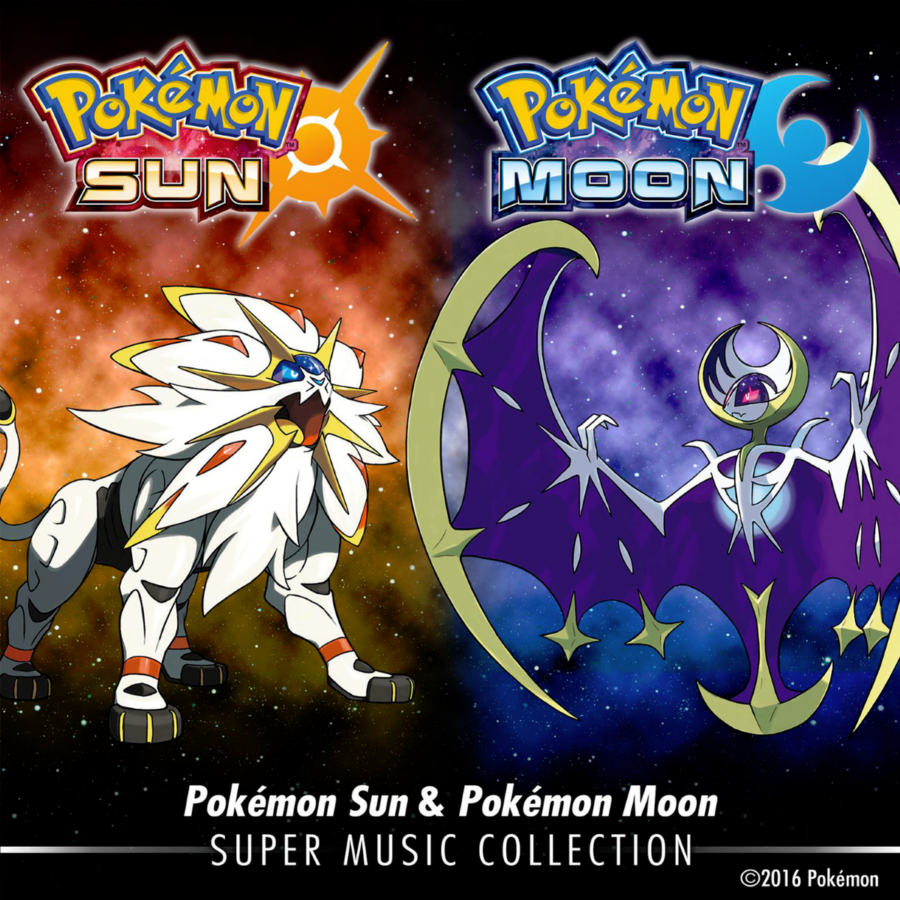
71. Pokémon Sun and Moon/Ultra Sun and Moon
The Young Folks have praised Sun and Moon before for being a fantastic tribute to Pokémon’s history and the music is just as good at this. Various callbacks cut through pivotal moments of the game and two of the most iconic tracks get their best remixes. That’s not all – because the games try to break free of their conventions, more individual themes get to shine instead of being only cool battle tracks. Battle themes aren’t lacking though, both final story boss battles are the composer team’s (led by Junichi Masuda) best in the now 25 year run of the series. [Travis Hymas]
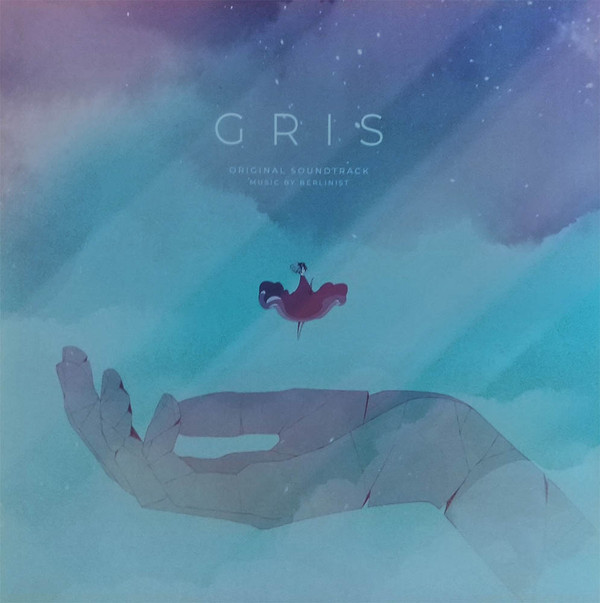
70. Gris
A Devolver Digital published indie featuring a soundtrack by Barcelona music group Berlinist, Gris is a game with a dreamscape aesthetic of ink and watercolor. Players follow a young girl who has lost the power of her voice. Her vocals as the main mechanic drive the game as the world slowly seeps with color once again, but the standalone score featuring lone strings and piano depicts her feelings of loneliness so subtly and viscerally that it feels like music made by the protagonist herself.
[Evan Griffin]
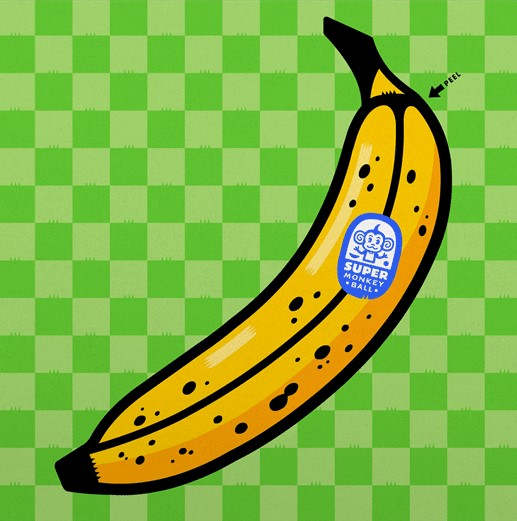
69. Super Monkey Ball
In an era that bridged high-quality arcade games to home consoles, music also changed. In the era of Napster, electronica music was taking over.
Super Monkey Ball not only shares a director with the Yakuza franchise, but it also shares a music composer in Hidenori Shoji (F-Zero GX). Shoji’s style of music is an amalgamation of 80’s new wave rock and turn of the millennium synthesizer electronic soundscapes that provide the perfect kinetic energy for monkeys in balls to fling themselves across stages in an era of SEGA games published for other consoles that revolutionized their status as top tier game music designers. [Evan Griffin]
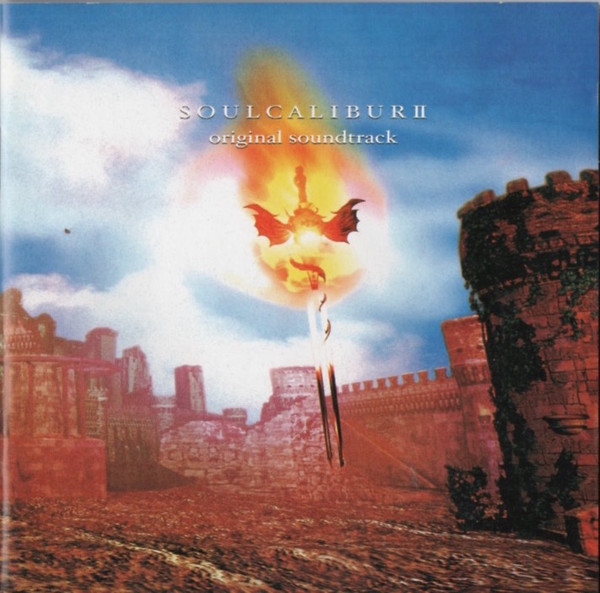
68. Soul Calibur II
Rarely does a musical score for a fighting game achieve the drive to do battle, but also a full range of filmic inspiration. Soul Calibur II tells stories of sword fighters from across the world, coming face to face in battle for control of two blades that will determine the fate of destiny, and Junichi Nakasturu’s orchestral score delivers those stakes beautifully. In combining these characters of different blade disciplines, their respective cultures find their way into the score as well, with a stunning homage that confidently adds Chinese, Japanese, European and otherworldly motifs to really deliver the scope of the world these characters inhabit.
[Evan Griffin]
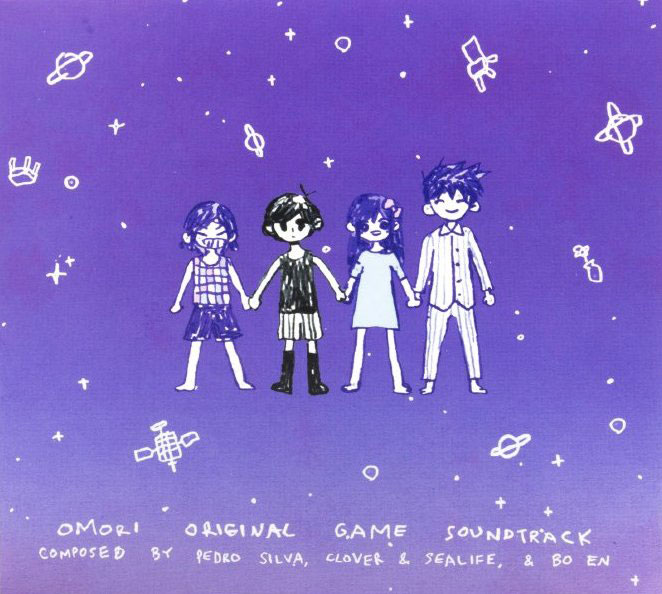
67. Omori
Through its music, Omori creates an aura of apprehension, fear, and the feeling of not knowing what is and isn’t real. The music can seem sweet and innocent one minute, fitting for the seemingly cute and happy world the main character and his friends are spending time in. Songs such as “Where We Used to Play,” “By Your Side,” “A Home For Flowers,” “Poems in the Fog,” and a handful of others.
Before you know it though, the moment can turn vigorous as you and your friends are battling a varicolored enemy. Songs appropriate for this mood included “Tussle Among Trees,” “Push and Shove,” “CHAOS ASSEMBLY,” “Forest Frenzy,” and a bunch of other battle music you can simply just vibe to. Then of course, there’s the music that set off all the red flags. When these play you just KNOW something is about to happen. Due to the playful and charming exterior, it’s rather easy to forget that this game is a psychological horror. Games such as Omori do such a wonderful job marrying the music to the scenes, no matter the current atmosphere. Not only that, but the design, the gameplay, the characters, all of it fits well together and results in something that feels real. [Sophia Johnson, guest Contributor]

66. Wii Channels
2006, what a simple time. When the Wii was released, society was in a much different place. It felt like everything was just starting as technology began to advance. With an innovative idea that finally was feasible, the Wii had no choice but the capitalize on the futuristic aesthetic that became increasingly popular, and the Iwata era of Nintendo entered its back half with fun, catchy pieces of music across hardware menus to make players delighted to simply boot up the console. The Wii’s channels soundtracks matched their visual aesthetic to create an entirely new futuristic atmosphere. High pitched beats, snares, and synth keyboards all help achieve this goal, creating an upbeat, euphoric soundtrack, sure to help any player imagine they’re not in a different world, but the next one. There is a reason that Generation Z, who grew up with the Wii always on hand, now continues the legacy of “Mii Channel” and “Wii Shop Channel” themes as background audio through platforms like Tik Tok. [Amanda Remier]
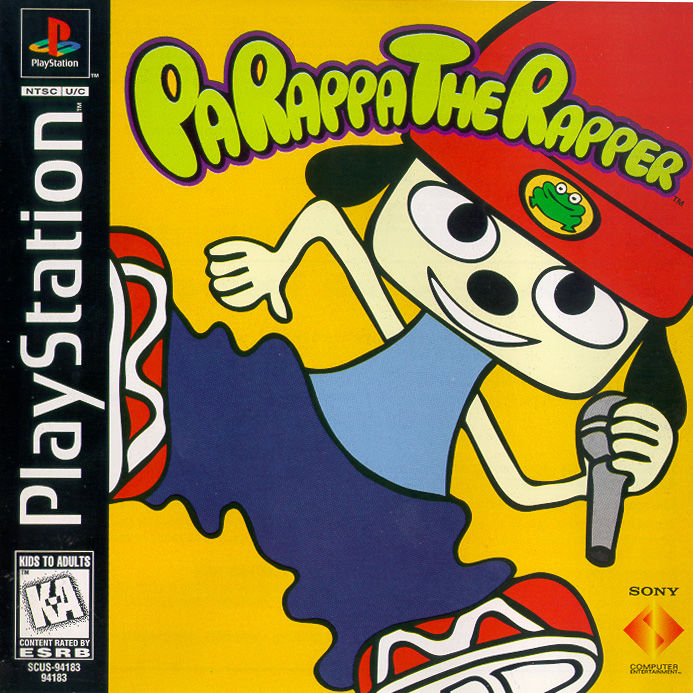
65. Parappa The Rapper
“Kick-Kick. Punch! Duck. Turn!”
It may be hard to comprehend the love of the franchise about a paper-thin dog in a beanie hat for those who didn’t grow up with it, but Masaya Matsuura’s vision of the rapping dog longing for love pushed the PS1’s visuals to give players a revolutionary title that made the rhythm genre what it is right now. Absolutely abstract, zany and surreal, players use the buttons on their controller to tap in rhythm so Parappa can follow along the insanely charismatic instructors. The performance from these instructors is intrinsically tied to the theme of each stage as Prappa tries to learn how to believe in himself. [Evan Griffin]
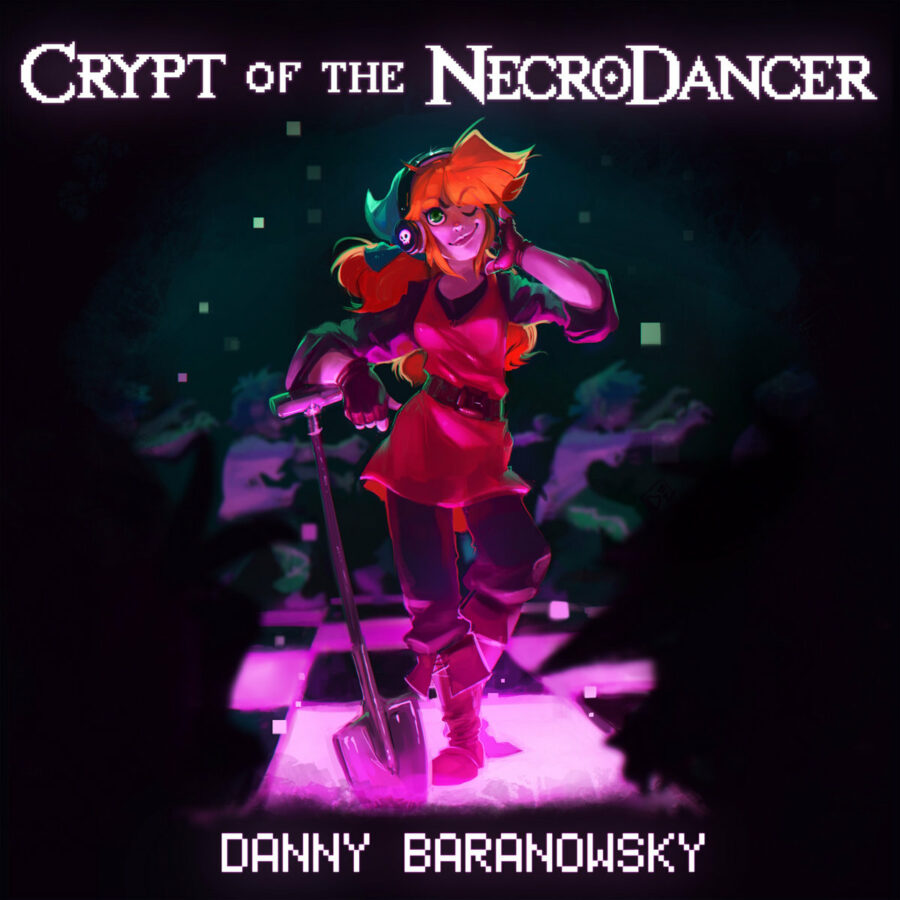
64. Crypt of the Necrodancer
The musically inclined indie dungeon crawler pulls no punches. The player is presented with a protagonist with a movement style that goes square to square: left, right, up, down. Beneath the dungeon screen is a heart beat and rhythm lines, signaling to players to keep to the beat as they dig for treasure, whack enemies and find creatures to liberate. The music unabashedly moves forward, regardless of player participation: the only penalty is poorly timing your jumps to miss out on coin multipliers and finding everything in the dungeon. In Crypt of the Necrodancer, the music comes first, and drives everything else around it.
[Evan Griffin]
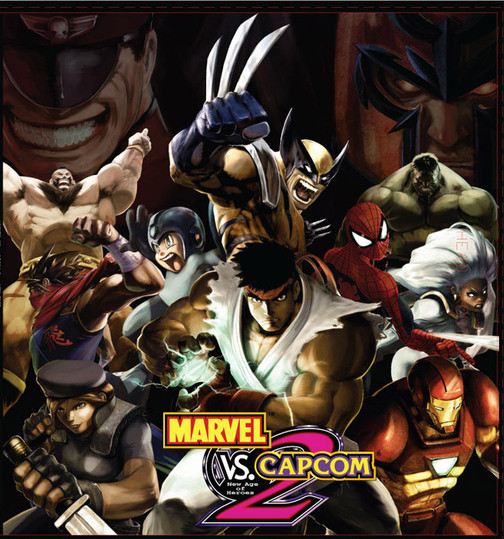
63. Marvel vs. Capcom 2
The vibrant and jazzy tracks that fill MvC2 are hard to compare amidst fighting game scores, but the most fitting comparison may be Cowboy Bebop. While the stages don’t lack energy, traditional, hefty instrumentals are almost nowhere to be found, with gorgeous and whimsical horns and saxophones on tracks like “Carnival Stage” taking their place. That being said, each stage still has a unique track and thus a unique personality, and the weirdly-bright aesthetics of the menu songs and the UI are intriguing for a fighting game. And any seasoned MvC2 player will recognize “take you for a ride!”
[Hunter Church]
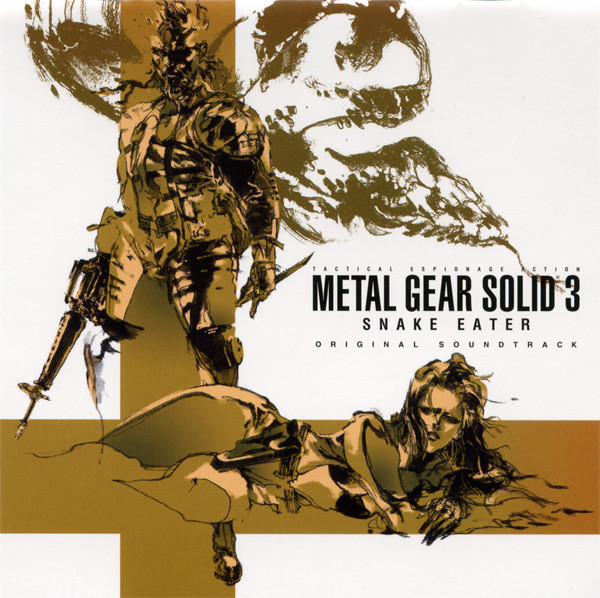
62. Metal Gear Solid 3: Snake Eater
Hideo Kojima’s relationship with music is one of the most interesting in all of gaming. The implementation of music in his games ranges from comical like in Death Stranding to downright exceptional in the Metal Gear series. For Metal Gear Solid 3, his opus, Kojima went all out in this department with the return of legendary film composer Henry Gregson Williams to bring on endless homages to spy films of the past. It emulates the genre through Rambo-style jungle lurking themes, Mission Impossible’s sweeping percussion to lead players on a chase, and Bond-Esque low brass. The Bond homage peaks for the franchise in the legendary theme Snake Eater, sung by Cynthia Harrall, both in the opening credits and in an iconic late-game sequence where you’ll be climbing a lonely ladder as Snake. It’s immediately arresting and sets the tone for a story full of political intrigue and espionage. When you hear it echo through the tunnels, it’s truly something that will leave you in awe. The song is one of gaming’s most ubiquitous opening vocal pieces. [Mark Wesley]
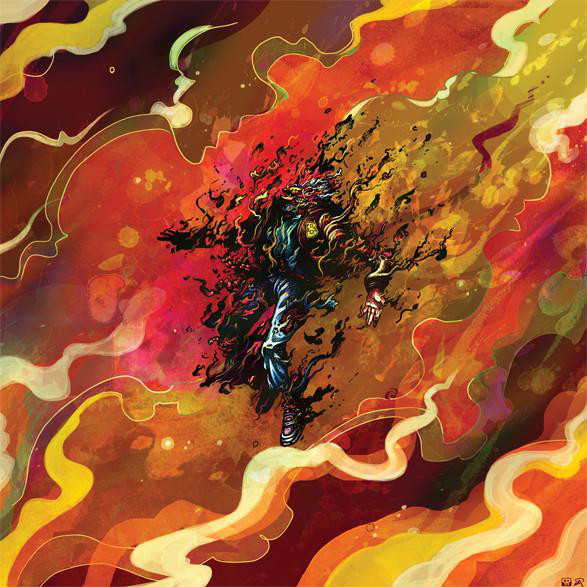
61. Hotline Miami
With a relentlessly pulsating beat underlying its neon-drenched ultraviolence, Hotline Miami’s memorable score will get under your skin. Instrumental to getting into the rhythm that the highly challenging game demands of you, synths bubble and shake the walls of the rooms your killer shoots and chops their way through and, when executed properly, make it feel like you are the star of a seriously trippy music video. With obvious throwbacks to films and shows like Miami Vice and Drive and an early adopter of the vaporwave vibe, Hotline Miami sounds like the game looks and plays; a nightclub rave going off in the mind of an acid tripping and animal mask-wearing psychopath. [Quinton Parulis, Guest Contributor]
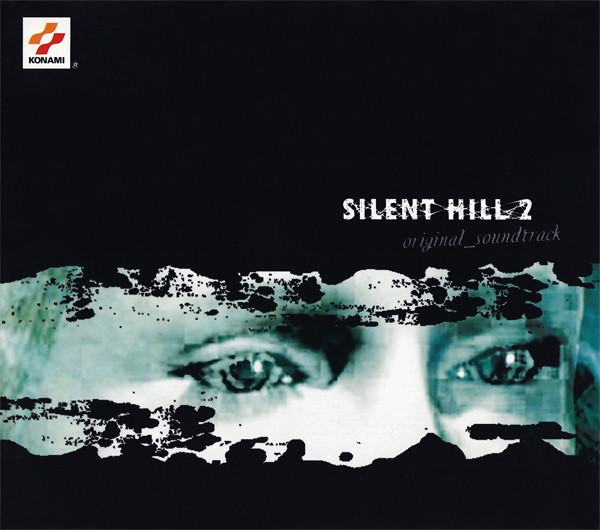
60. Silent Hill 2
Moody, mysterious, and eerie are just a few words to describe Silent Hill 2’s soundtrack. Just like the menacing foggy town, this soundtrack captures the atmospheric quality of the game. It doesn’t hit you over the head with signs of survival horror danger, but it lures you in and makes you wonder what’s coming next. Plus, the mysterious notes that inspire uneasiness and inner reflection match up nicely against the game’s main story. Some songs, like “Promise (Reprise)”, have stood out as iconic Silent Hill tunes, but the soundtrack has stood the test of time to keep bringing players back. Back to those restless dreams where they see that town, Silent Hill. [Justin Carrero]
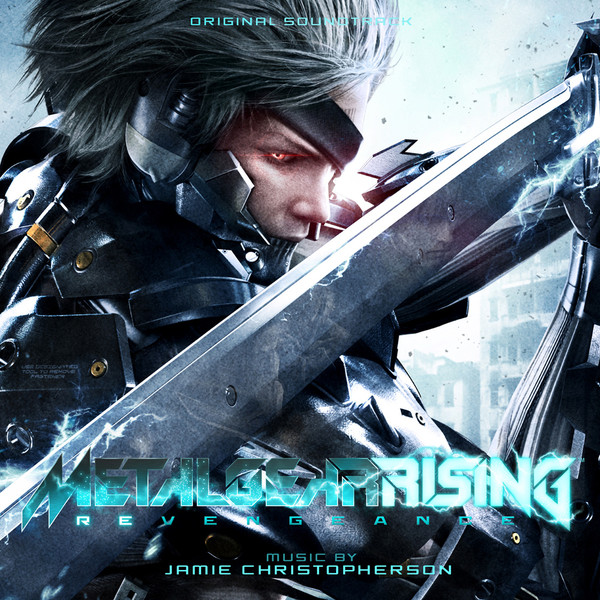
59. Metal Gear Rising: Revengeance
Metal Gear Rising is a game as stylish as it is completely insane. Raiden may not be the only cyborg ninja in gaming, or even the Metal Gear franchise, but I’m pretty sure he’s the only one ripping out the artificial spines of his enemies to keep himself fighting. With frenetic, full-throttle gameplay and completely absurd writing, of course, you have a high-energy soundtrack to top it off. Rules of Nature was an instant icon, getting memed up to the same level as Guile’s theme. Other stand out tracks include The Only Thing I Know For Real, The Stains of Time, and It Has to Be This Way. This is an OST that will get the blood pumping for the whole playtime.
[Arron Reyes]
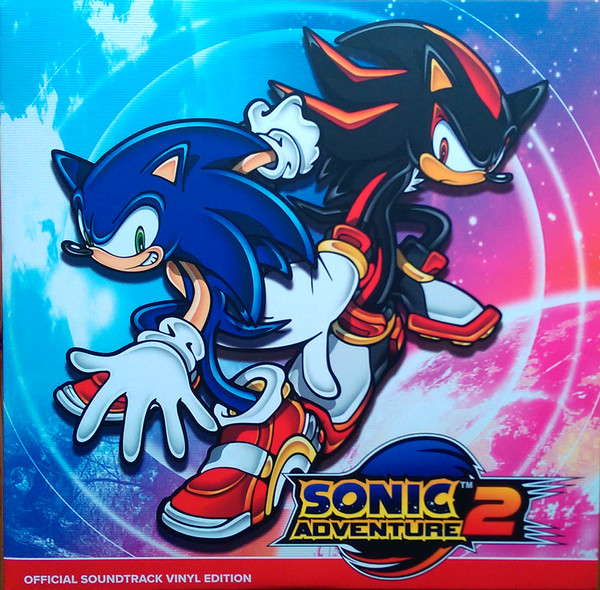
58. Sonic Adventure 2
“ROLLIN’ AROUND AT THE SPEED OF SOUND…”
We know you were thinking it, too. One of the things that make Sonic Adventure 2 so endearing to fans is its dated quality, and nowhere is that more evident than in its music (or in its cutscene graphics, but that’s another discussion). You get a healthy collection of early-2000s pop rock with “It Doesn’t Matter” and “Live & Learn” to make Sonic’s courses all the more jubilant, while his “edgy” enemy Shadow gets baby’s first industrial rock. Sprinkled on top are bits of breezy jazz for Rouge the Bat’s jewel hunting and the best damn spooky rap you’ve ever heard in your life. [Jon Winkler]
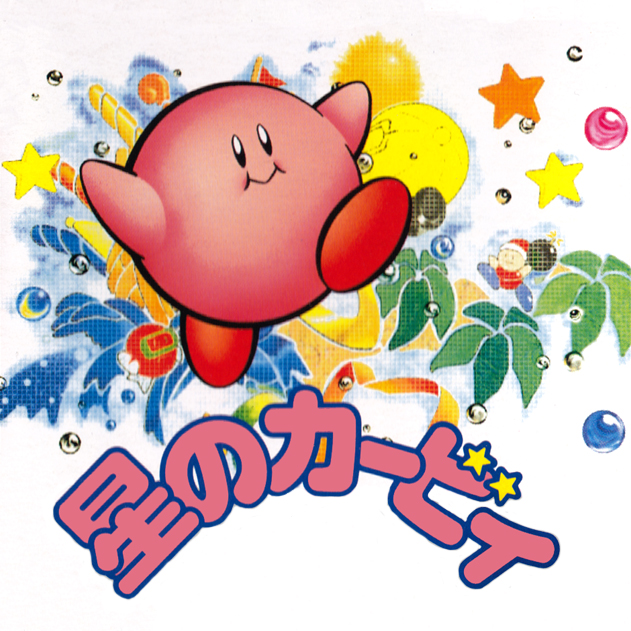
57. Kirby’s Dream Land
The Game Boy title that gave us the most iconic Kirby track in the form of “Green Greens,” a track that conveys a pep that keeps players wanting to march forward with our little pink friend. Kirby’s Dream Land makes the most of the little grey cartridge. Tracks like “Float Island” and “Bubbly Clouds” are warm, inviting, and enthusiastic in the way they match the charming and lightweight gameplay.
[Evan Griffin]
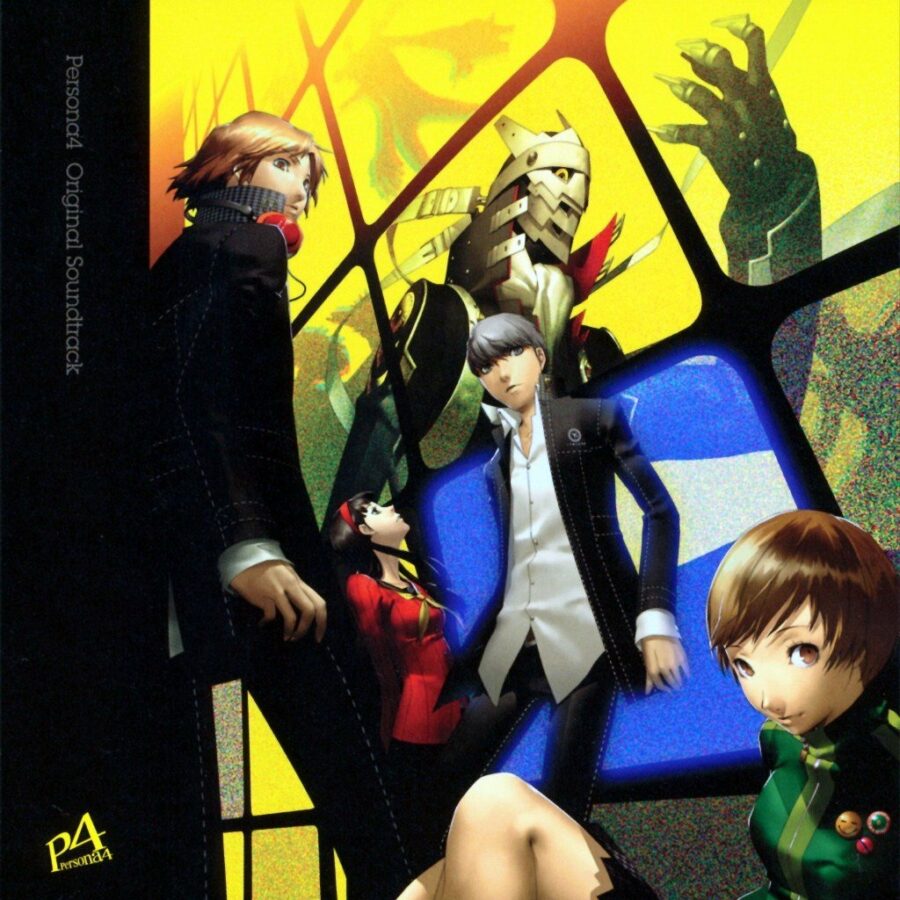
56. Persona 4: Golden
The joy of Persona is in the bonds formed with the various people you meet along the way and Shoji Meguro’s Persona 4: Golden soundtrack is there to round out the entire experience. From the moment the game launches with the track “Shadow World,” the music is there to draw you in. As you move around the Japanese countryside and through demon filled dungeons, Meguro uses different instruments to communicate specific vibes. The upbeat, poppy percussion of tracks like “Heartbeat, Heartbreak” and “Your Affection” usually mean you’re killing time in between encounters, running around Inaba. Driving guitars score your battles in tracks like “Reach Out To the Truth.” Or they punctuate heightened moments of emotion when characters confront their inner demons in a track like “I’ll Face Myself – Battle.” Meguro’s greatest trick is creating tracks that have to be repeated again and again as you navigate menus or live through day to day scenes (Like a “Dream Come True, Who’s There”) that you never grow tired of. For a game you can easily spend over 80 hours with, this is an impressive achievement. [Jose Cordova]
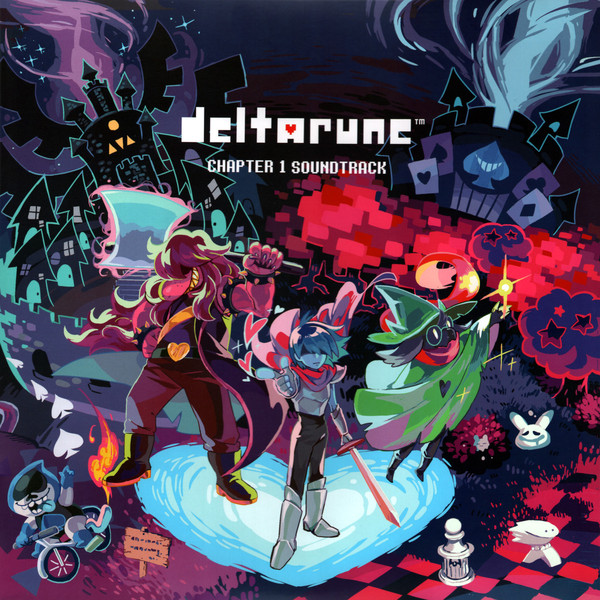
55. Deltarune Ch 1 & 2
Even though it’s not done and we only just got Chapter 2 recently, It’s well known that RPG creator, Toby Fox, is very good with music in his games. In both Undertale and Deltarune, when it comes to wandering around, boss fights, character themes, menu screens, so on and so forth…It makes the experience feel more lively. Using 8-bit music isn’t used very often in modern video games, not only that, but pixel games aren’t very popular nowadays either. However, Undertale and Deltarune create a world that feels vintage, and yet new at the same time. Due to its design, it can feel nostalgic and memorable like you’ve played and heard similar things in the past, evoking TobyFox’s own nostalgia for the games that influenced his work. Though also distinct in a way not many have seen before. It sets a good mood for the games overall and sets a line between fantasy and reality. It makes a tone for childlike creativity as well as the darker themes hidden within the game. As Undertale does, Deltarune expertly uses character and location motifs that flow between tracks within the game and each character’s motives. [Sophia Johnson, Guest Contributor]
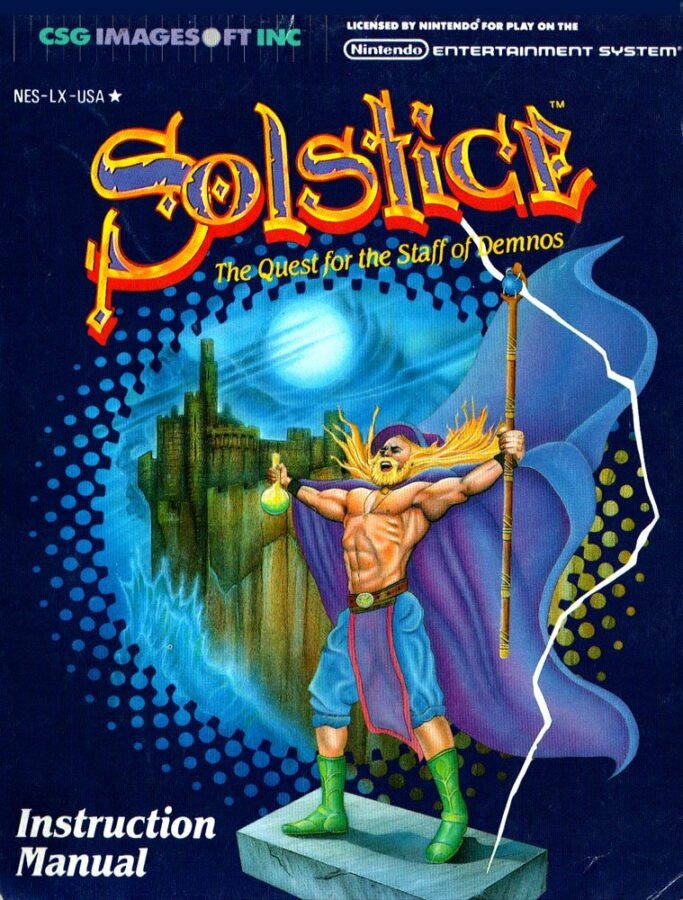
54. Solstice
Tim Follin is one of those names that is spoken about with awe in video game music circles. He was very modest about his talent, but he often pushed the boundaries of video game hardware to create music that seemed borderline impossible for the era. One of his best works is for Solstice, a perfectly serviceable isometric fantasy puzzle game for the NES that opens with a cute bloopy score before it blasts off with a bombastic fanfare and then becomes a complicated Proggy composition full of tricky time signature changes influenced by the band Yes. The opening theme is the best known piece of work for the soundtrack, but the rest of it is just as good, both atmospheric and psychedelic, and pushing the sound of the NES sound chip to new heights.
[Ryan Gibbs]
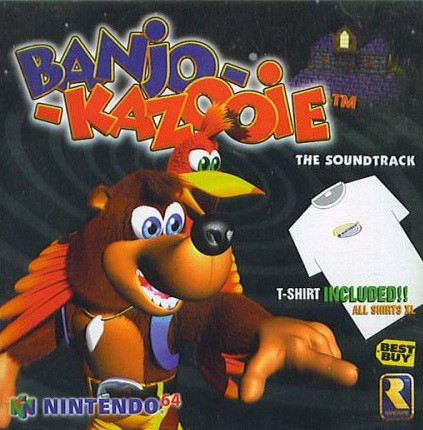
53. Banjo Kazooie
Rareware mastermind composer Grant Kirkhope declared “I really didn’t know what I was doing.” about one of the Nintendo 64 era’s most iconic soundtracks in Banjo-Kazooie. Largely inspired by the orchestral works of film composer Danny Elfman, namely his work on Batman ’89.
Kirkhope single-handedly made every ounce of quirky, zany and offbeat melody that defines the soundscapes of 3-D collectathon platformers, and Rare as a company, to this day. There’s lots of midi horns and a heck of a lot of bongos and xylophones.
[Evan Griffin]
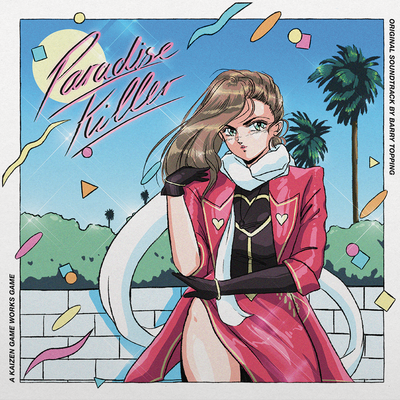
52. Paradise Killer
Paradise Killer’s bright and peppy soundtrack makes the neon-infused investigation of a murdered demigod feel right out of an 80’s beach cop show that somehow isn’t painful to experience. The tracks, the collection of which grows as Lady Love Dies digs deeper, both enforce the façade of the environment and betray the truth of that illusion. Using the always fun trick of making the score the same music the player character is enjoying, Paradise Killer’s music invites you into Lady D’s thought process and mindset; which becomes critical to even coming close to solving her case, much less find the real truth. [Travis Hymas]
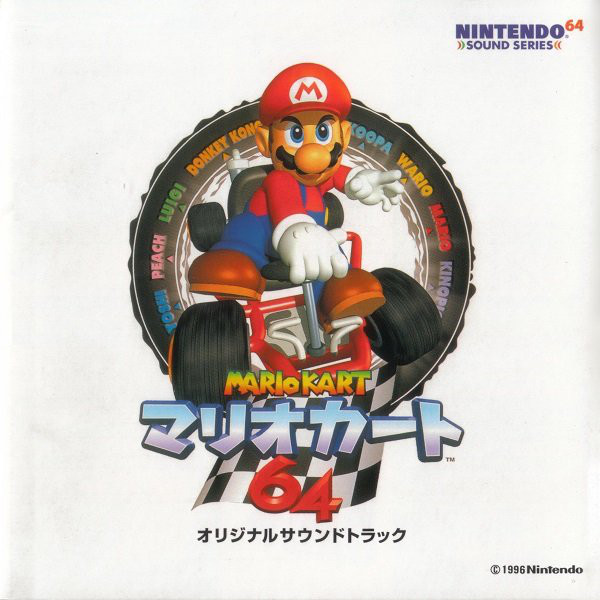
51. Mario Kart 64
Mario Kart 64 wasn’t the first Mario Kart game, but it refined and polished just about every bit of its 1992 SNES forerunner, which no doubt includes the splendid composition by Nintendo mainstay Kenta Nagata, not only for its main theme but also its memorable and diverse stages, from the Western twinge of “Moo Moo Farm” on Yoshi Island to the legendary pumped up ethereal flutes of “Rainbow Road.”
The game boasts a striking variety of locations, characters, and yes, pixels that easily match the elasticity of the booms, beams, and whistles of the grooving, synth soundtrack, as well as the game’s many sound effects, which could so easily be grating to the concentrating ears, otherwise.
The music is electric, as expected, keeping on track with the game’s brilliant speed and lively characters doing constant, chaotic battle, but the flexibility of the music shines best when sped up on the final laps, capturing that same hurried urgency that makes most Mario games, well, Mario games. There’s a reason every Mario Kart game since, and there have been more than a few, borrows and innovates upon the first definitive Mario Kart’s tone, style, and serious playfulness. [Jon Negroni]
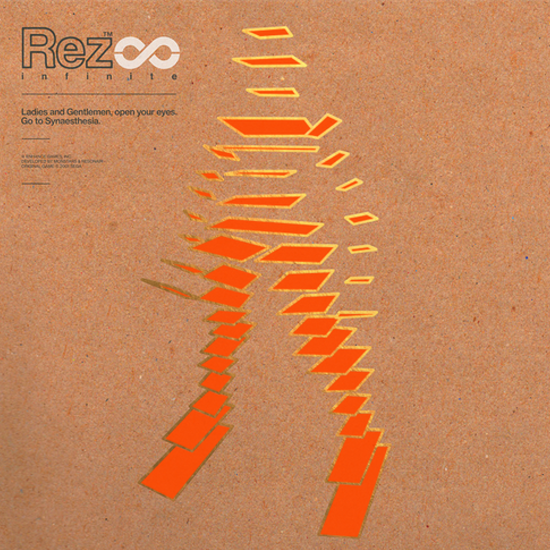
50. Rez Infinite
After SEGA and United Game Artists joined forces to create Space Channel 5, they made a rail shooter also of musical rhythmic construction in Rez, later remastered as Rez: Infinite. The game is the absolute audiovisual case for electronic soundtracks of the early 2000s. The soundtrack is responsive and adaptive to player input, making their adventure deep into cyberspace participatory in the creation of music inspired by the European disco movement.
[Evan Griffin]
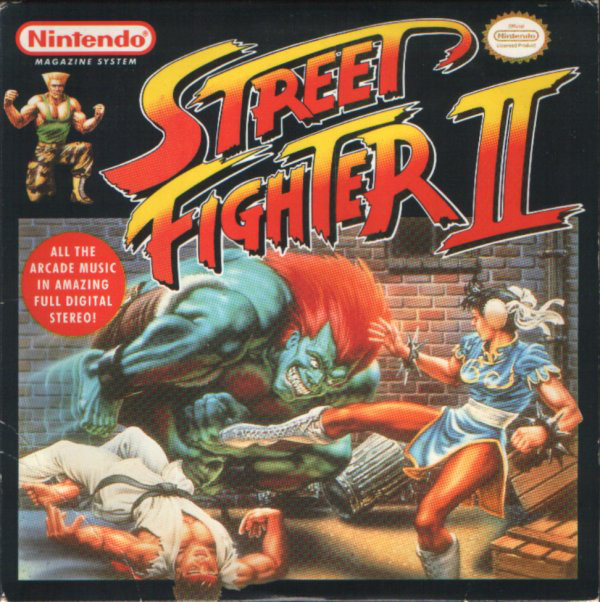
49. Street Fighter II
Nothing gets you more into the fighting spirit than the soundtrack to Street Fighter 2. Each song in this classic soundtrack brings to life that feeling of being in an arcade and furiously mashing buttons trying to defeat your opponent. What makes these songs extra special is that each track adds to the style of the fighter/stage, so every match feels different and heightens the vibe when facing a specific enemy. Plus, they’re so catchy! Just try to stop yourself from humming along to Guile’s or Ken’s themes, or even the player select screen.
[Justin Carrero]

48. Sayonara Wild Hearts
Sayonara Wild Hearts is as much a game as it is an interactive album, a celebration of music and style that can be completed in one sitting and is well worth the price of entry. The soundtrack is, indeed, the backbone of this game: this is a work here not just to give you a fun game, but a satisfying feast for the ears. The opening theme, aptly titled Sayonara Wild Heart, gives you a taste of what you’re in for: it’s upbeat, dreamy, and catchy as hell. Queen Latifah is your guide through this pastel dream world with surprising variety. You’ll be equally engaged by a spin on a classical tune such as Clair de Lune as you will be as engaging as a poppy track like Begin Again, a slow emotional piece such as The World We Knew, and the aggressive, fun Dead of Night. It’s engaging, emotional, and most importantly a lot of fun to listen to. [Arron Reyes]
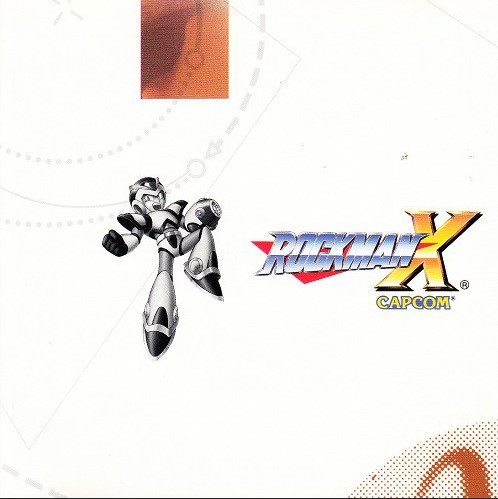
47. Mega Man X
The soundtrack to Mega Man X had huge shoes to fill—accompanying a fast-paced, forward-moving action platformer with little defensive options outside of “dodge better.” But surprisingly, it may have exceeded expectations. The high-octane music behind Mega Man X has few, if any, lulls, and features some insane 80s-inspired drum licks across the span of only a few stages. The tracks help flawlessly encompass the best pieces of the game, pushing a high-energy experience that never lets up.
[Hunter Church]
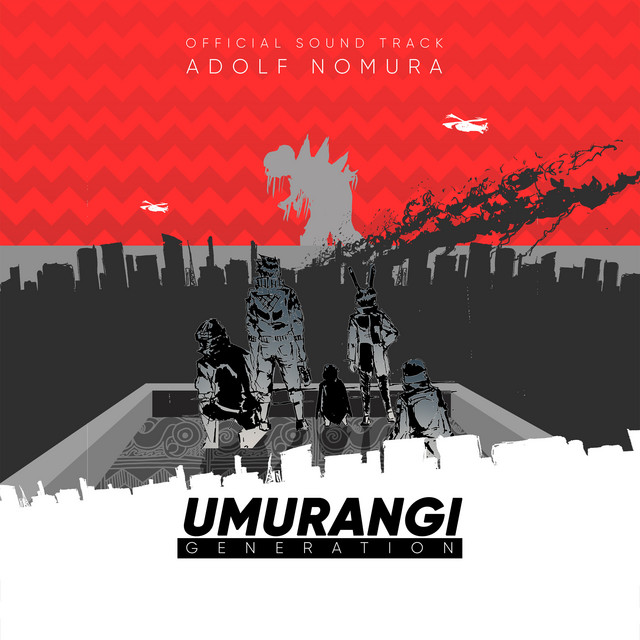
46. Umurangi Generation
There’s a lot Umurangi Generation has going on and the soundtrack is no exception. Composer Adolf Nomura’s special blend of electronic loops and hip hop beats reflect the disaffected yet not detached atmosphere that Umurangi Generation is all about. Unsurprisingly, Nomura’s been making these funky fresh beats for a while, and at times it feels like the game was made specifically to fit his talents. It’s incredibly difficult to not just pause the game and let the beats play while you just vibe – and my own Steam play-time reflects my failure to resist that temptation.
[Travis Hymas]
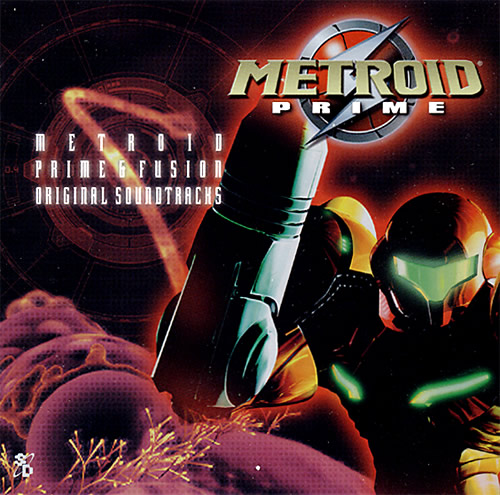
45. Metroid Prime
Samus Aran’s beginning as a First Person Shooter protagonist set a new bar for tone and immersion for Nintendo games thanks to the outstanding art direction and level design from Retro Studios, but the original Super Metroid team still had a hand in its aesthetic: namely Kenji Yamamoto’s revolutionary soundtrack. Now able to compose music on disc in the early 2000s, synthesizer scores were everywhere. Using sample packs from Orbit-3 and Xtreme Lead-1 and Korg MS2000, Yamamoto made the kind of living, acousmatic environmental energy for the planet of Talon IV by emulating European house with an organic twist to the melodies. This is most apparent in its accomplishments through tracks like “Tallon Overworld”, “Phendrana Drifts,” and its techno counterpart “Ice Valley”, the melancholic piano of “Crashed Ship Frigate” from the tutorial ship Orpheon, and the ominous “Phazon Mines,” as well as the iconic “Main Title Theme.” that feels like you’re trapped in a test tube with the titular predator. [Evan Griffin]
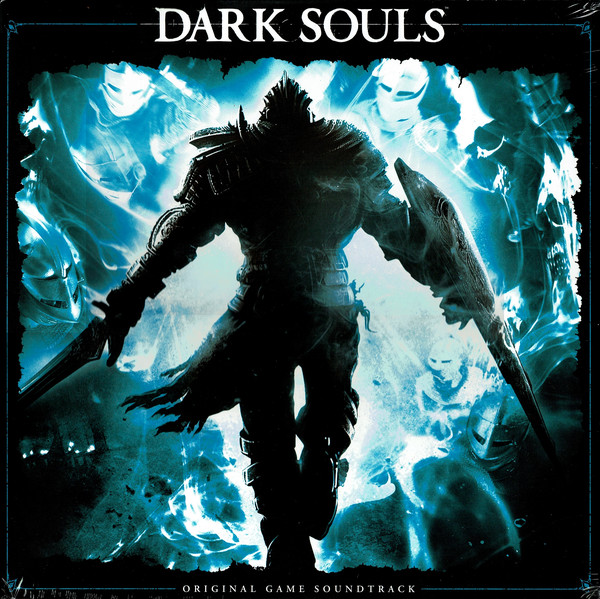
44. Dark Souls
Suitably matched to a series infamous for elaborate gothic melancholia and a constant reminder that you will most definitely die, Motoi Sakuraba’s score for Dark Souls is an immersive experience in wallowing ambiance and exhilarating highs. From the forlorn strings accompanying the quiet moments of rest at Firelink Shrine to the swelling orchestrations of any of the games massive boss fights that will get inevitably drilled into your brain after dying to them for the thousandth time (Ornstein & Smoughs’ in particular has always been my personal nightmare), the soundtrack takes you out from dark catacombs to the soaring heights of castle towers while always uniting the game’s many areas together into a cohesive journey that truly earns the swelling payoffs the series is famous for. [Quinton Parulis, Guest Contributor]
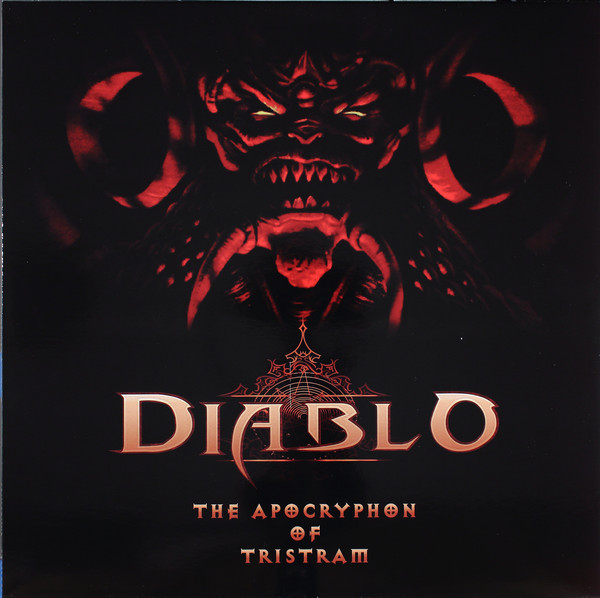
43. Diablo
The soundtrack to the original 1996 is a classic of the CD-Rom era, bringing darkly ambient soundscapes to computer games with full CD-quality audio. The best known, and probably most-heard song on the soundtrack is Matt Ullman’s plaintive knotty folk guitar piece “Tristam” which captures the gloomy medieval tone of the game even when you’re selling stuff in town. The rest of the music in the four primary biomes of the game is far more in the background than the town theme, but it succeeds in building atmosphere as you’re battling the forces of the undead. In addition to its importance to the roguelike genre, Diablo is also a gem of ‘90s game sound design. [Ryan Gibbs]
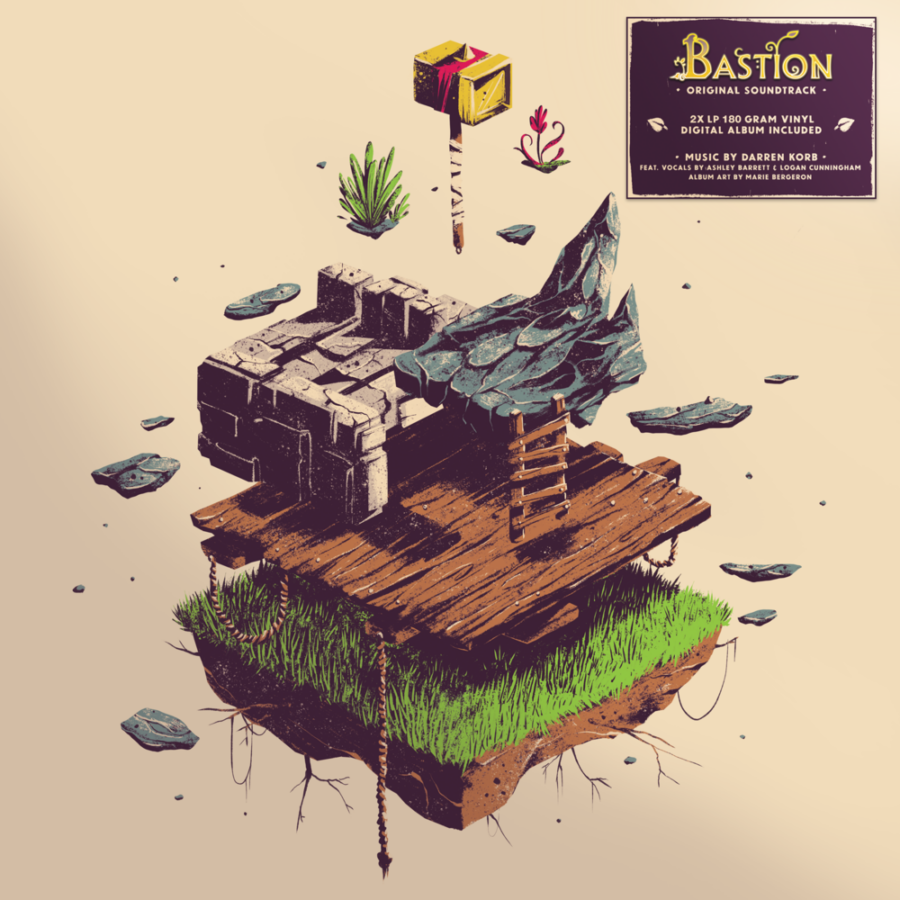
42. Bastion
Supergiant Games has never published a game without an absolute banger soundtrack from solo musician Darren Korb. Between Transistor and Hades alone, some of the greatest pieces of game music have been made, but their roots dig deep all the way back to their first game published by Warner Interactive in Bastion. “In Case of Trouble” even feels like a demo release of a track designed for Hades 10 years prior, but in the effort to record Bastion’s score out of his apartment closet, Korb was able to keep the otherworldly energy of the game inspired even in using familiar rock and acoustic compositions and instrumentation we’re already used to, conveying both a mystique and something sinister to drive players through combat. [Evan Griffin]
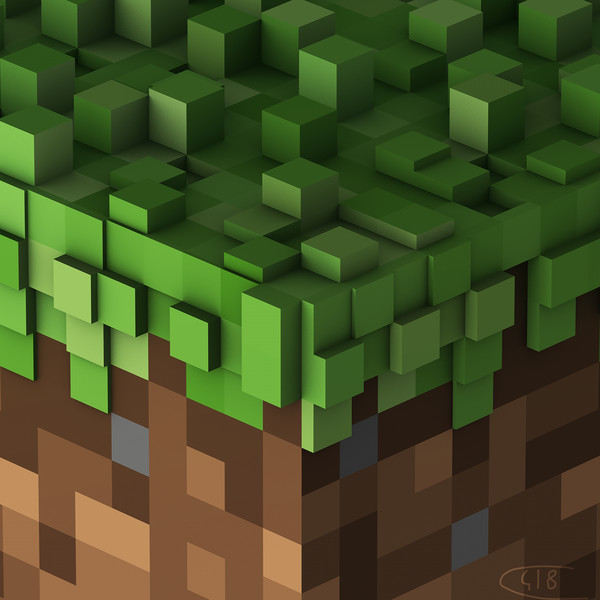
41. Minecraft
One of the first things you experience when creating a new world in Minecraft are the sounds; Nearby animals, villagers, and monsters all vie for your attention out of the gate. Yet, the sound that immediately grabs me is the music from C418, real name Daniel Rosenfield. The music of Minecraft has been a constant staple throughout the years, perhaps even more so than it’s macro gameplay experience. There’s not many moments in gaming that rival walking across a grassy terrain to the tranquil sounds of Rosenfield’s layered piano. Whether you started playing Minecraft in beta or just hopping into it in 2021, the music has and always will remain an integral part of its DNA. [Mark Wesley]
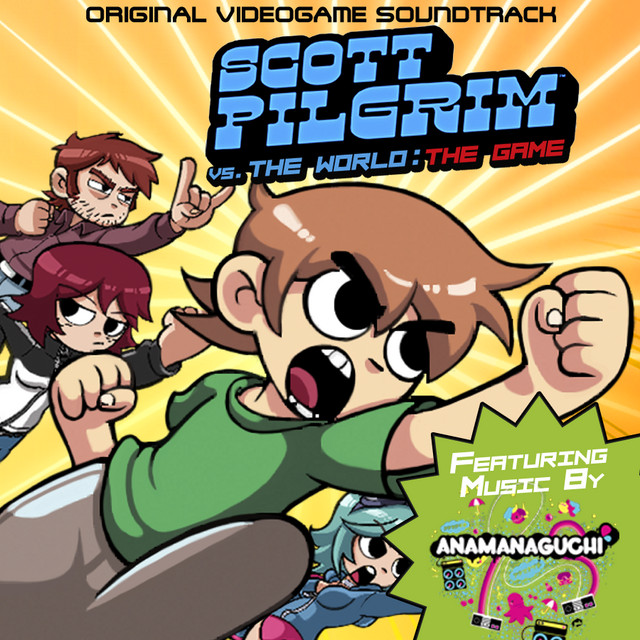
40. Scott Pilgrim vs The World
If you’re talking about soundtracks that perfectly represent the video game they were made for, it’d be a crime not to mention Scott Pilgrim. Or at the very least, it wouldn’t be very radical of you.
The track list for Scott Pilgrim vs. the World: The Game’s official soundtrack is as lengthy as its title. It’s also just as epic, with 24 rocking arcade jams that make the perfect beat-em up background theme.
Written, composed, and recorded by chiptune rock band Anamanaguchi, the soundtrack encompasses just about everything an arcade style 2D fighter needs; intense, rising scales, sick snares, and absolutely ridiculous 8-bit synth solos. From the “polygonal Paramore” style of “Scott Pilgrim Anthem” or “Skate or Live,” to the traditional arcade sounding beats in “Vegetable Rock” or “Twin Dragons.” Even the first stage “Another Winter” emulates the ideal 8-bit nostalgia for a game of its type. It’s a soundtrack that would make Sex Bob-omb very happy. [Adonis Gonzalez]
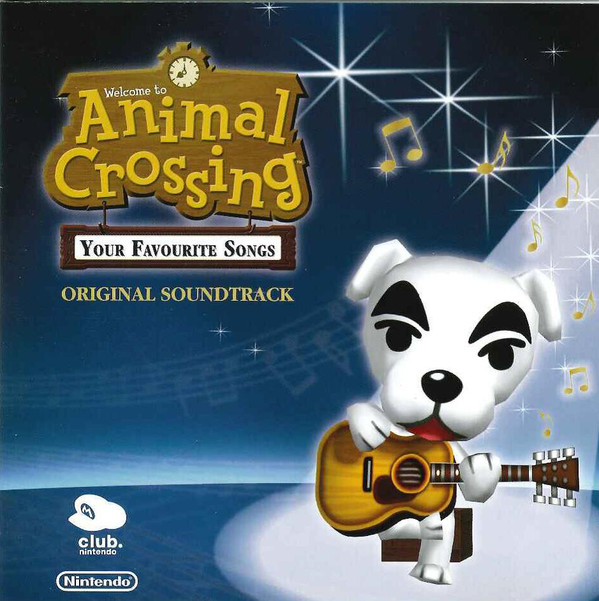
39. Animal Crossing
Originally “Animal Forest” for the Nintendo 64 in Japan, the iconic life simulation game in a village of animals was ported to the West on the Nintendo GameCube as Animal Crossing in 2002. The game not only featured a song for every hour of the day with a tonality unique to that hour of day or night, but it also features simple melodies for the games merchants that appear again in event music. The game also famously features its own rock star in KK Slider, whose famous scatting of original songs across every genre imaginable (see “KK Cruisin” and “KK Bubblegum” as primary examples) are wonderful pieces of diegetic music for players radios in their homes or in live performances on Saturday evenings. [Evan Griffin]
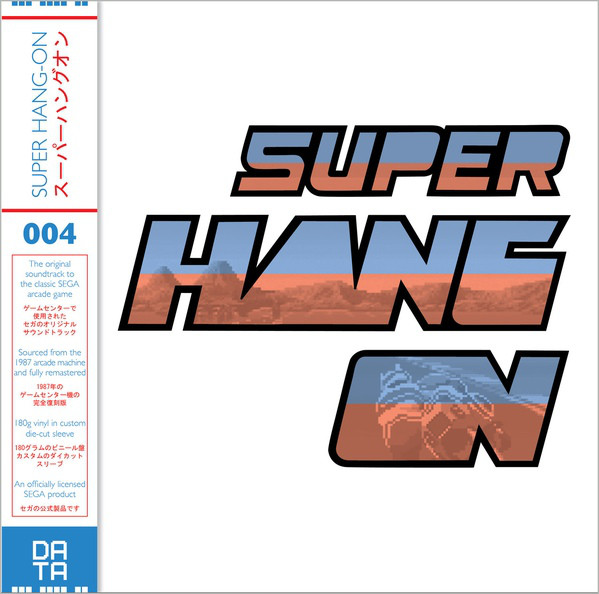
38. Super Hang-On
It may be a bold statement to say that a single soundtrack defines an entire decade, much less that soundtrack being Super Hang-On. Yet, Super Hang-On pretty much is the 80’s wrapped up in a single score. The slightly upshifted pitch feels like neon light being beamed directly into your brain, and the main theme and primary race themes play like the Top Gun film score – instantly putting you in the mindset of the driver. It’s not something even the most nostalgic revival could match without coming off as too try-hard, making the original that much more special.
[Travis Hymas]
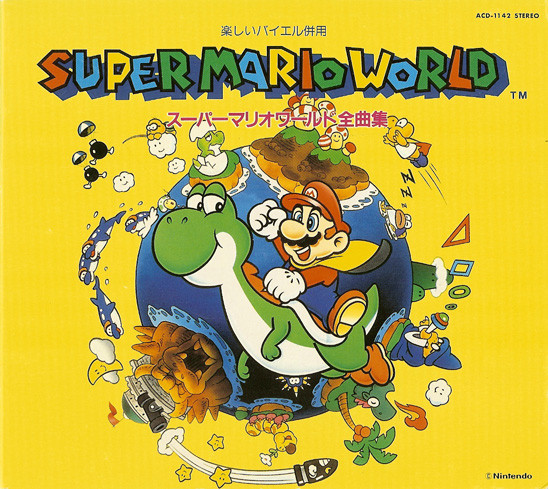
37. Super Mario World
A game that launched the SNES era by evolving the iconic Super Mario in every way imaginable, including in its soundtrack. The tracks of the 1986 original are ever-present in the Mario franchise and culture in general, but Super Mario World took the structure of that music and built a true ensemble of medlies with new themes throughout. These themes are dynamic and complement one another, as drums accompany the march of Yoshi as Mario journeys with him in real-time, the overworld theme stepping down in octave and taking on an echo sound as players enter underground levels and even dynamic new castle and boo mansion themes. Super Mario World’s themes by Koji Kondo are just as ever-present as those from Mario 1 and Mario 3 and beyond. [Evan Griffin]
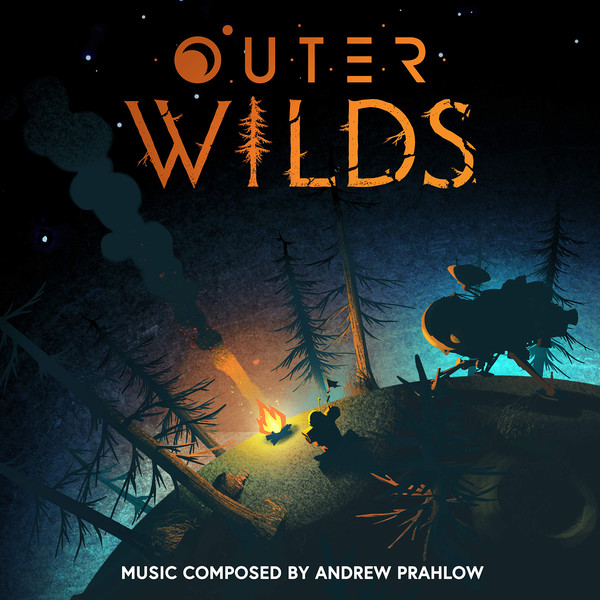
36. Outer Wilds
At first glance, the soundtrack for the kickstarted indie gem by BAFTA winner Andrew Prahlow seems like a simple fireside acoustic guitar with an intergalactic atmosphere in its slower places. However, not only does each planet have its own theme suited to its terrain, the music has in-game meaning. A primary mechanic is unifying traveler’s instruments from across the solar system, and as players achieve this, the main theme of the game gains that complexity in its score.
[Evan Griffin]
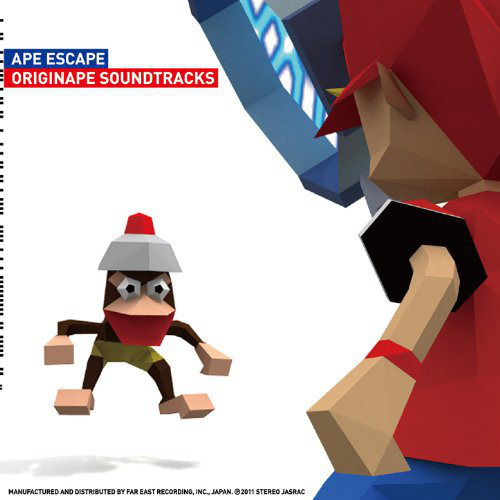
35. Ape Escape
The original Ape Escape’s daring difficulty was always a thrilling paradox to its charming art direction and upbeat, techno intensity. It’s almost a bit odd to see so many different skins and expressions for these catchable monkeys all against the backdrop of a fairly consistent and easy to remember set of sheet music. Most of it follows the same basic formula: Keep it light, fun, and blissfully challenging.
Soichi Terada composed the music for the Playstation game in 1995 and 1996, and he surely had his work cut out for him in the wake of Donkey Kong Country being a smash hit and well-regarded for its jungle bass mixes. Nevertheless, Terada succeeded in making Ape Escape its own timeless capsule of sound, complete with hours of kick drum and bass that could easily be adapted to a modern remake without missing a single beat (or ape). [Jon Negroni]
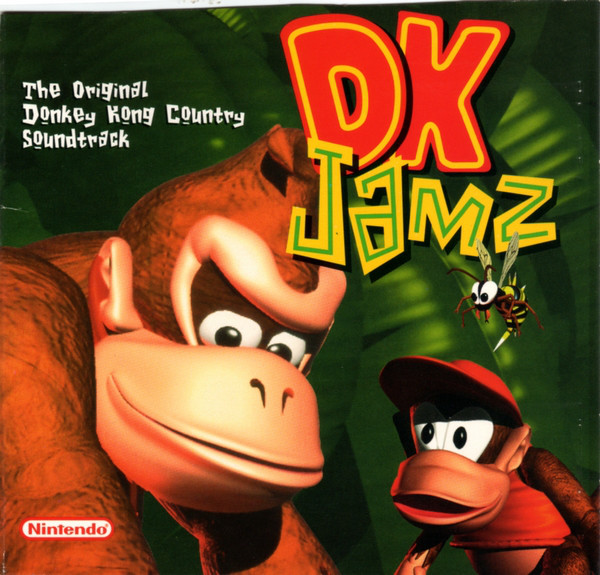
34. Donkey Kong Country
The first solo adventure for the ape as a protagonist alongside his friend Diddy Kong was made by UK developer Rareware. It cemented so much of what we know about the sonic identifiers of Donkey Kong. David Wise and Evelyn Fleischer managed to deliver a rousing platforming soundtrack but also atmospherically harmonized it with the sounds of the jungle in the form of chittering apes, drumming bongos, rainstorms and birds and clattering mines. It is the origin of Simian Segue, DK Island Swing and the famously Aquatic Ambience, among so many others.
[Evan Griffin]
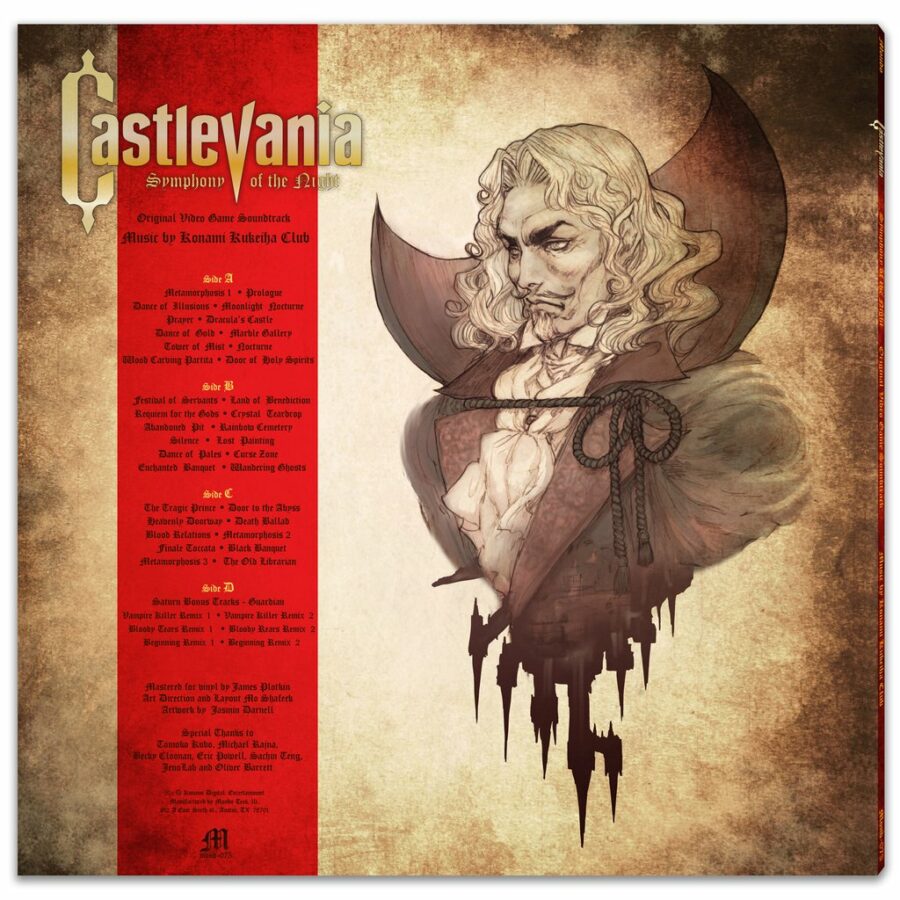
33. Castlevania: Symphony of the Night
In the dark lie terrible things. Creatures and ghouls of horrific form, wailing winds, things that bump in the night. As it turns out, those things that bump have a pretty sick goth rock beat to them.
That’s at least the evidence that Castlevania: Symphony of the Night supports with its macabre n’ roll soundtrack. Symphony of the Night sees players take control of Dracula’s half-blood son, Alucard. While he does share every letter of his father’s name, Alucard doesn’t share in the Count’s sinister pastimes.
As such, our partly vampiric hero needed a fully atmospheric soundtrack to accompany him on his journey to destroy Dracula’s castle. Luckily, composer Michiru Yamane stepped up to the plate with plenty to offer. The soundtrack for Symphony of the Night is equal parts Victorian Goth and heavy metal, with big imposing orchestral sounds and tubular guitar/synth solos sprinkled throughout the 33 track long list. Nothing short of the best for the Prince of Darkness himself. [Adonis Gonzalez]
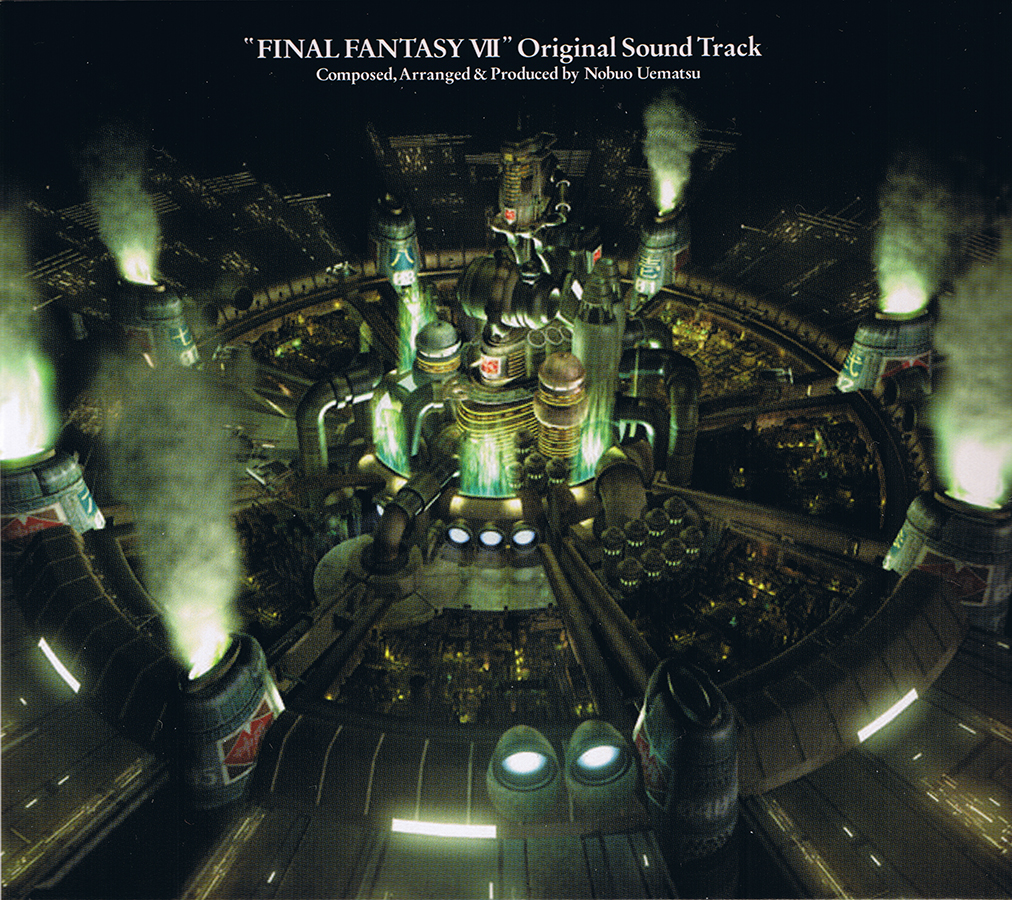
32. Final Fantasy VII
You don’t need us to tell you that Final Fantasy VII is one of the best video games ever created, but a large part of its quality also comes from its incredible soundtrack by Square Enix legend Nobu Uematsu. The Final Fantasy VII soundtrack is majestic and matches the epic quality that goes alongside its captivating story. The long list of songs is very distinctive to the game, with many of the numbers being iconic and attributed to some of gaming’s biggest moments. For example, “Let the Battles Begin!” is the most recognizable fight song in the franchise’s history, and you can’t help but dance to the victory jingle. Plus, if you didn’t shed a tear to “Aerith’s Theme” during her death, we can’t help you.
[Justin Carrero]
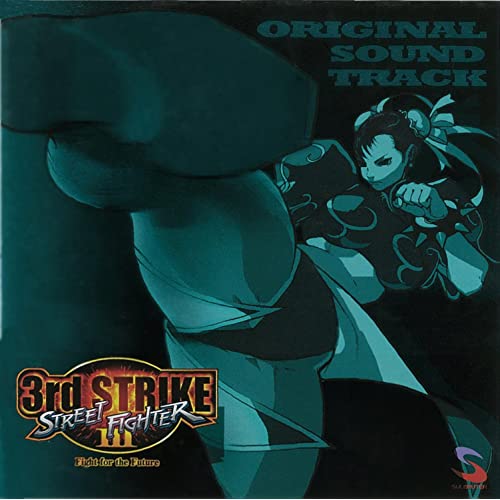
31. Street Fighter III: Third Strike
A venerated title, one of the greatest fighting games of all time, the third version of the third entry of the game that pretty much invented the genre as we know it is one with a wholly unique, absolutely fantastic soundtrack. R&B and hip-hop sounds aren’t what you’d expect from the series: any doubts you may have fade when the game’s stellar main theme hits your ears. Fantastic arrangement and catchy lyrics from Canadian rapper Infinite open the door for you to experience the rest of this stylish suite of tracks. Iconic tracks like Akuma’s Killing Moon and the Ken and Alex’s theme Jazzy NYC ‘99 are standouts, but others like Beats in my Head and Spunky are just as good. Overall, it’s a legendary soundtrack for a legendary game.
[Aaron Reyes]
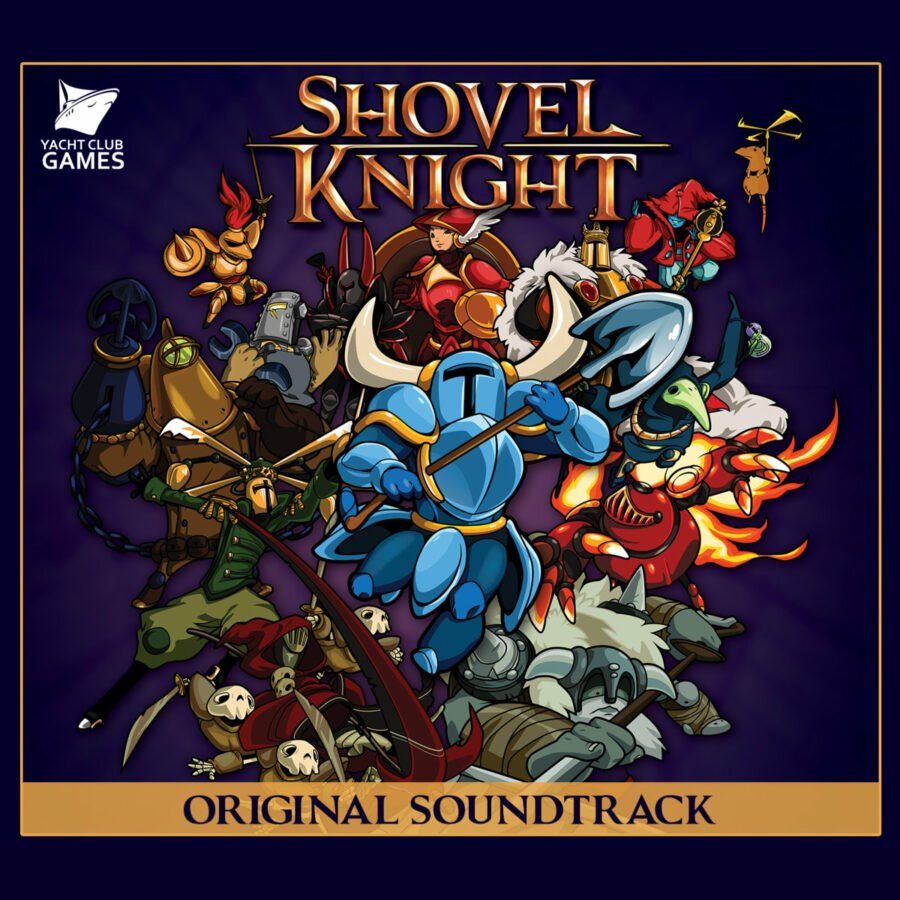
30. Shovel Knight
Vivacious and nostalgic, Shovel Knight evokes all the memories of the SNES era while still giving itself room to make itself distinctive. Crisp and rhythmic, with melodies such as those in “An Underlying Problem” (Mole Knight’s stage theme) and Waltz of the “Troupple King” (yes, like trout and apple combined. It’s precious) serving as hallmarks to composer Jake Kaufman’s boundless versatility within this sound font. A little bit of something for everyone and a clever use of leitmotif elevates what would normally be classified as somewhat simple into an orchestral level of detail.
[Jordan Lee]
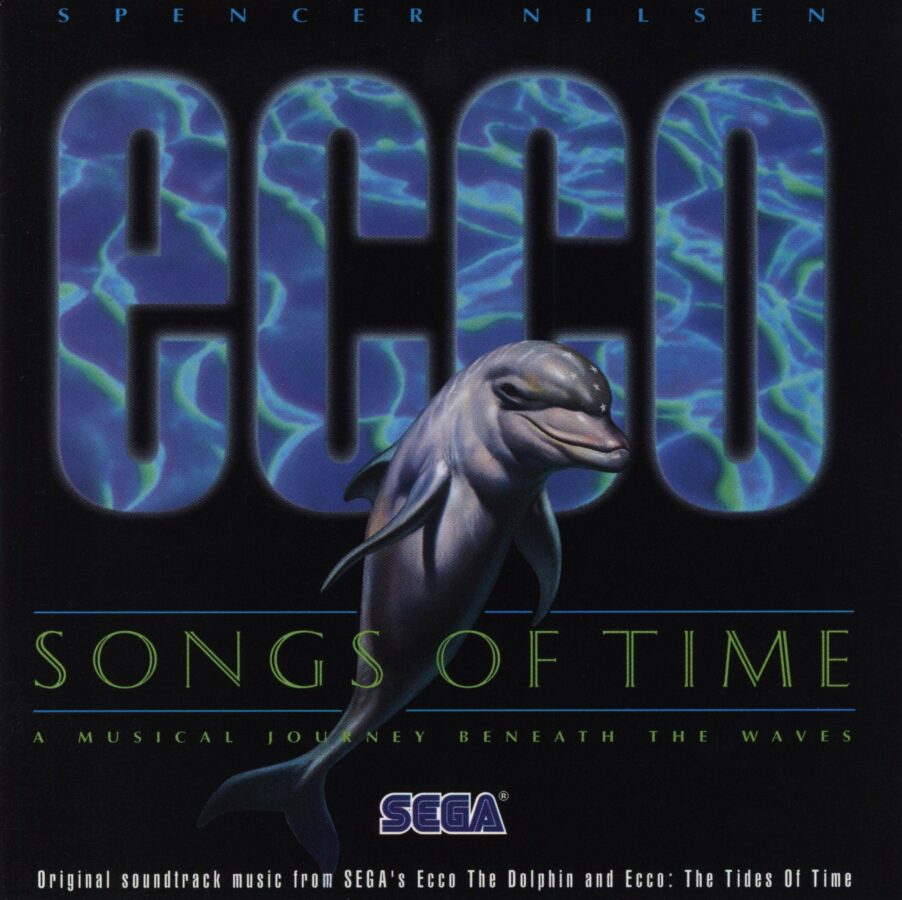
29. Ecco the Dolphin
In a way, there is no vaporwave without Ecco the Dolphin, is there? The game was a starting point for Daniel Lopatin’s landmark Chuck Person’s Eccojams, and that genre’s love for underwater feature iconography and ’90s box art. The soundtrack itself is a masterpiece of ambient music with a distinct underwater feel, drifting through ethereal layered soundscapes as you progress through the levels. A truly original soundtrack for a truly original game.
[Ryan Gibbs]
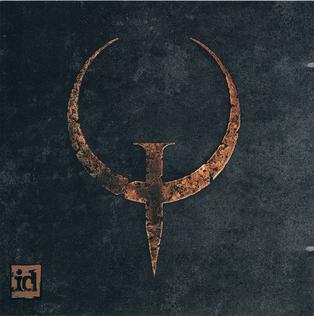
28. Quake
Trent Reznor of the iconic industrial rock band Nine Inch Nails was a massive fan of 1993’s Doom. It was inevitable that he and John Carmack at Id Software would collide in an iconic collaboration of its era. Prior to his work on film scores, Reznor provided the revolutionary 3-D shooter with a chilling ambient soundtrack that also provided an overwhelming adrenalin rush, deemed by Reznor himself that the music is “textured” and “oppressive” in its tone. The score is also famous for its lack of accessibility, as the PC ports of the game didn’t have an active license to use the soundtrack for a long time, and a standalone OST release was never made until a vinyl remasters in 2020.
[Evan Griffin]
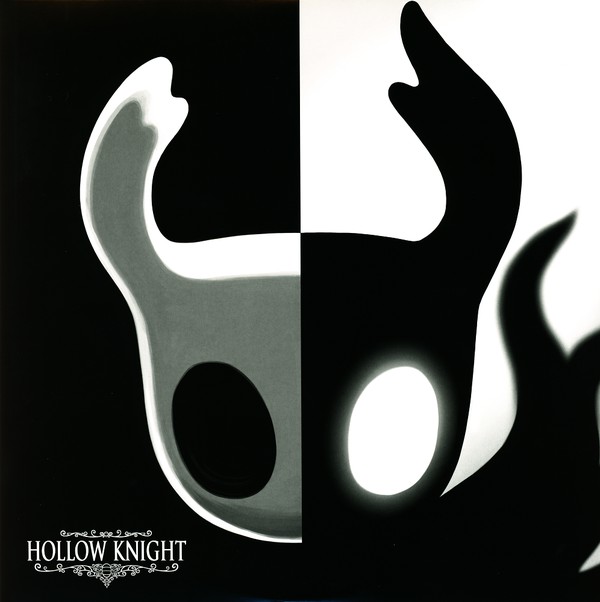
27. Hollow Knight
Elegant, dark, melancholic. These are the words that indie music composer Christopher Larkin has used to describe his work on the score for the hit indie metroidvania Hollow Knight, a game in which players delve into caverns of bugs and lost souls and discover dimly lit depths of caves, bustling with secrets and dangerous enemies. The game conveys a certain higher quality through its music to match the civilization that once stood in Hallownest, but in a darker, deeper tone implying the sinister and tragic downfall. Larkin also notes the influence of Studio Ghibli composer Joe Hisashi, reiterating the essential nature of a game’s score, like in film, to tonally back up the narrative and character presented on screen.
[Evan Griffin]
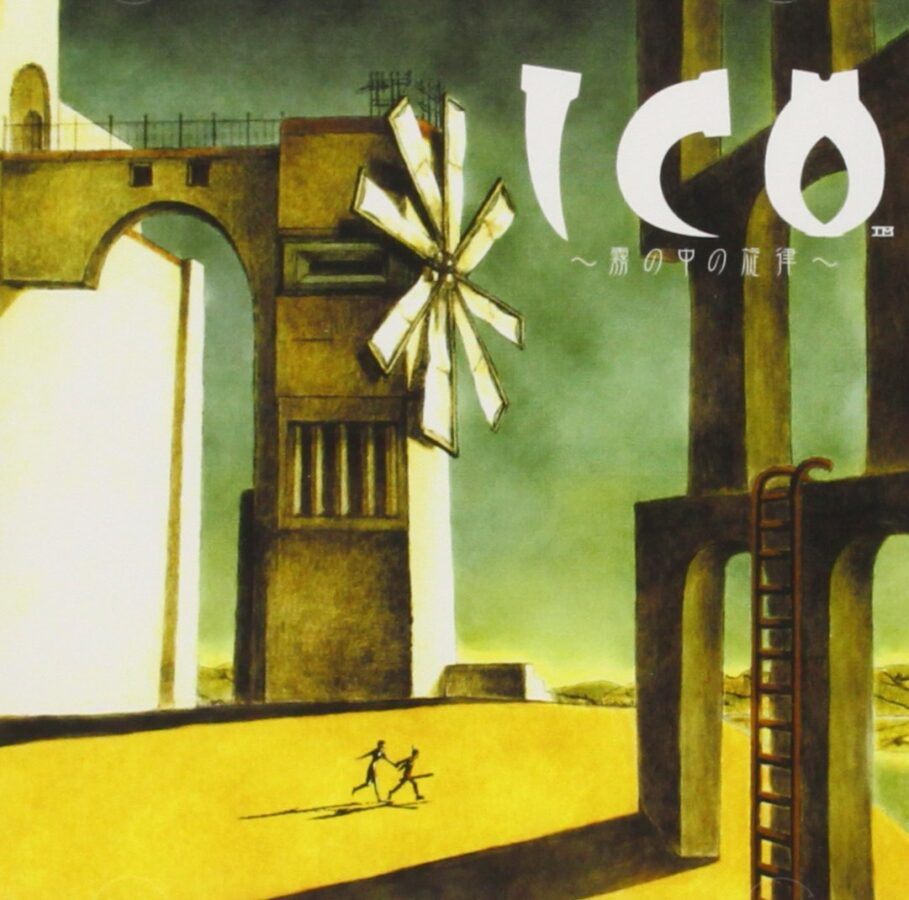
26. Ico
Ico determined the breadth of ambient euphonics in 3D platformers throughout the 2000’s with its meditative, primeval labyrinths. The original, and core design philosophy of Fumito Ueda’s Team Ico was “design by subtraction”, and is intrinsically tied to the simplicity of Michiru Ōshima and Kōichi Yamazaki’s musical choices as well. Ico’s initial theme “Castle in the Mist ”, a melancholic theme led by a bouzouki, and “Heal”, the game’s save data theme, are the two rare spirited arrangements in the game. Between core story moments, which fill the atmosphere with winding hymns evoking isolationism and abstract consciousness, the games’ overall tone is filled with natural air and the distant hum of the beating sun where wind gorgeously reverberates through the halls of the castle in the sky, as you seek out answers in a world that provides none. [Dylan Griffin]
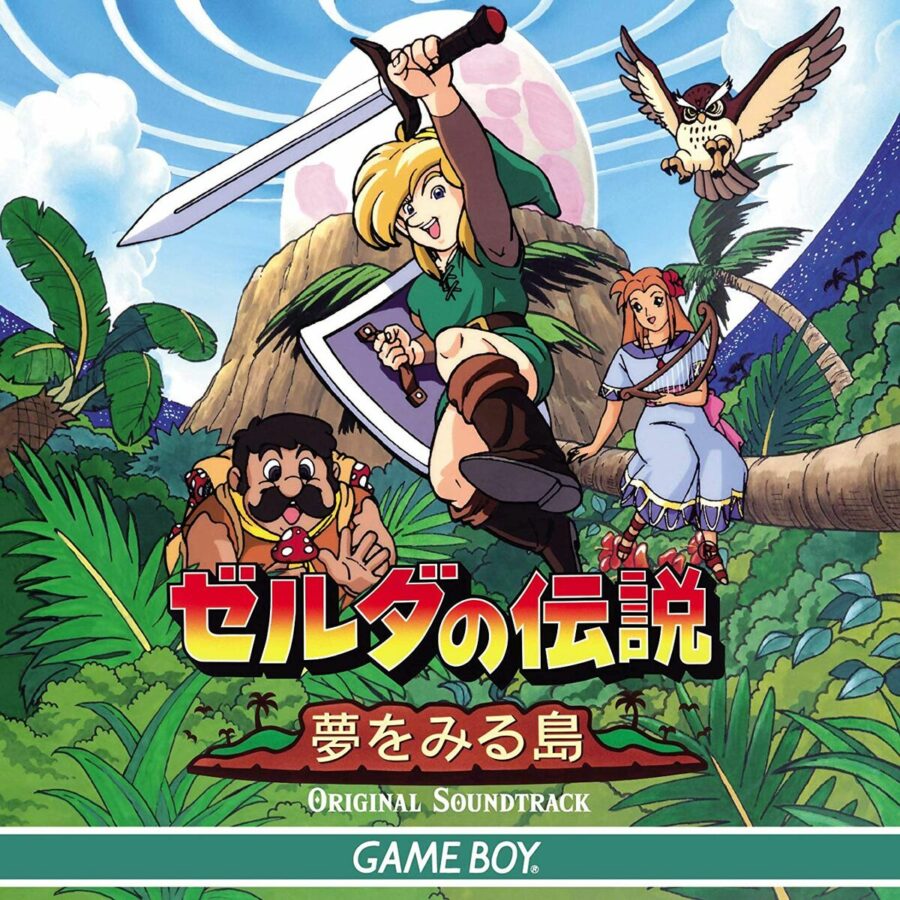
25. The Legend of Zelda: Link’s Awakening
Ryo Nagamatu’s score for Link’s Awakening boasts both a spritely nautical warmth, charming the player’s traditional Zelda appetite for adventure, as equally as it is a psychedelic surrealist one. With tone setters such as “Mabe Village”, a gorgeously delicate arrangement led by xylophone, and a call and response between woodwinds make for a distinctive harmonic form that articulates the adventure’s light atmosphere. Subsequently followed by the pervasive, “Ballad of the Windfish”, a depressive but celestial sonant extension to the identity of the elusive Windfish. [Dylan Griffin]
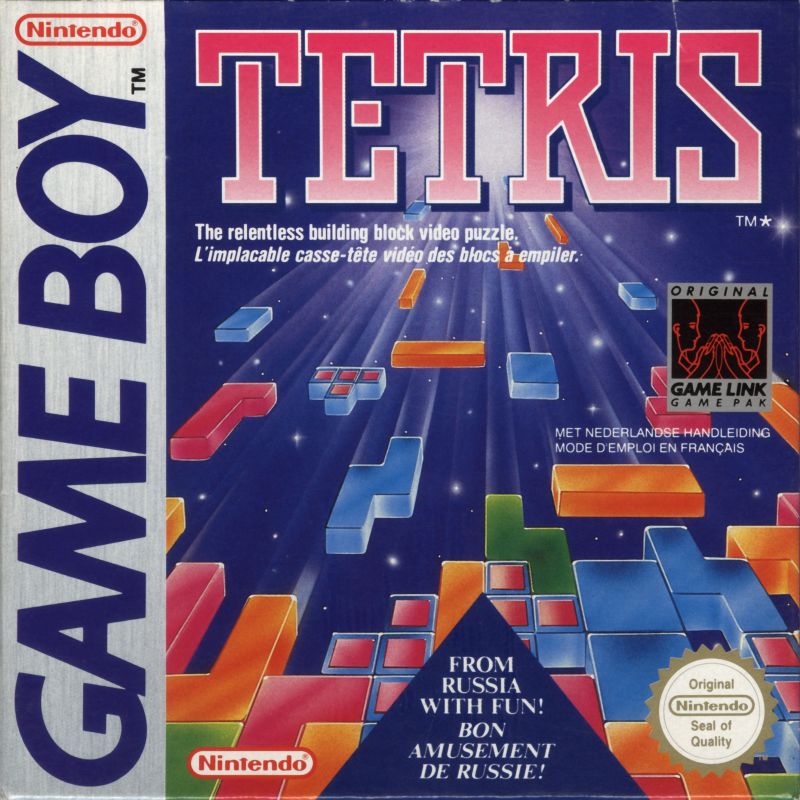
24. Tetris
If you were to ask someone on the street to hum a song from a video game, there is a very good chance they will reply to you with “Korobeiniki”, the Russian folk song that appears in a bloopy digitized version on the Game Boy release of Tetris. Not only was that version one of the best selling games for any format ever, but the three songs that appear in it are lodged in the brains of everyone that played that game. The tunes are catchy and will stick in your head if you play enough Tetris, but not distracting from the simple puzzle game. That’s the goal for any puzzle soundtrack that followed the game, but “Tetris” perfected it. [Ryan Gibbs]
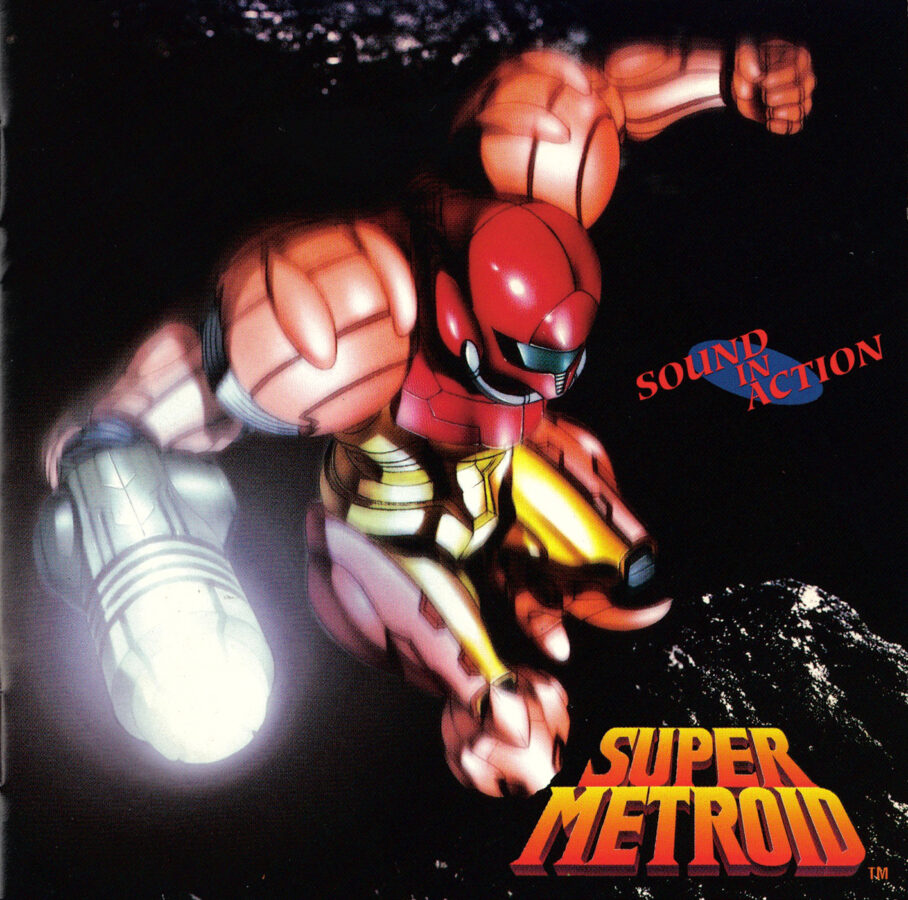
23. Super Metroid
In a game with a silent protagonist and no one to talk to, the soundtrack can drive everything. And from the first high-pitched screech on the title screen, the Super Metroid soundtrack instills three feelings inside the audience—fear, intensity, and inevitable victory. Horror-inspired tracks accompany desolate environments, but the thundering drums and echoing horns are always there to push players through the isolation. Even bouncy and lively percussion is featured within certain jungle environments, for a bit of whimsicality. Super Metroid pushes Samus through intense situations by herself, and the soundtrack does the same to the player. The anthem for “Red Brinstar” alone makes a case for the game’s sound aesthetic as the red caverns pulse an unusual glow and the score hums and drums as though the environment is breathing around you as you descend. [Hunter Church]
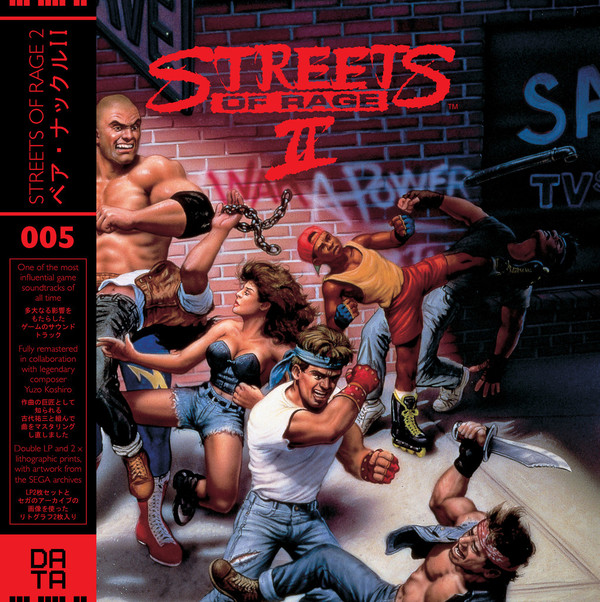
22. Streets of Rage II
Known as Bare Knuckle II in Japan, the second entry in the Streets of Rage beat-em-up franchise has a soundtrack by Yuzo Koshiro that takes the chip-tune based EDM influence of the first game, and makes it more infused with the energy of city night life in the 1990s. The soundtrack is full of textures bridging funk, techno and blues, all composed on some of the best of early 80’s synthesizers and drum machines, breaking boundaries of the SEGA Mega Drive’s sound card capabilities.
[Evan Griffin]
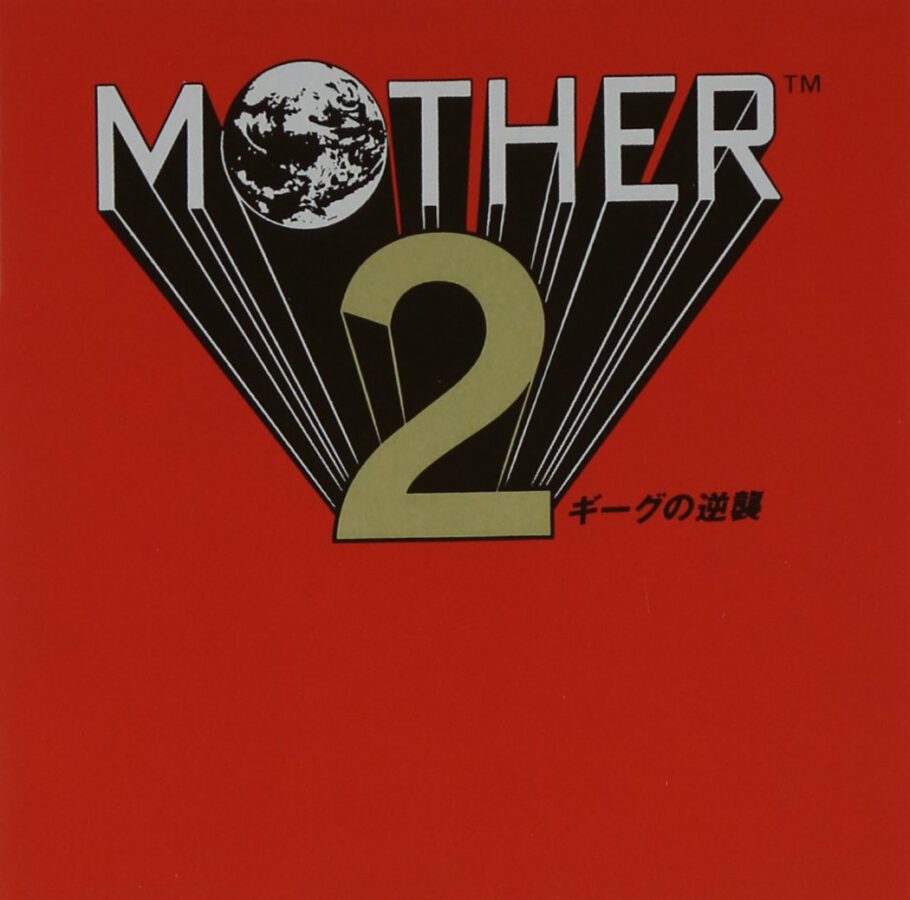
21. Earthbound
While still a niche property from Nintendo’s history, the Super Smash Bros. franchise has made sure that we’re all aware of Ness and his RPG series Earthbound. Known as Mother 2 in Japan, the sequel was scored on 8 megabytes, one third of an SNES cartridge storage, and was among the first video games to successfully achieve a string vibrato sound in a score, as well as revolutionizing the concept of sampling in a game soundtrack. This was all achieved by Keiichi Suziki (Tokyo Godfathers), Hirokazu ‘Hip’ Tanaka (Metroid, Tetris) and Hiroishi Kanazu. Even the game itself is very outward about its influence on the town of Onnette and its citizen’s misadventures as being hugely inspired by John Lennon and the Beatles, Yellow Magic Orchestra, and My Bloody Valentine, and the influences are apparent not only in easter egg text in game, but also in tracks like “Sound Stone,” “Megaton Walk” and “Cross Over Time and Space.” [Evan Griffin]
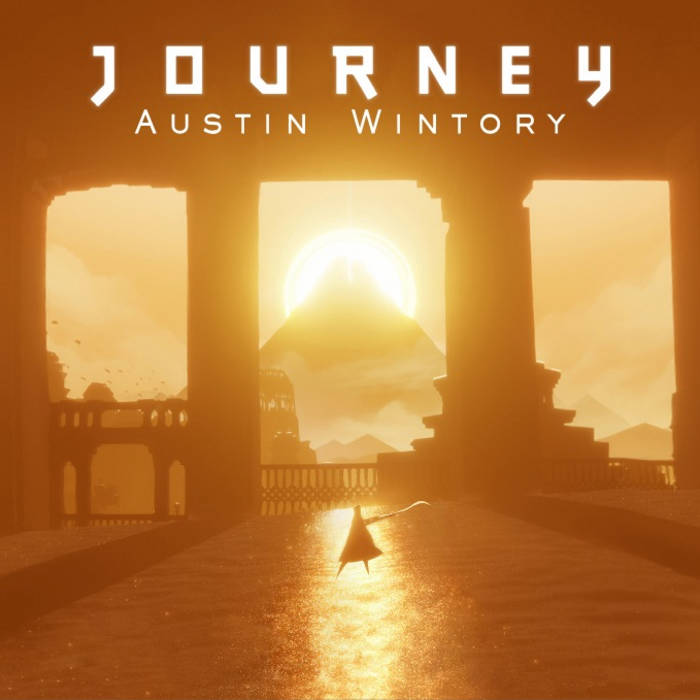
20. Journey
More people should have Austin Wintory’s score for Thatgamecompany as their answer to what would be their life’s soundtrack. Airy one moment and grounded the next, carefree now and eventually concerning, fluctuations of existence—experienced by our red robed character as they move toward a mountain in the distance—that are otherwise natural become evocative. Supernaturally so. “Apotheosis,” in fact, dampened one’s fear of the end: The powerful and constant transformations in its strings hold a promise that what comes after will be indescribable beauty, will be pure serenity. If only for a moment, the search for true calmness in life ends. [Nguyen Le]
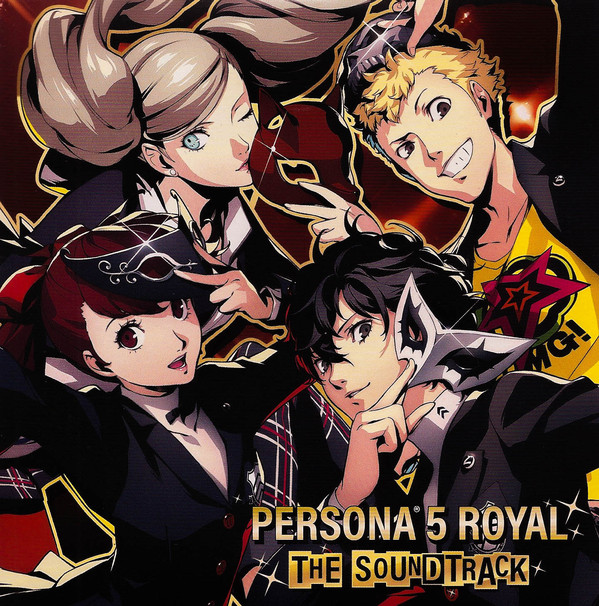
19. Persona 5: Royal
Persona 5: Royal is the definitive version of what is personally in my top games of all time, and a big factor in that is the overwhelming style that exudes from the whole thing. The soundtrack is a stand out part of that: the base game hits the ground running with the opening, “Wake Up, Get Up, Get Out There,” and continues with a slew of absolute bangers such as “Life Will Change” and “Rivers in the Desert,” along with some more low-key tracks like “Beneath the Mask” and “The Days When My Mother” was there. So how could they top this in this updated release? Throw in some new heavy-hitters like “Colors Flying High,” “Take Over,” “I Believe,” and a personal favorite in the whole game, “No More What-ifs.” [Arron Reyes]
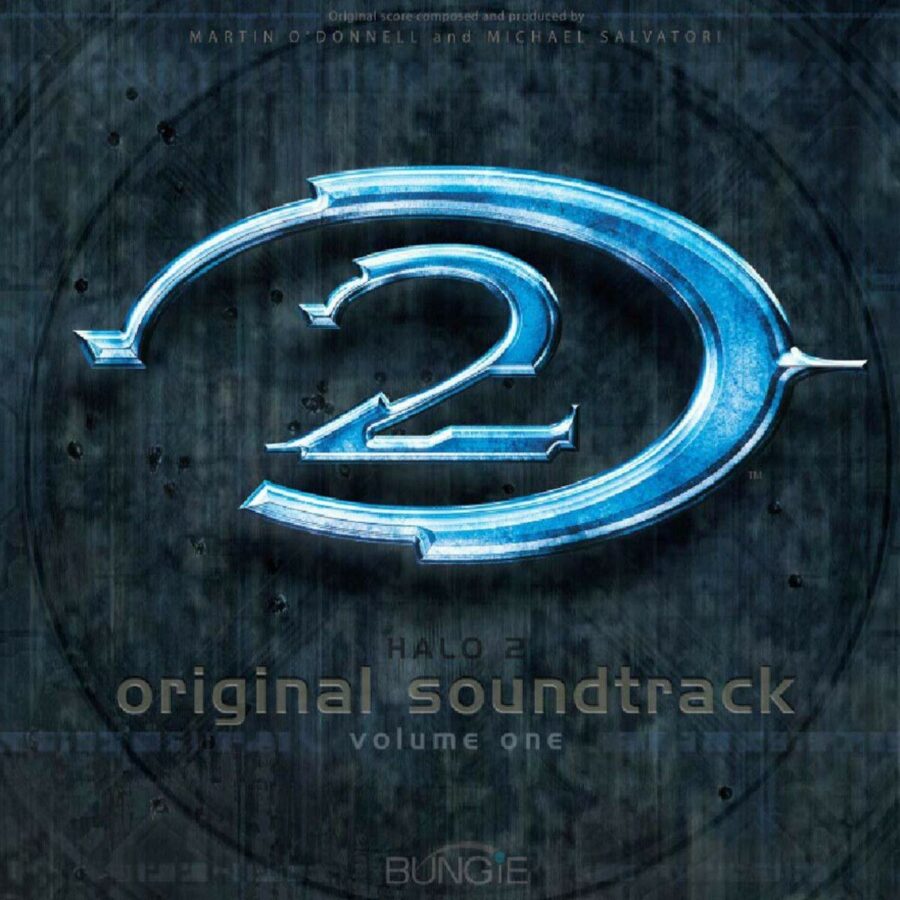
18. Halo 2
Frankly speaking, all this explanation needs is a link to the “Mjolnir Mix” of the traditional Halo theme and this entry would be all wrapped up. That aside, Halo 2’s soundtrack was a huge deal, with the album’s CD (remember those?) release being as exciting as the game’s. The otherworldly science fiction inspiration underscores a steady and triumphant rock and electronic beats that are a perfect match to the Master Chief’s kick-ass and take names death dealing. There’s a certain “hell yeah, this is cool” power that the score uses to do a significant job of selling the Halo atmosphere.
[Travis Hymas]
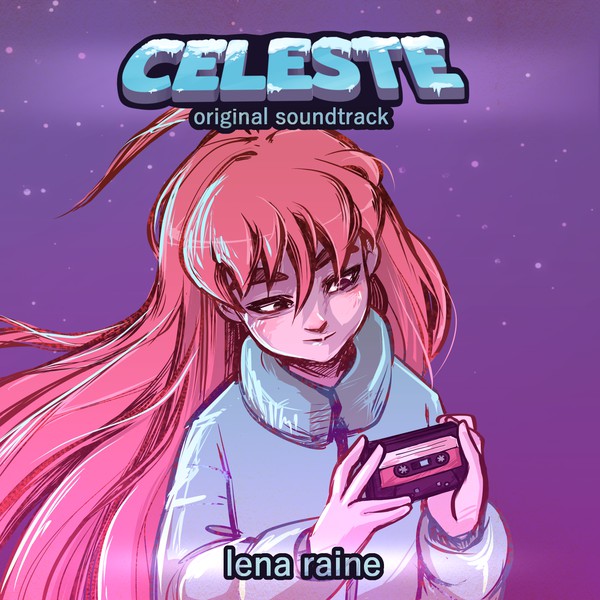
17. Celeste
Maddie Thorson’s Celeste, from the very first level, inspires players to take their “First Steps” up the dangerous mountain with one of the best contemporary first level tracks out of the indie game industry. The soundtrack, composed by Lena Raine, is a hybrid of electronic music and 8-bit throwbacks, the usual fare on its face, but it absolutely transforms in the context of the gameplay. Deemed something like a concept album by some, the “Prologue” track establishes a motif for Maddelin, and it carries players through each of the game’s stages, and even undergoes changes unto itself by the end.
[Evan Griffin]
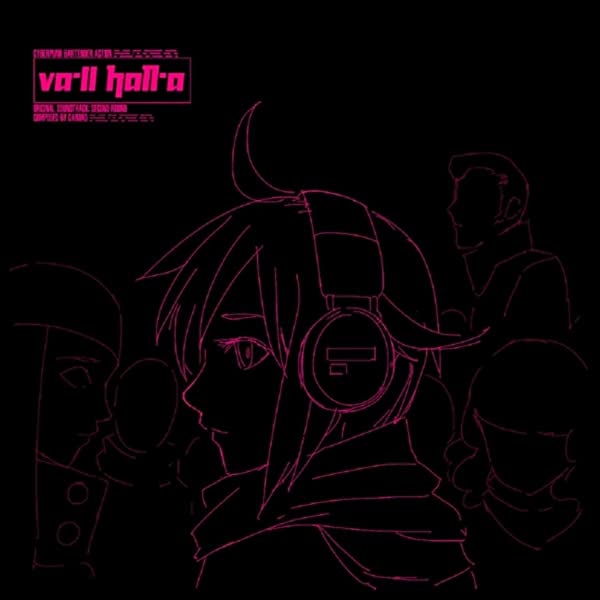
16. Va-11-Hall-a: Cyberpunk Bartending Simulator
Oh boy, it’s that time again! An excuse to ramble on about possibly my favorite indie game, Valhalla! The neo-futuristic cyber noir aesthetic of Valhalla‘s setting seep beautifully into its soundtrack, giving off a feeling of being in a seedy bar in some hole in the wall in Neo San Francisco. The very synth-heavy tracks brought to us by composer Garoad are incredibly catchy, and in a rarity in games, exists Diagetically in the universe by way of a programmable jukebox. I am a man of few physical possessions, with all of my media exclusively digital, so it should be a testament to its lasting quality that I have a limited edition pressing of the complete Valhalla soundtrack on vinyl. Also, please look forward to the sequel, N1r-Va-na to take the number 1 spot on our best game of 202X list, coming “Soon™”! [Miles Stanton]

15. Mega Man 2
It may have been hard for players to comprehend when playing Mega Man II on the NES in 1988 through CRT speakers and interrupting sound channels from in game sound effects, but the 22 tracklist provided by Takashi Tateishi (credited as Ogeretsu Kin) would go down as the best music in the Mega Man franchise, and some of the best game music of all time. Outward about his influence from Yellow Magic Orchestra, Mezzoforte and T-Square, his influence is clear through tracks like Heat Man, Crash Man, Flash Man and fan favorite tracks like Dr. Wily’s Map and Dr. Wily’s Castle 1 and the Credits theme.
[Evan Griffin]
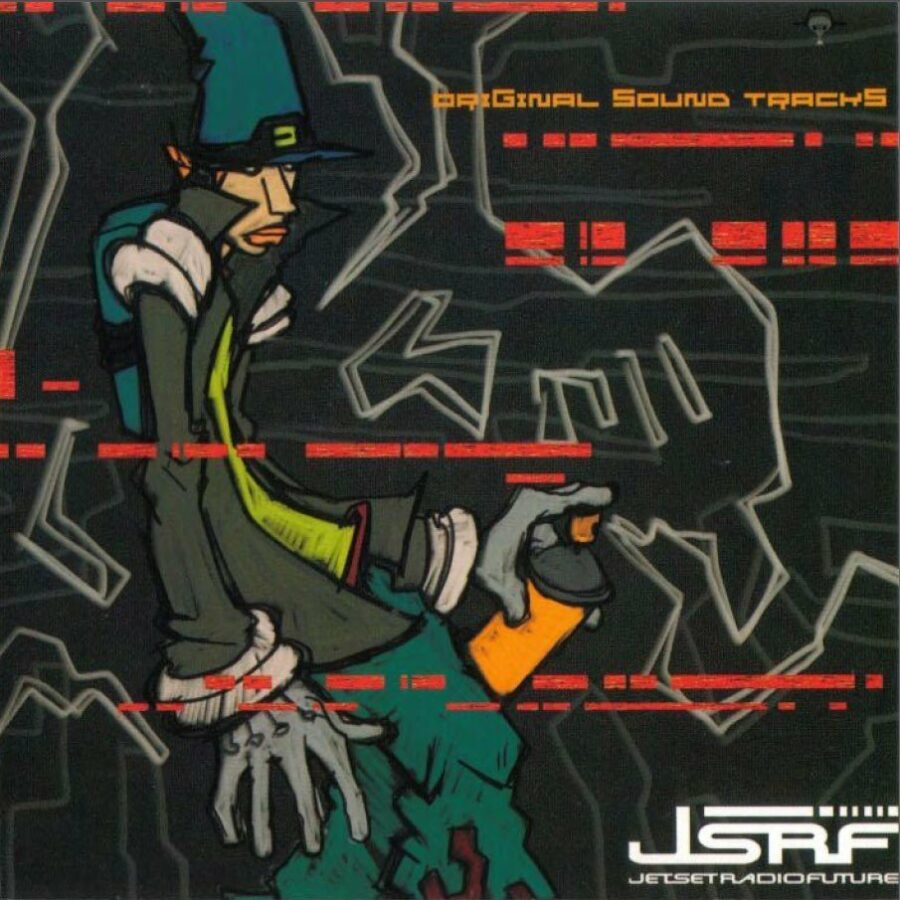
14. Jet Set Radio Future
I think the most telling mark of the quality of the Jet Set Radio soundtrack is how many tributes have been made to it. Jet Set Radio’s soundtrack is so iconic and so infectious, it has not only survived a doomed console but stood the test of time of being an absolute JAM 20 years later. The internet’s very own Funky Uncle, Hideki Naganuma unleashed what is undeniably one of the medium’s catchiest soundtracks, putting it in legendary status alongside Katamari Damacy and the Resident Evil 1 director’s cut basement theme (or as I like to call it, “Why are there clowns farting in my basement?”) JSRF’s soundtrack is all killer, no filler, one of rare soundtracks in gaming, or in music in general really, that I can listen to all the way through without skipping tracks to keep a mood going. It is a start-to-stop hip-hop/rap/rock/punk/J-pop jamboree, a high-energy concept album if the concept was “Outrun the cops in style”. Basically, Jet set radio is an electronica concert held by a VERY horny DJ, that also just so happens to be a REALLY good game.
If you are looking for more jams in whatever genre/style JSRF has, I HIGHLY recommend 2MELLO’s “Dreams of Tokyo-to” and Naganumas very own “Ain’t nothing like a funky beat”
[ Miles Stanton]
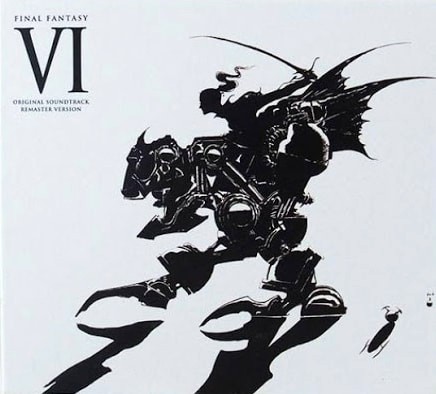
13. Final Fantasy VI
On the brink of a career peak, Final Fantasy composer Nobu Uematsu delivered the score for one final game on the SNES. Even he was beside himself with the results, claiming in a 1995 interview “I could quit game music with no regrets.” “Terra’s theme,” “Kefka’s Theme,” “Erik and Mash”, and Locke all not only have their own leitmotifs in the game’s score, but they each also have wildly different arrangements throughout to mirror the tone of the story. The game has infinitely memorable stages thanks to their score arrangements like “Mt. Koltis,” “The Mystic Forest,” and “Mystery Train,” with massive events like the game’s iconic “Decisive Battle” at the midpoint, and we don’t even have the time to scratch the surface of the Opera House sequence. These are only minor details that scratch the surface for a score of such quality that it speaks for itself regardless of any medium. [Evan Griffin]
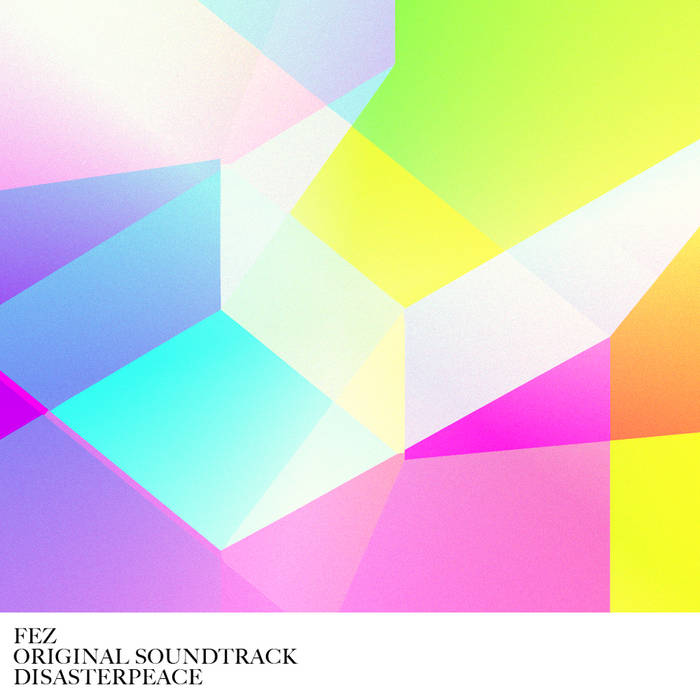
12. Fez
The now famous Disasterpiece (It Follows, Hyper Light Drifter) was very open about the development of the game with Phil Fish and Renaud Bedard in 2010. While he tried to write the score in a bubble, he admitted an undoubted influence from the works of classic rock like Yes, but also the most classic of classics by Igor Stravinsky and Claude Debussy. Fez illustrates a soundscape that mirrors its landscape. As players control Gomez through a wildly unknown third dimension, the bitcrushed orchestral sound feels welcoming, familiar, but simultaneously haunting as their literal perspective splinters onto a Z-axis from the typical tropes of a sidescroller. This foundation not only comes across in a particularly iconic puzzle through the game but even in frequencies of the soundtrack when visualized in spectrogram software. [Evan Griffin]
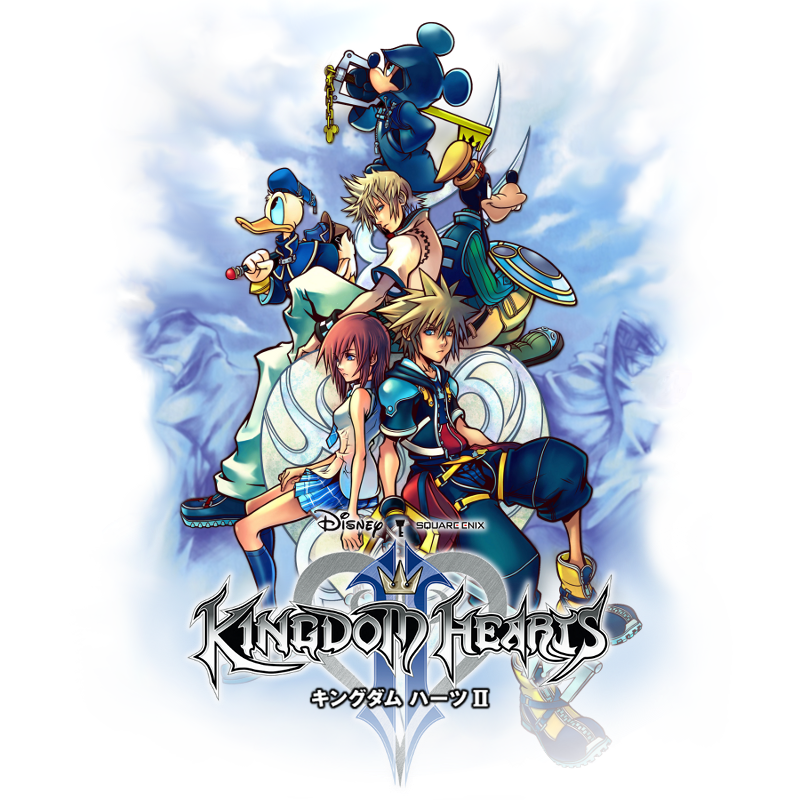
#11 Kingdom Hearts II
Kingdom Hearts’ score already blended the high fantasy energy of its Final Fantasy inspiration and the whimsy of its Disney worlds, it was Kingdom Hearts II where composer Yoko Shimomura reached a perfect blend of both and created something truly iconic. While the franchise is often recalled by its admittedly cool Hikaru Utada themes, it’s Shimomura’s haunting and expressive score that makes the game shine. Kingdom Hearts II also gets to enjoy exciting renditions on some iconic Disney music as well, including the infamous Mickey Mouse Club theme that was a perfect match for the Timeless River world. The themes that introduce Organization XIII and Roxas for the rest of the series are some of the most memorable melodies that weave into pieces of music both old and new, and the opener “Sanctuary” makes for an incredible turn by Hikaru Utada for a J-Pop song to follow none other than “Simple and Clean.”
[Travis Hymas]
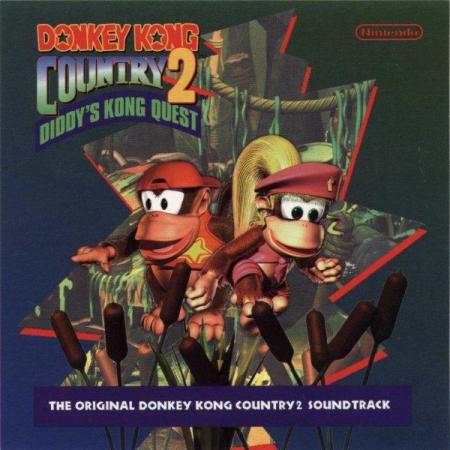
10. Donkey Kong Country 2: Diddy Kong’s Quest
The music of Donkey Kong Country 2 does more than encapsulate the atmosphere of the game’s stages across jungles, mountains, caverns, and oceans, and pirate ships. Composer David Weise, employed by the UK studio Rareware in the 1990s, expertly optimized the sound engine on the sound chips for SNES cartridges to make music that could modulate like no other in the era, creating tracks that conveyed everything from Vangelis and Phil Collins to swashbuckling adventure films. “Forest Interlude” and “Stickerbrush Symphony” are standout tracks that emulate an ethereal, meditative sonic atmosphere that has taken on a new life and influenced hundreds of contemporary artists in the Soundcloud era. [Evan Griffin]
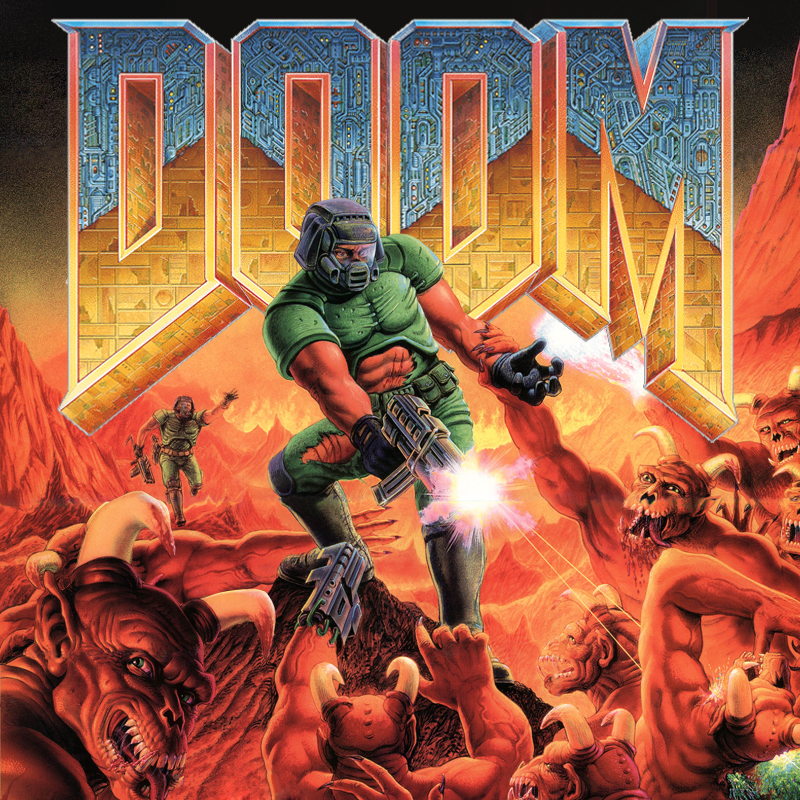
9. Doom (1993)
When the premise of a game is shooting and slashing your way through demons from Hell, you need a soundtrack that inspires that level of badass, and you’ll be “Kitchen Ace and Taking Names” in no time listening to the level music of Doom I and Doom II. There’s something about fast-paced techno/metal music playing loudly behind you that adds to the intensity and fun of the Doom franchise that a lot of other games don’t fully grasp. The developers at id Software hired Bobby Prince who found inspiration in bands like Pantera and Alice in Chains when creating the soundtrack to this monumental game (Hell, they shamelessly ample “Them Bones” in a track for Doom II). The soundtrack in this game evolved into the insane metal music that the most recent additions in the franchise have become known for. There’s not a soul who has played video games that don’t know E1M1’s “At Doom’s Gate” or “Intermission From Doom” for very very good reason. [Tyler Carlsen]
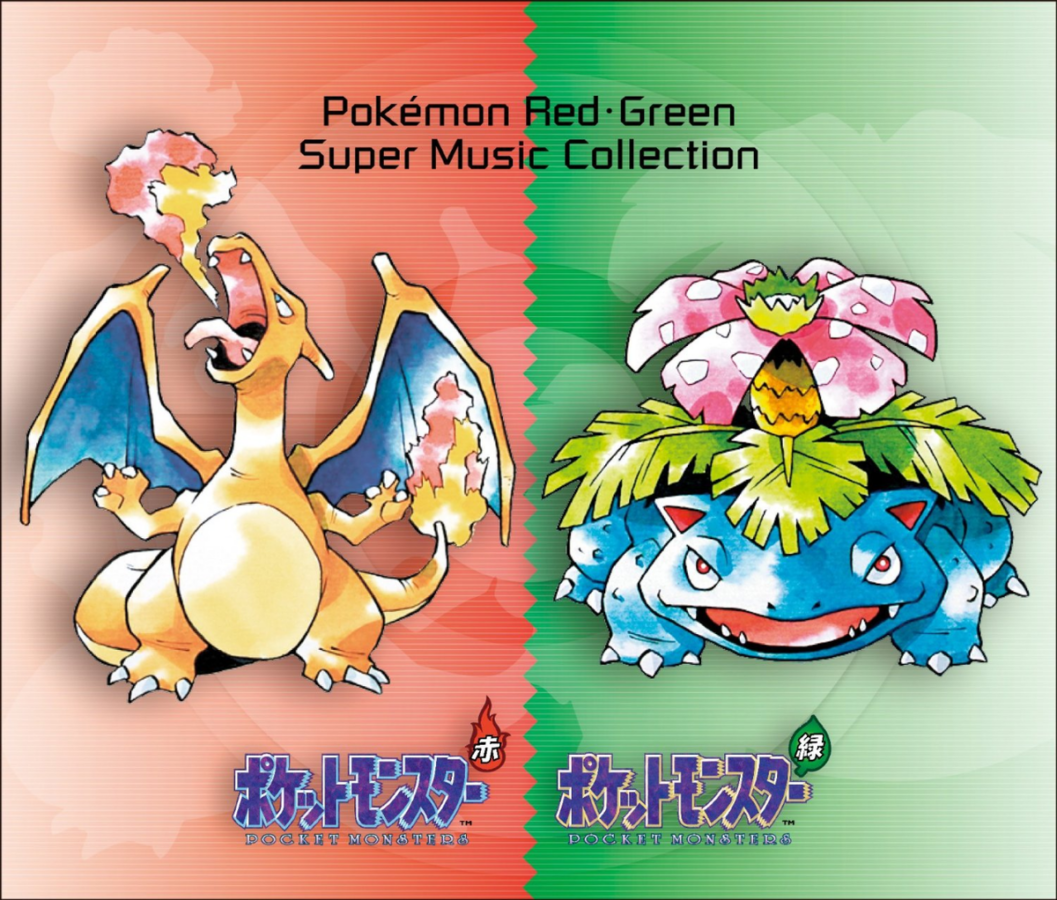
8. Pokémon Red, Blue/Green, and Yellow Version
The original Pokémon score is a testament to the clever innovation necessary to make any kind of distinguishable music for games on such limited hardware as the Game Boy. A mix of catchy and repeatable beats fill the towns of Kanto while the tone shifts in battles both big and small. Those battle themes in particular are an accomplishment in maintaining tone and repetition without becoming truly monotonous. A good battle theme is extremely difficult to make worth experiencing hundreds of times, but R/B/Y made it look easy.
[Travis Hymas]
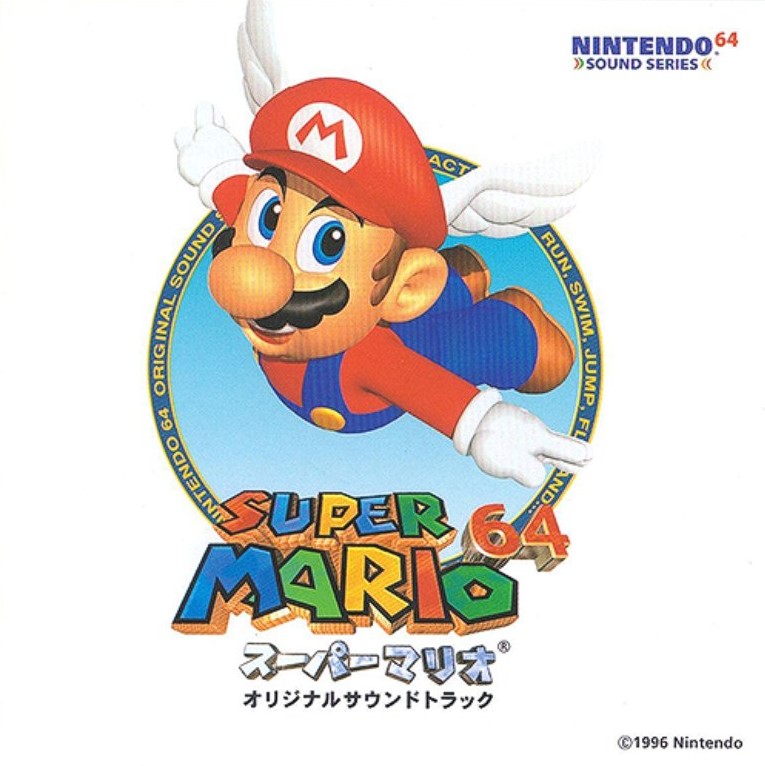
7. Super Mario 64
When you hear a score from a video game, it’s rare that you can identify the exact stage/level it was played on. Even to this day, I can close my eyes and listen to the soundtrack from Super Mario 64 and see the menu screen with Mario’s face and the ability to yank on his nose and hat, and I can hear that joyful score when you enter the castle’s main area and you begin to explore the rooms. Composed by Koji Kondo using the best elements of past Mario games, this soundtrack is one of the best of the Mario franchise, creating now hyper-nostalgic liminal spaces out of tracks like the file select screen, the “Road To Bowser”, and “Dire Dire Docks.”
[Tyler Carlsen]
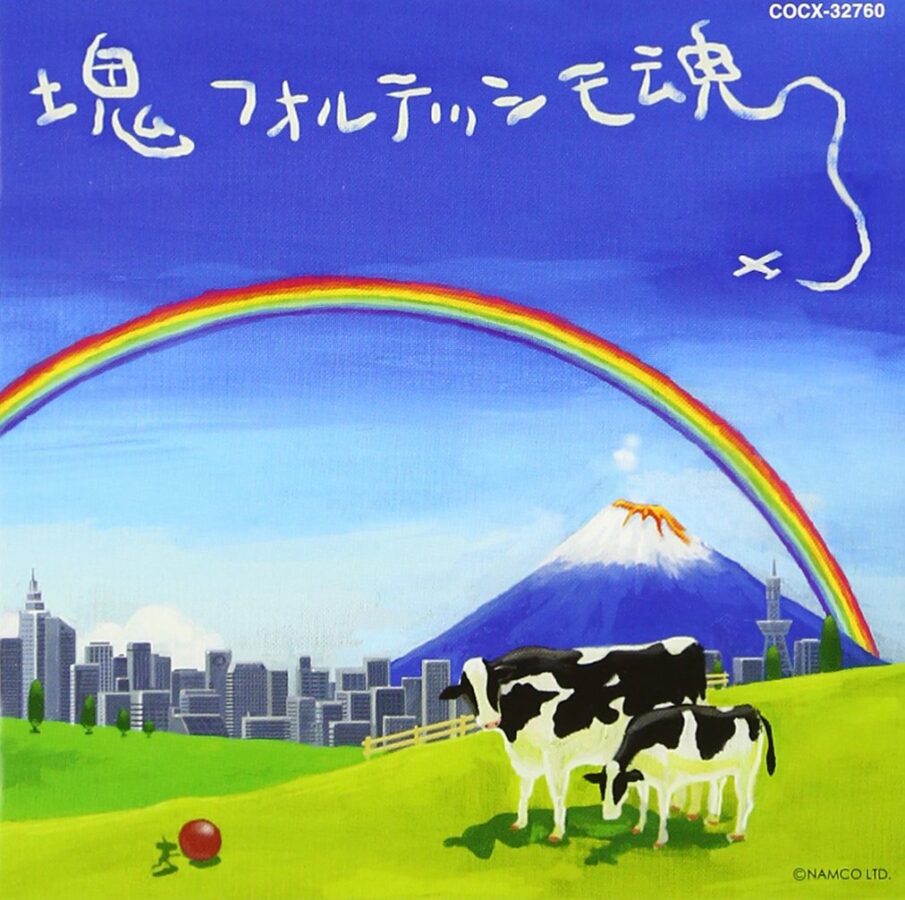
6. Katamari Damacy
Na-nana-nanana-nanananana-katamari-damacy!
Namco’s arcade saga of a clump spirit rolling endlessly to please royalty is accompanied by a soundtrack published by Columbia and composed by Yuie Miyake. Katamari Damacy’s score bridges Shibuya-kei and Picopop genres and features the vocals of early 2000’s anime voice actors. The game features orchestral, a capella, and full vocal pop tracks with the high production value to counter the game’s minimalistic stages, carrying players through uplifting, off-beat, and outright strange scenarios across intergalactic planets. Lonely Rolling Star in the game’s first stage sets a precedent for one of the greatest video game soundtracks of the PlayStation 2, and of all time.
[Evan Griffin]
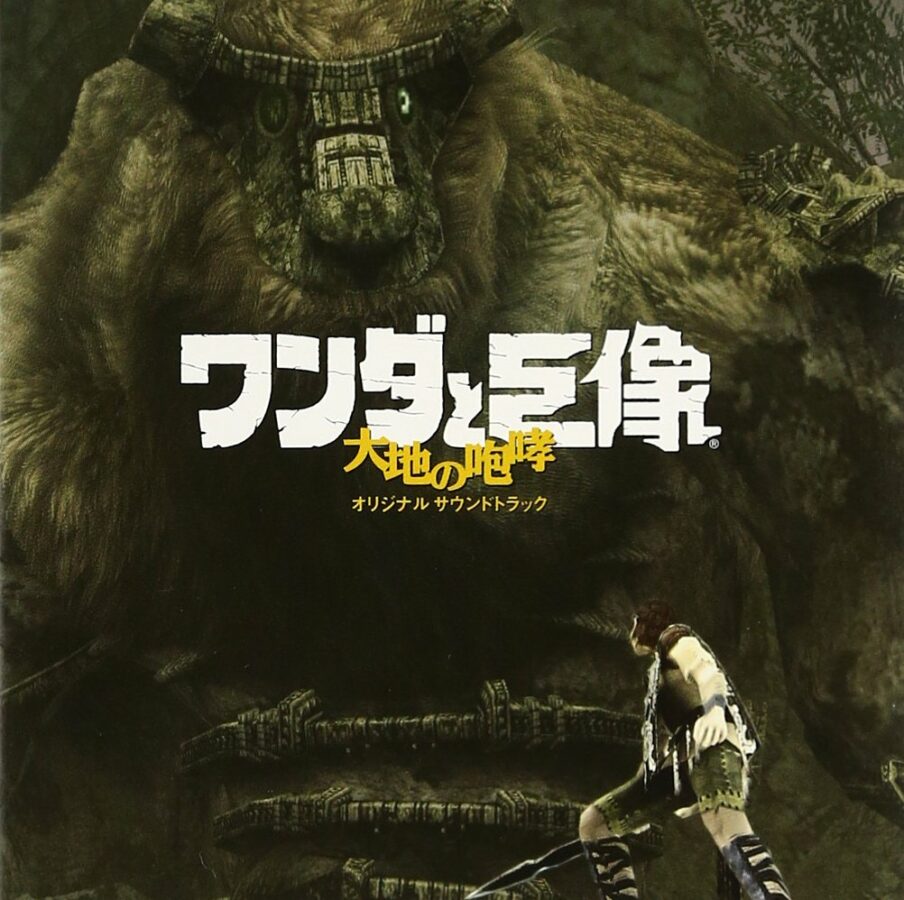
5. Shadow of the Colossus
Kow Otani’s eminent score for Shadow of the Colossus’ chartered the scope and epic mythology through symphonic language in future generations of gaming. A score that intersects intimate moments of moral contemplation, in pieces such as “The Farthest Land”, with high-stakes blockbuster tone, “The Opened Way”, makes for a definitive example of subversive storytelling through music and visuals. Shadow of The Colossus’ desolate, idyllic overworld in which you navigate its’ identity warrants self-reflection between each Colossi, eliciting an ultimate feeling of dread and remorse with each elegy that greets you upon each confrontation. Team Ico creates a masterwork in ambiguous storytelling, and their musical choices only elevate this. [Dylan Griffin]
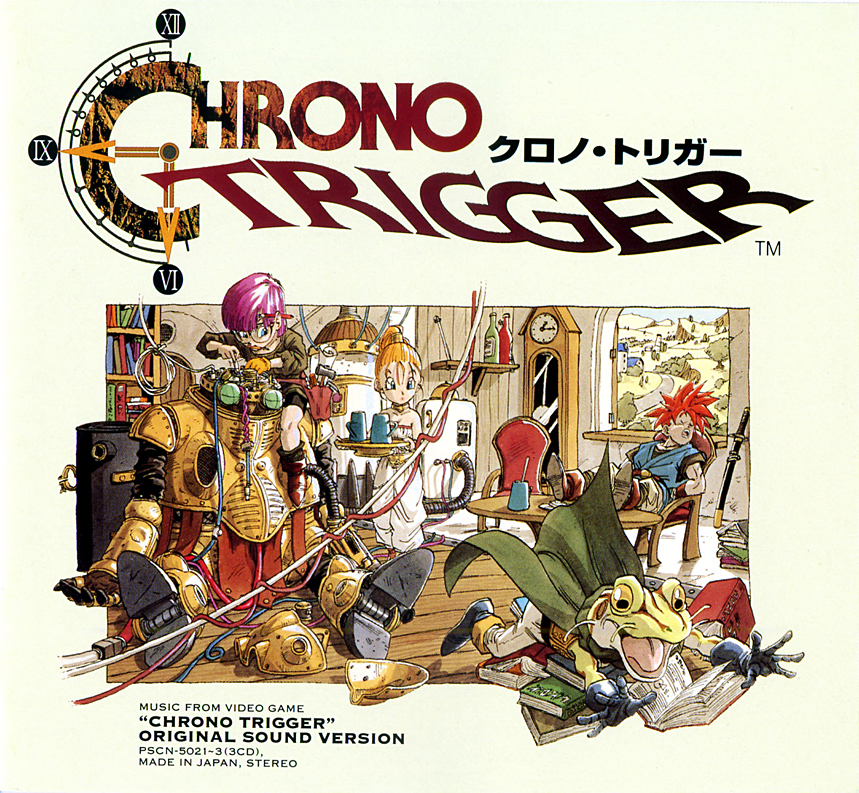
4. Chrono Trigger
Squaresoft’s beginning of the Chrono series also saw the beginning of Yasunori Mitsuda’s (Xenogears, Chrono Cross) career in-game score composition, alongside work by Final Fantasy composer Nobu Uematsu. The complexity of its composition on a SNES sound cartridge blows away launch titles like A Link to the Past, with a difference from 10 to 30 compressed soundfonts used to create the score of the historic time travel RPG uses its minimalistic fundamentals of its composer to deliver both the globe-trotting anthems of a Final Fantasy adventure and the stunning clockwork of a time machine drive the score and make its way into players hearts with every new region and exciting encounter in one of the most prolific roleplaying games ever made, and the beginning of a definitive franchise for Square Enix. The result is charming tracks like “Wind Scene,” “Corridors of Time,” and “Memories of Green.” Even tracks like “Schala’s Theme” have taken on a new life by being sampled in tracks like Wiz Khalifa‘s “Never Been” [Evan Griffin]
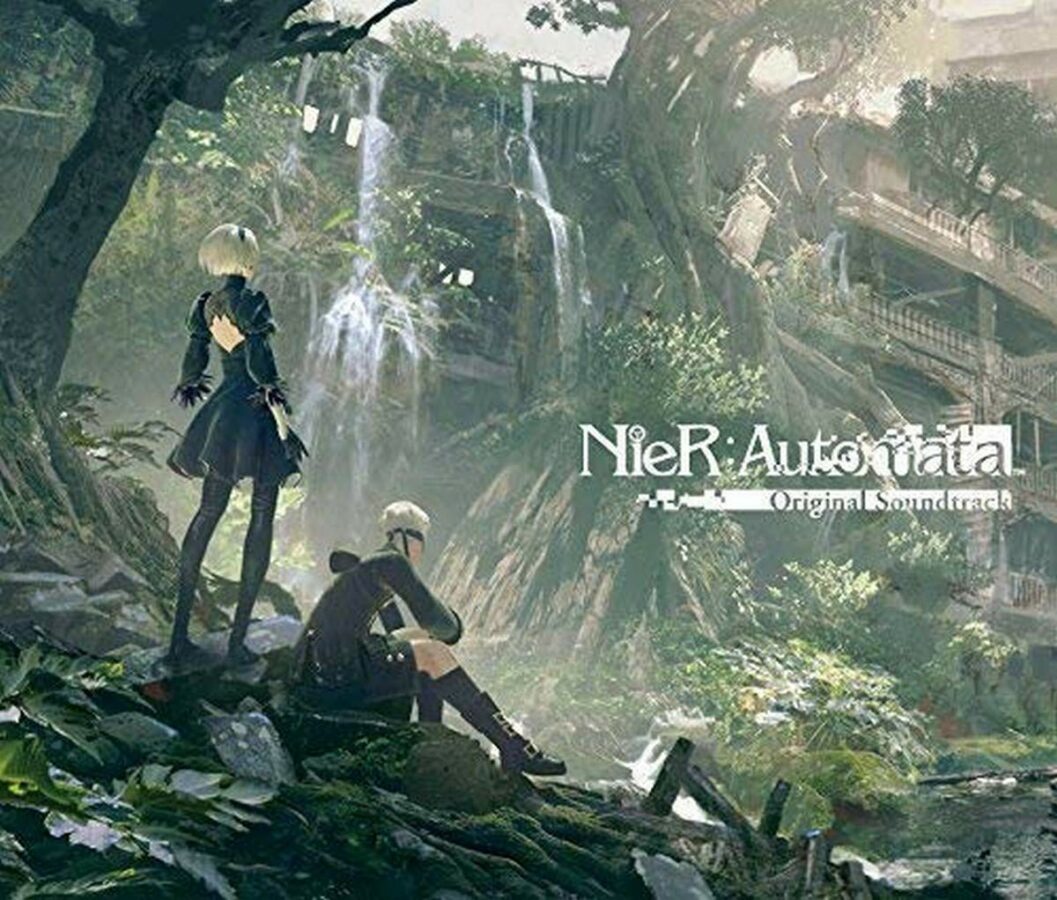
3. NieR Automata
Yoko Taro’s masterful collaboration with Square Enix and Platinum games features a soundtrack by Keiichi Okabe and MONACA that is a chilling marriage of instrumental and vocal music that is adaptive to both the motifs throughout the game’s score as the story and characters become increasingly hopeless, but also adaptive in the action of the game’s most thrilling sequences. The operatic vocals of “A Beautiful Song” drive a boss fight with a machine named Simmone in one of the most stunningly meta pieces of music written to synchronize with any gameplay. “City of Ruins” is a melancholic anthem for traversing a world steadily draining of life over the course of an ongoing apocalyptic war that changes its tempo as the story grows darker. Most essentially, as players achieve Ending E to push through to the game’s ultimate finale, we hear the game’s development team come together in chorus over the credits ballad, as players also metaphorically assist one another in fighting for a vision of the future. This track, “Weight of The World (End of YorHa)” is an achievement in bone-rattling emotion, resulting in one of the greatest moments the medium of video games has ever achieved, and it’s just one of many throughout NieR Automata to do the same thing. [Evan Griffin]
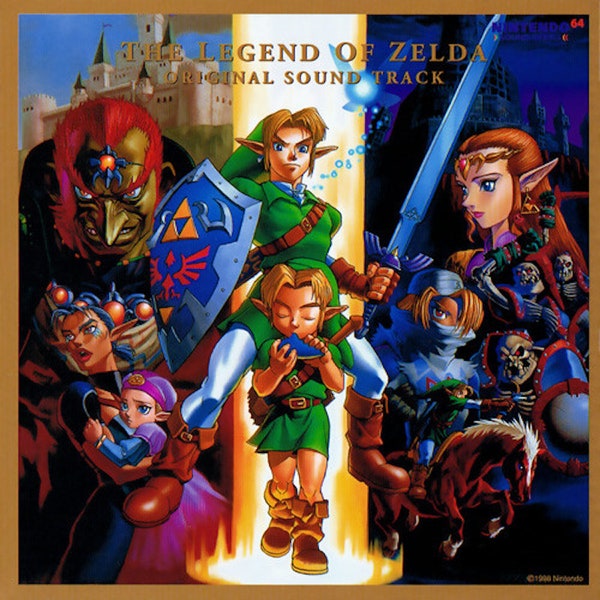
2a. The Legend of Zelda: Ocarina of Time
The best game soundtracks set the mood and help shape amazing memories. The magic of the Ocarina of Time soundtrack is how this forever memorable music becomes tied directly into gameplay. As you progress through the game and visit new places, you’re introduced to new locations each with its own distinct musical themes, and each with a song to perform on your Ocarina to summon spells, unlock puzzles, or travel. Koji Kondo managed to create songs that use the small number of notes that players can recall with ease, and memorable phrases to stick in their head while also working within the limits set by the game’s titular instrument. Listening back to tracks like “Gerudo Valley,” “Lost Woods,” or “Lon Lon Ranch” immediately conjures images of those areas, and still maintain their relevance today even separately from the game that surrounded them. Using the ocarina to travel around the world stays fun throughout the adventure when it otherwise could have easily been a very frustrating mechanic. Not only that, but those songs performed by the players maintain motifs in the score surrounding them pertaining to characters and locations, allowing the world of Hyrule to exhale life into its first 3D iteration. [Jose Cordova]
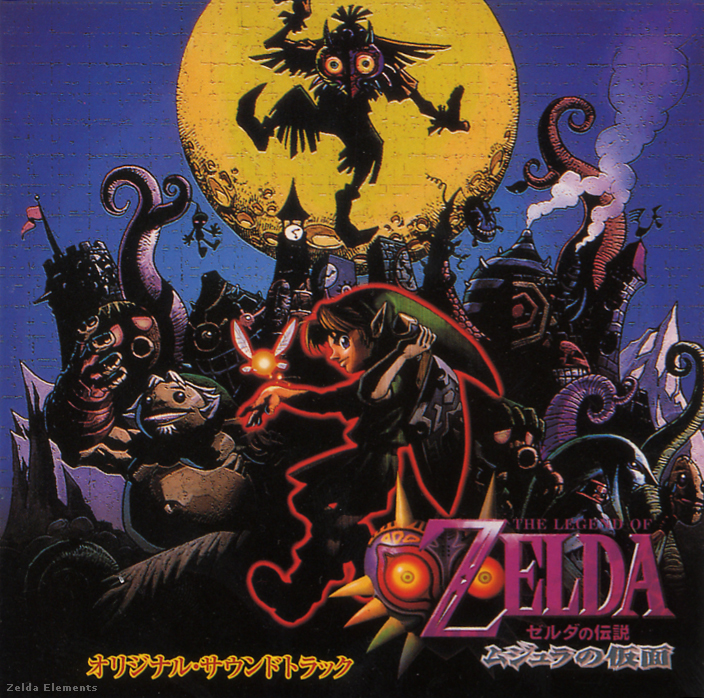
2b. The Legend of Zelda: Majora’s Mask
A game whose score is forever inseparable from its Nintendo 64 twin brother, Koji Kondo traverses the surreal overworld Termina, and the flow of time of Link’s crystallized identity in Majora’s Mask. The score, which elevates the absurdist and exuberant residents of Clock Town are left disordered, fleeting, or greeting death as The Moon plummets into the atmosphere. The town’s theme alone is worth all the praise, as it changes each day hastening in pace and arranged with increasing dread until it becomes an entirely different song by the end of Day 3. Saturated with sadistic air in their composition, the tracks for “Deku Palace” and “Stone Tower Temple” are haunting, while others ensue melancholic sonnets such as “Oath To Order”, a summoning hymn for the Four Giants. “Final Hours” orients an ambient, all-encompassing lament upon the final 12 Hours of the in-game clock, as the patterns of the sky redden and bend while The Moon manipulates the atmosphere of the terminal world beneath [Dylan Griffin]
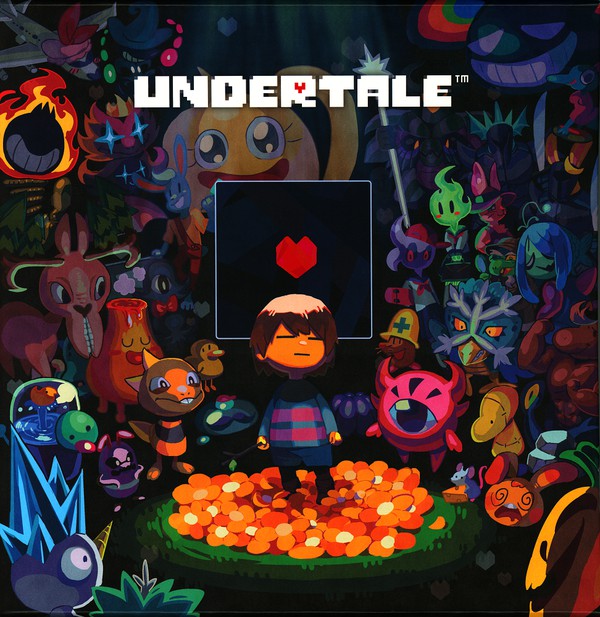
1. Undertale
The impact of Toby Fox’s work can be exemplified through the reach of “Megalovania” alone, a track known both for an exhilaratingly challenging final final final boss, but also for its origins in the foundations of Undertale’s inspiration: the Tumblr sensation of Homestuck.
Beyond this, Undertale’s score, composed entirely by Fox save for a few collaborations, is a masterful homage to the 16-bit era of iconic RPGs, Earthbound among its most clear influences. The resulting soundtrack is a charming one, filled with rich themes and leitmotifs that string a personable cast of characters together, and the best boss fights of the decade backed by pieces such as “Bonetrousel,” “Spear of Justice,” “Death by Glamour,” and “Bergentrückung / ASGORE,” all tied together in the second run’s final boss theme “Hopes and Dreams.” The game’s quieter moments convey nostalgia and longing, from the “Ruins” to the ending, all weaving through with the “Memory” theme to carry players through this touching adventure in the underworld. [Evan Griffin]
Congrats, you made it to the end of the list! Here’s that playlist we mentioned up top. (Here’s the YouTube link for those who use YouTube Music, want the full original Nintendo OSTs, or are curious about extras that didn’t make the cut)
Advertisement







